Mid-Career Survival for People Who Don't Want to be an Attrition Statistic When They Grow Up: Talk Transcript
This talk was originally given at AlterConf Portland in October 2016. The recording of the talk will not be shared because reasons.
Originally, I was not planning to share any of this talk content outside the safer space of AlterConf. After giving the talk and having many people who could not be there show regret about missing it, I decided to put together a transcript with some redacted slides. I am taking a risk by sharing this publicly, but I decided the reward of helping others was probably worth it. Please don't make me regret that.
Dear journalists who might get pointed at this if it becomes popular, please read Life and Times of a Tech Feminist Killjoy: Vultures Circle Overhead first and then consider moving on without comment. I have zero interest in my personal difficulties being misrepresented and put on display for wide, public consumption for the financial benefit of others.
Table of Contents
The Talk
Content notice: High level discussion of _-isms, bias, mental health impact, and other side effects of being from a marginalized or underrepresented group in tech. Brief discussion of medical issues related to pulmonary embolisms.
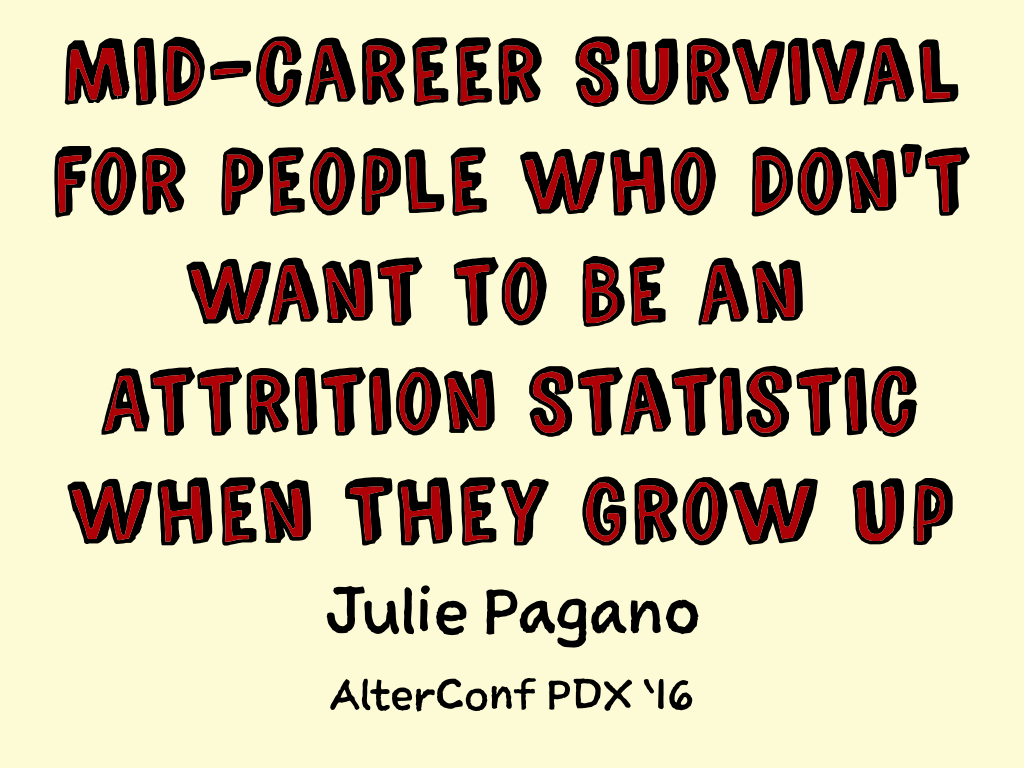

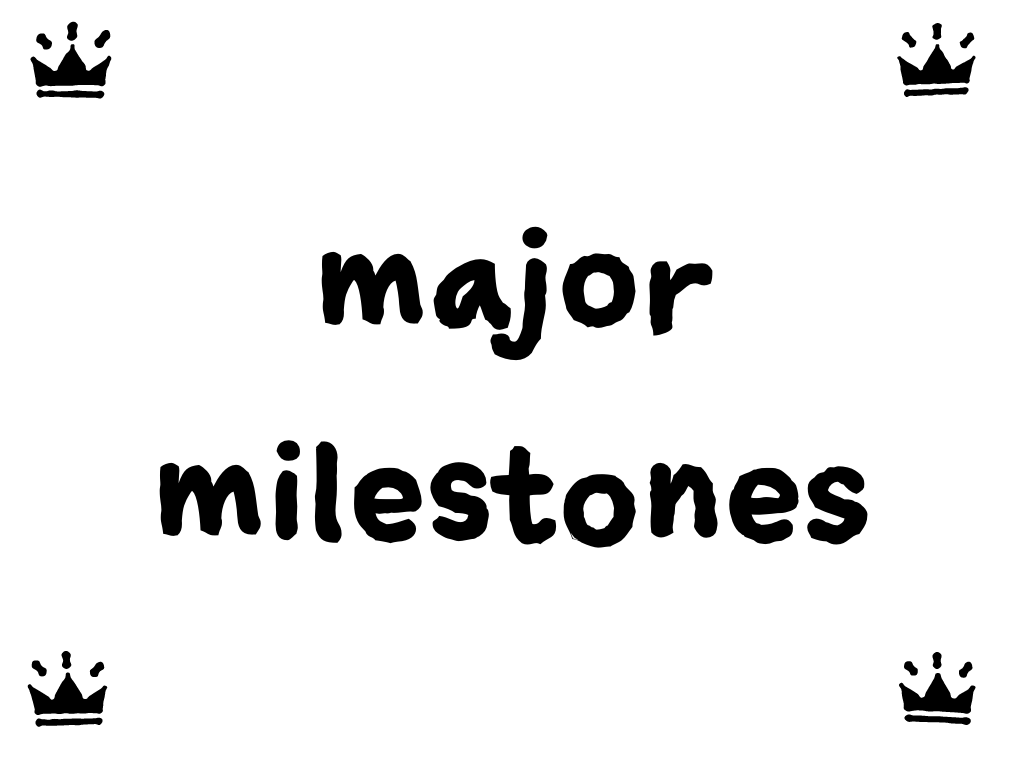
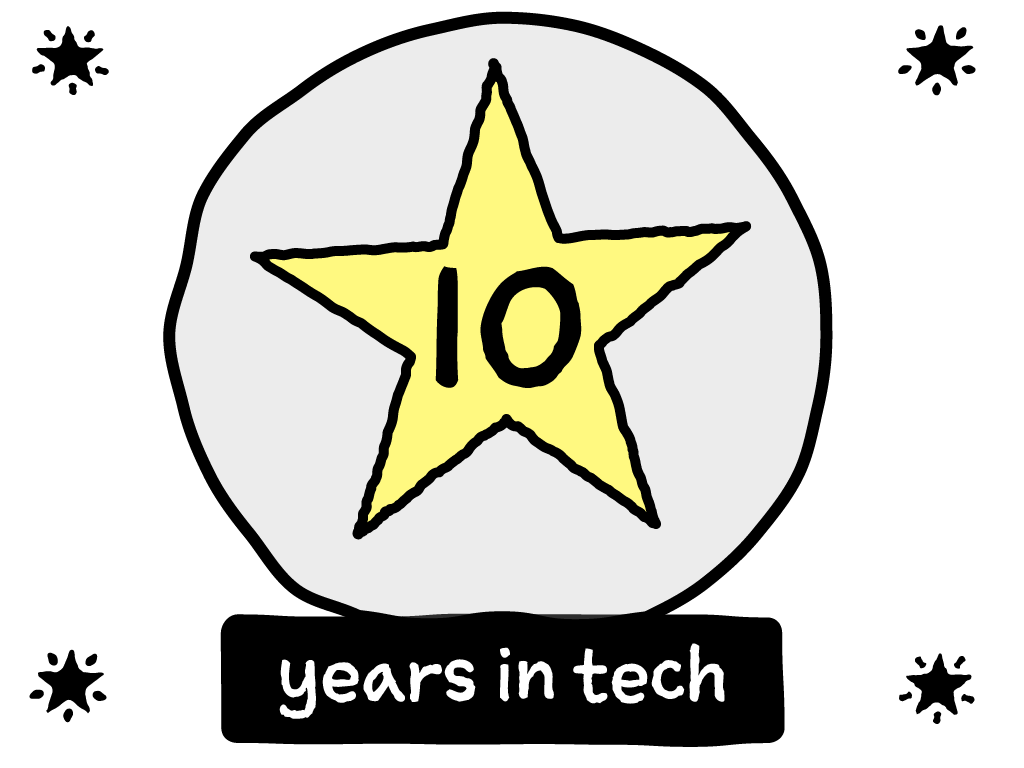


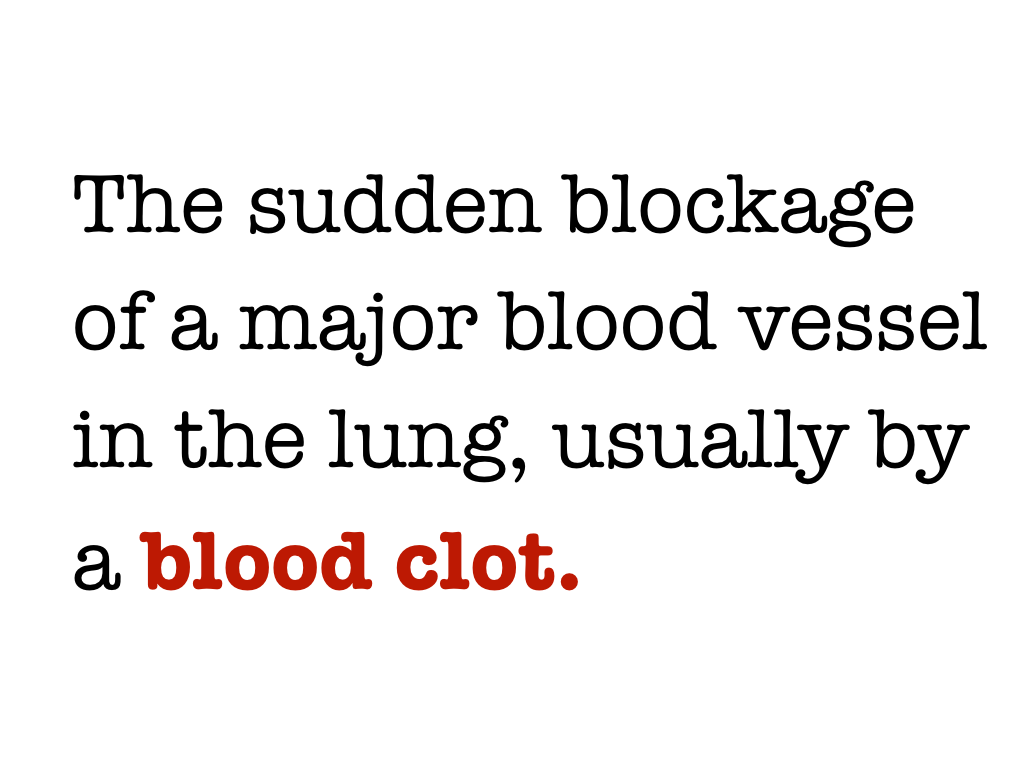
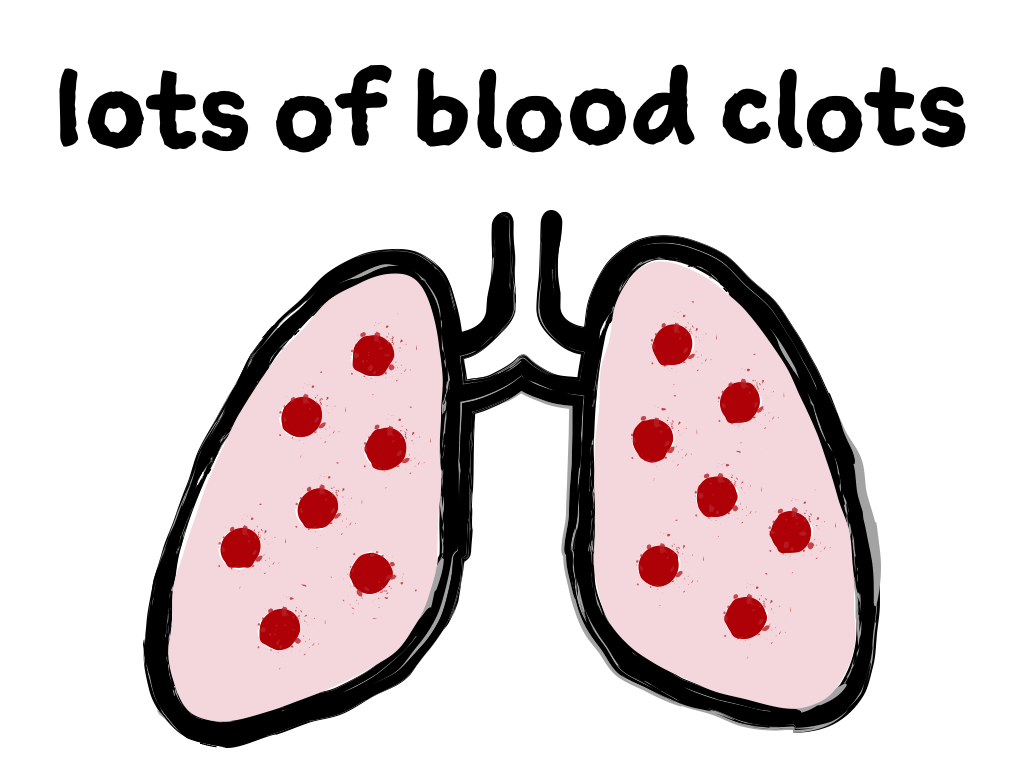
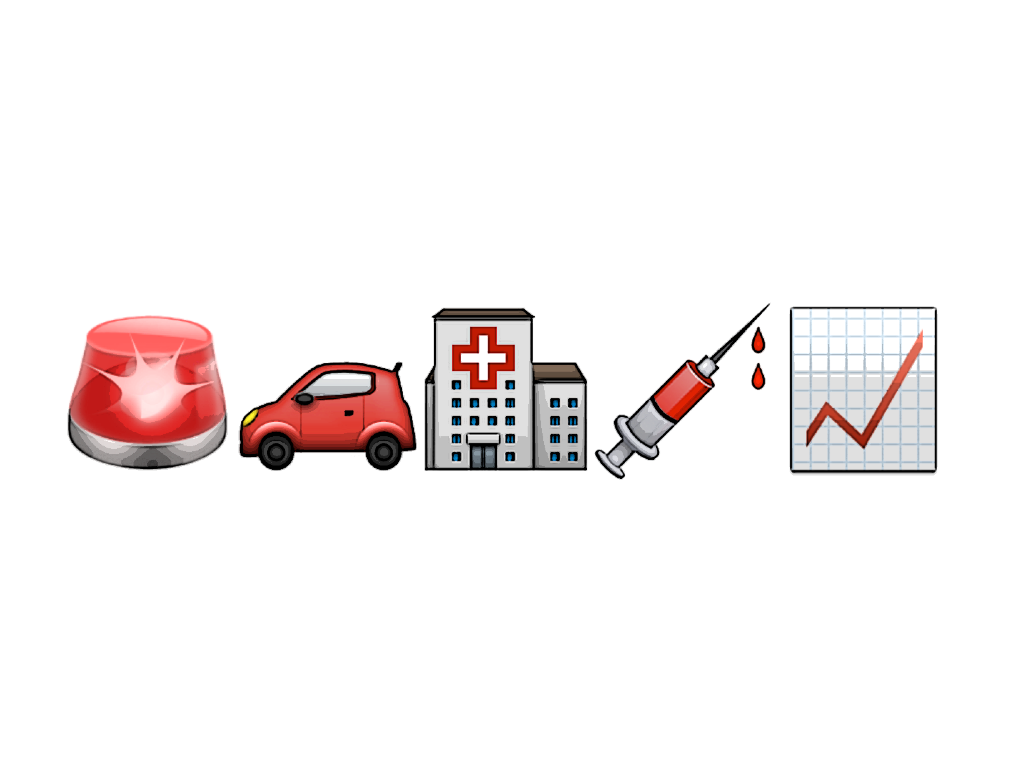
I started having trouble breathing and ended up driving myself to the emergency room where they performed lots of bloodwork and tests.
Eventually, the ER doctor came back to tell me that I had a pulmonary embolism. I knew this was bad, but just to really hit it home for me, he followed up by saying...
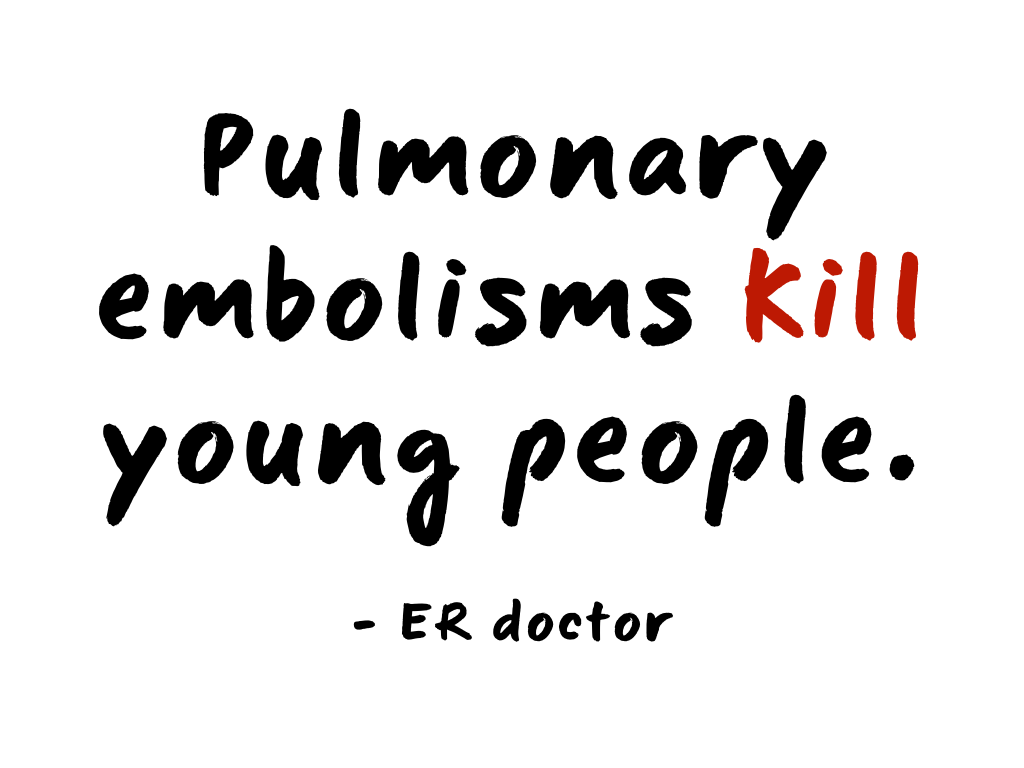
"Pulmonary embolisms kill young people."
This scared the crap out of me. I was no longer sure I would make it out of the hospital alive. Obviously, I did. I am here talking to you today, but...
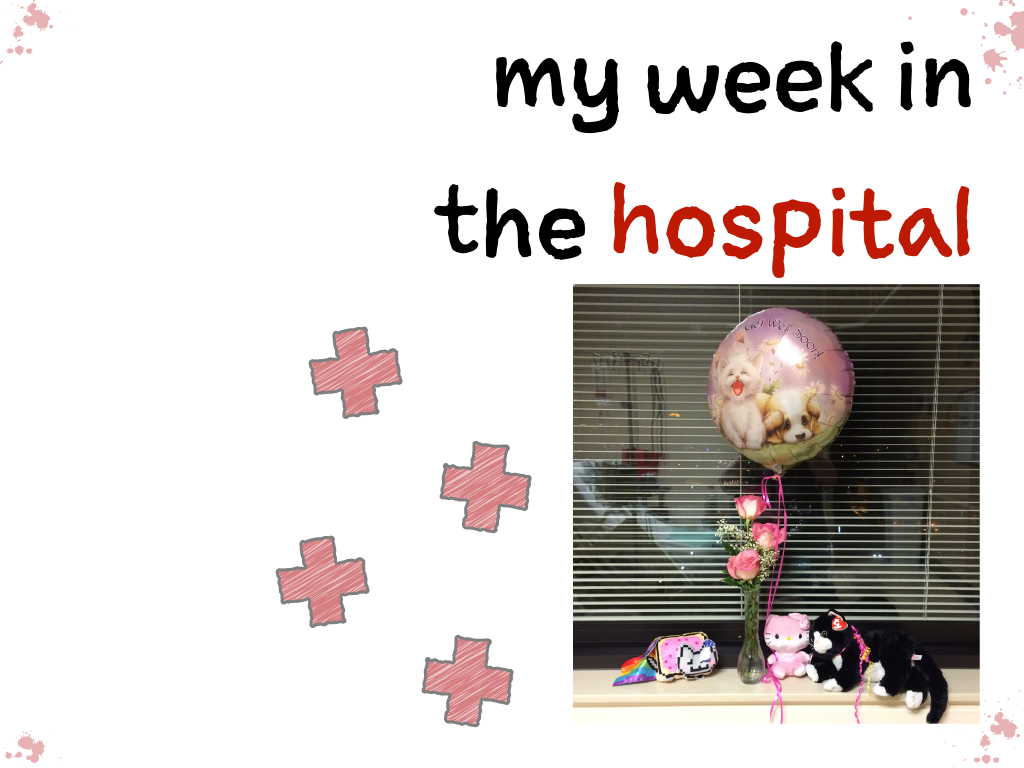
I spent about a week in the hospital, including several days in intensive care. It was a really traumatic experience.
Note: this slide has been redacted to remove photos of me from the hospital.
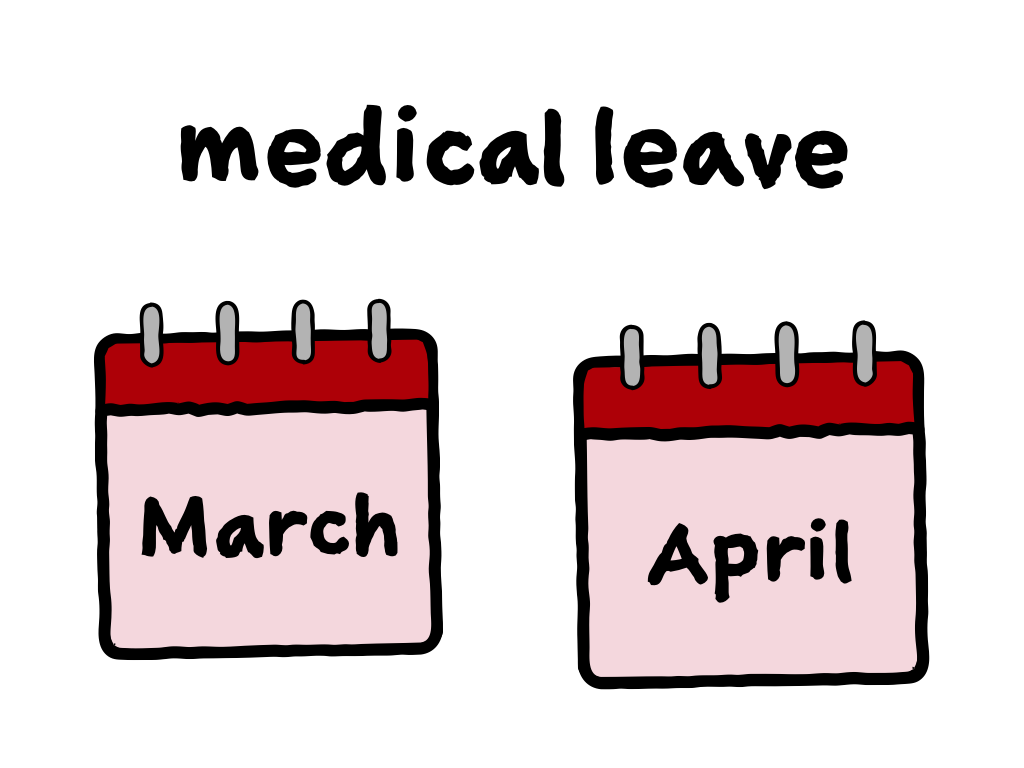
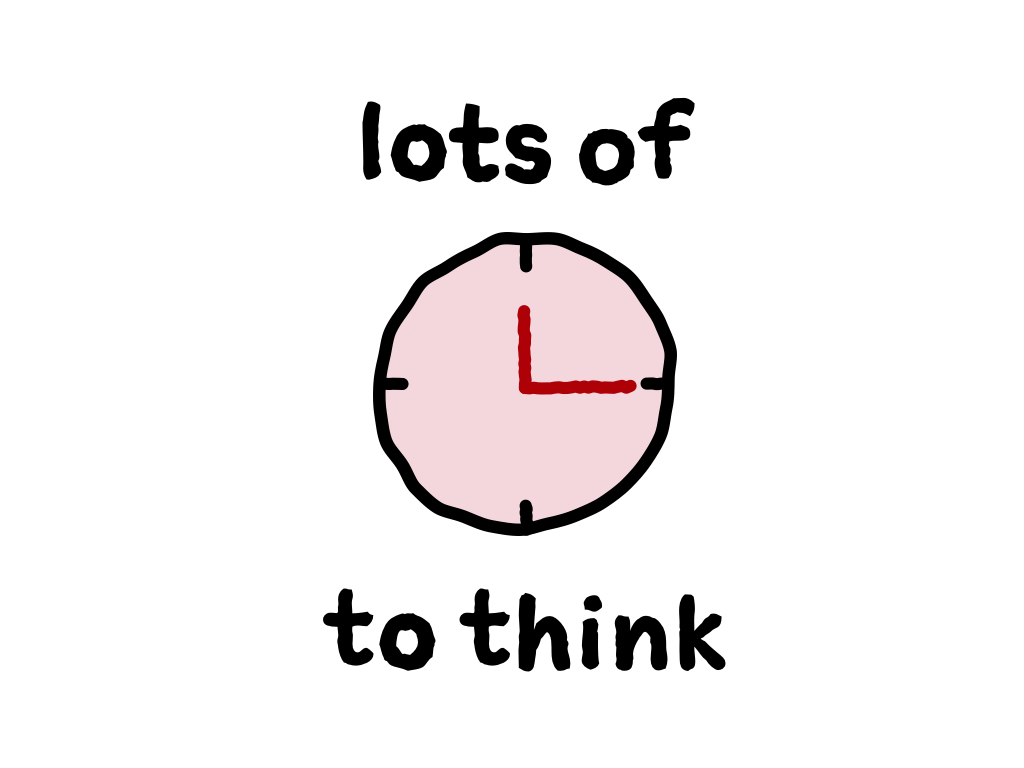

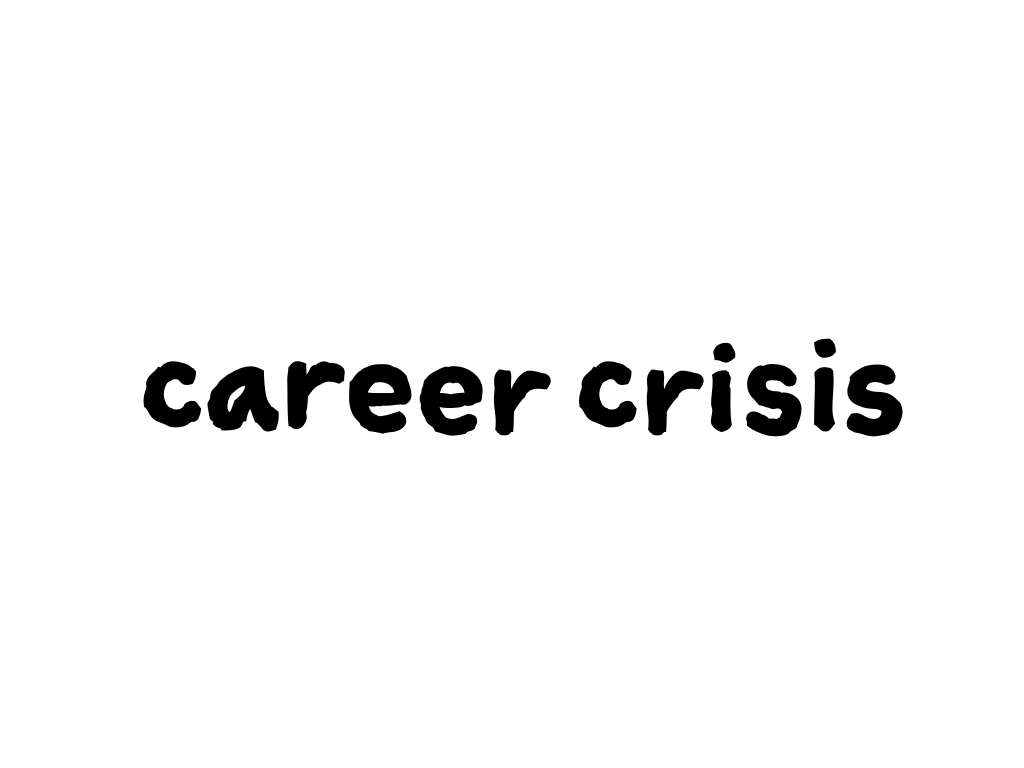
career crisis. The reality is that I had been having a career crisis for a while. Probably at least a few years. But I kept ignoring it and pushing myself harder and harder hoping it would somehow resolve itself, and, of course, it didn't. When my life came crashing down last year when I got sick, I could no longer do that. I had to address it and deal with it.
That career crisis is tied with one of the other life milestones I mentioned.
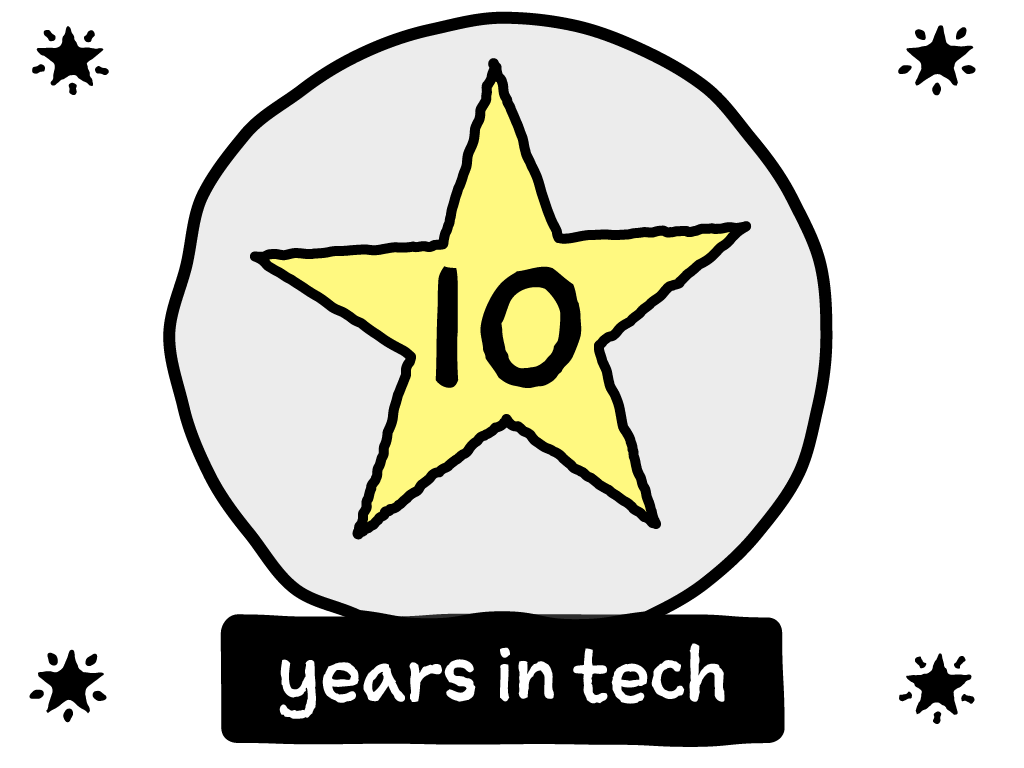

41% of women leave technology companies after 10 years of experience.
I have heard this statistic hundreds, if not thousands, of times. I swear it's in every article about women in tech.
The more I thought about this, the more I realized it makes me feel the way that doctor did in the hospital. What it is really saying to me is...
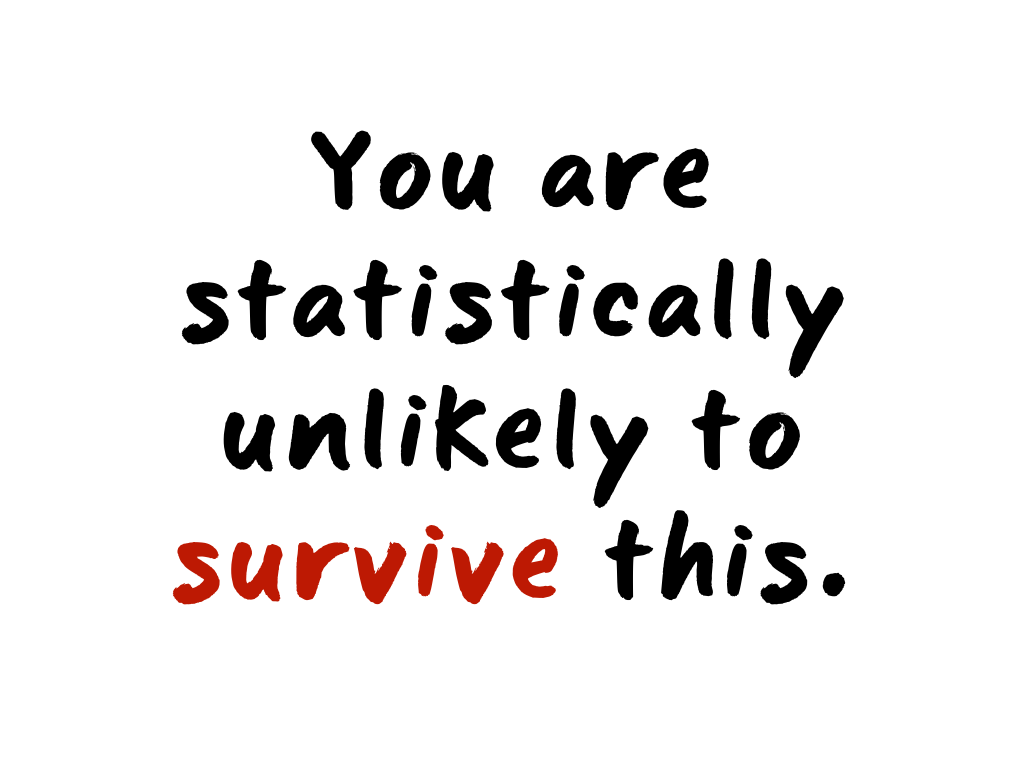
You are statistically unlikely to survive this.
It almost sounds like a threat, and that doesn't feel good. The more I thought about that, the more I realized...

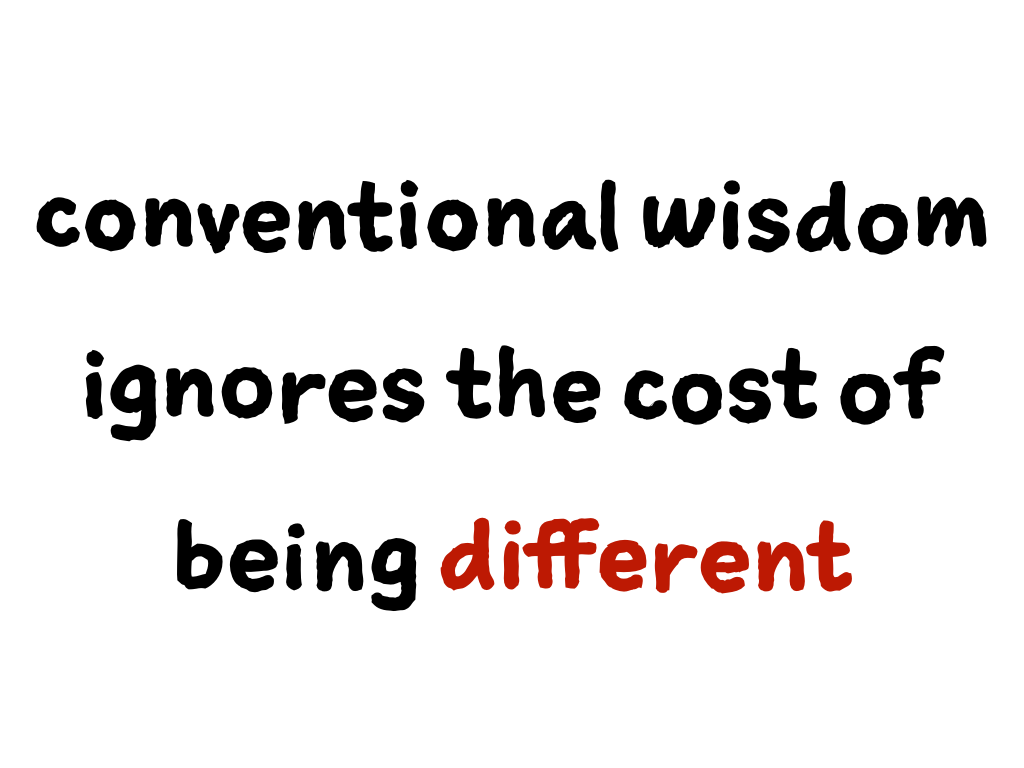
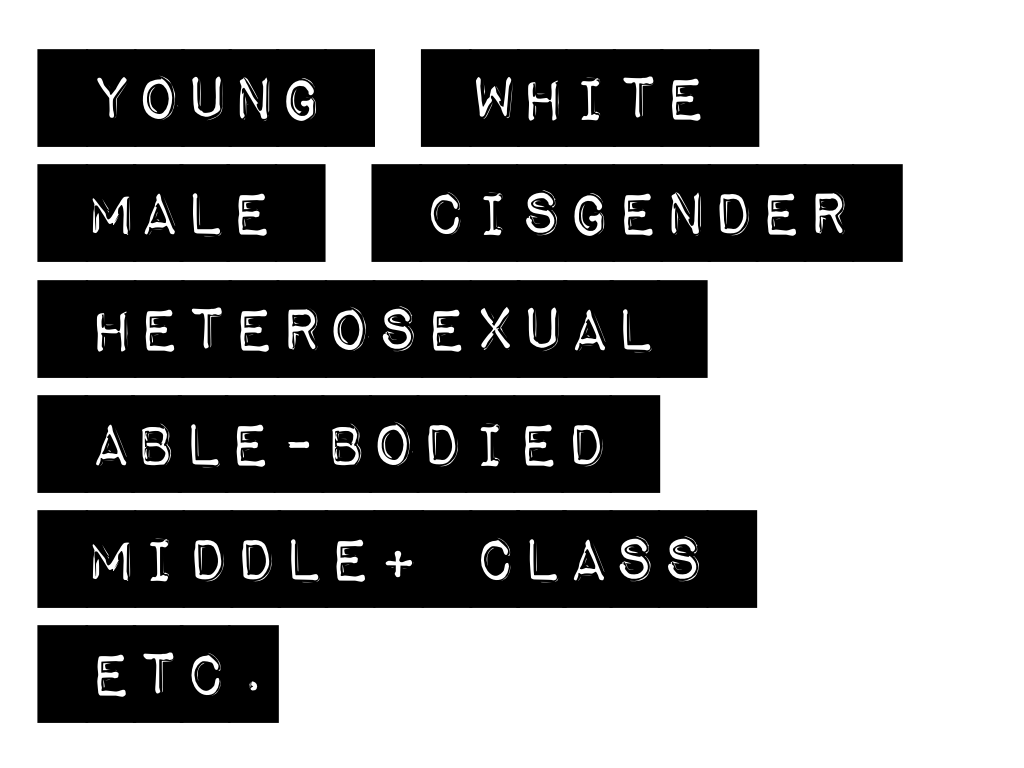
young, white, male, cisgender, heterosexual, able-bodied, middle-to-upper class, etc.
If you are different from these...

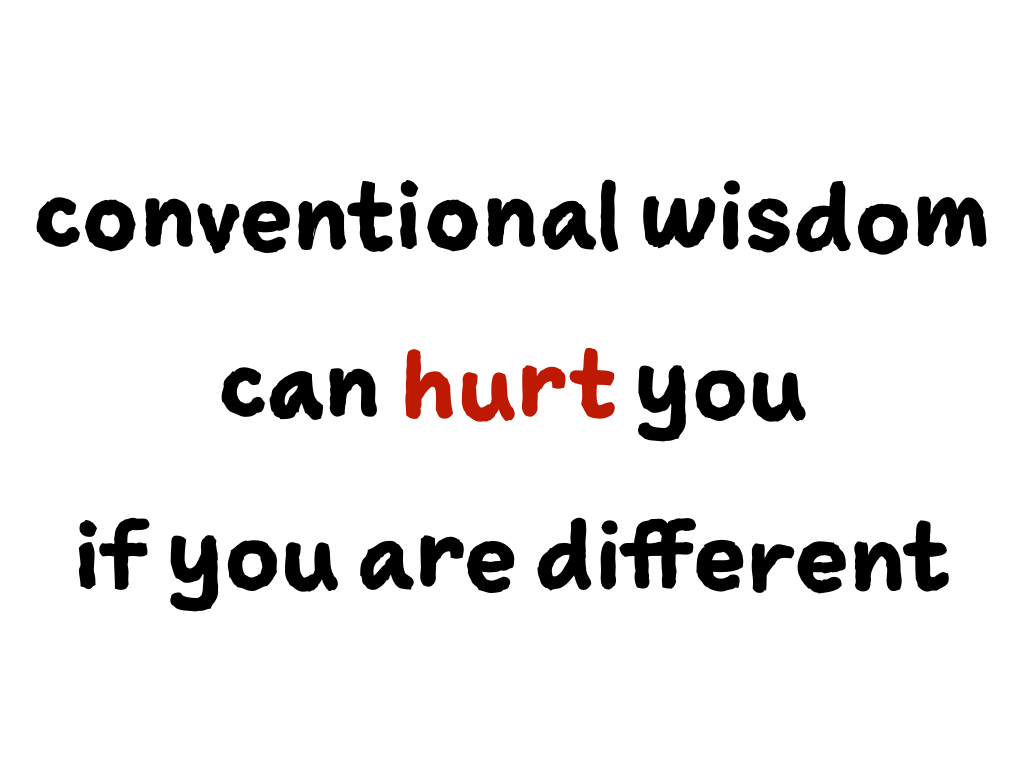
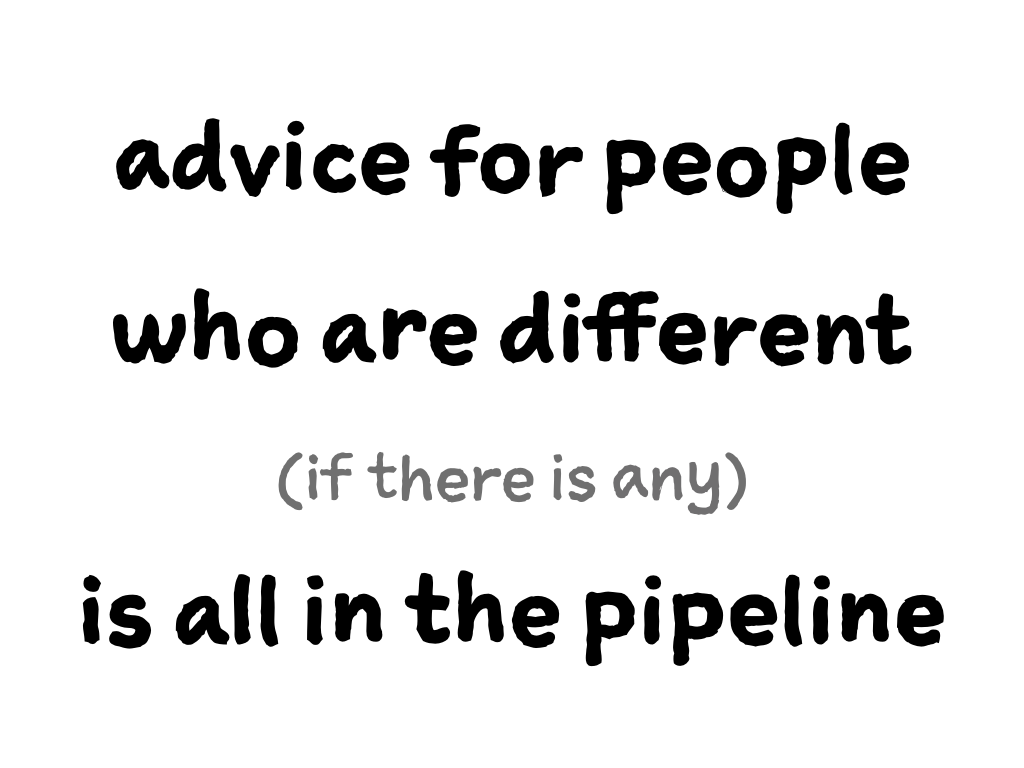
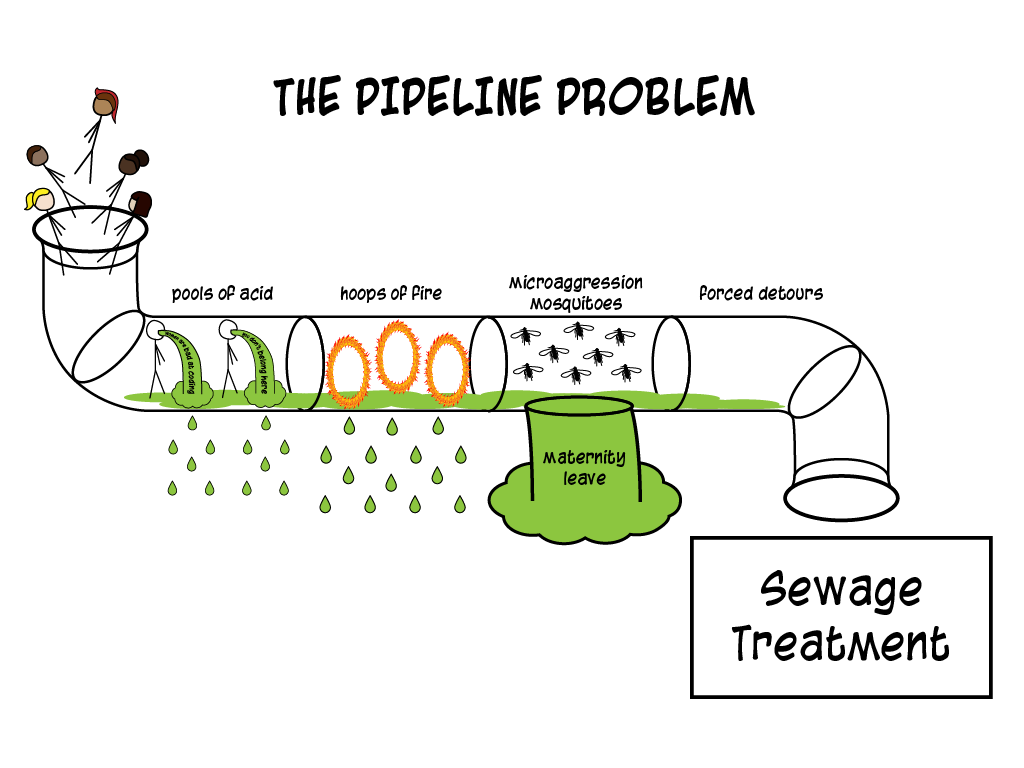
Gives the audience a little time to look over the cartoon.
I drew this about 2.5 years ago, and I think it's a strong indicator of when my career crisis started.
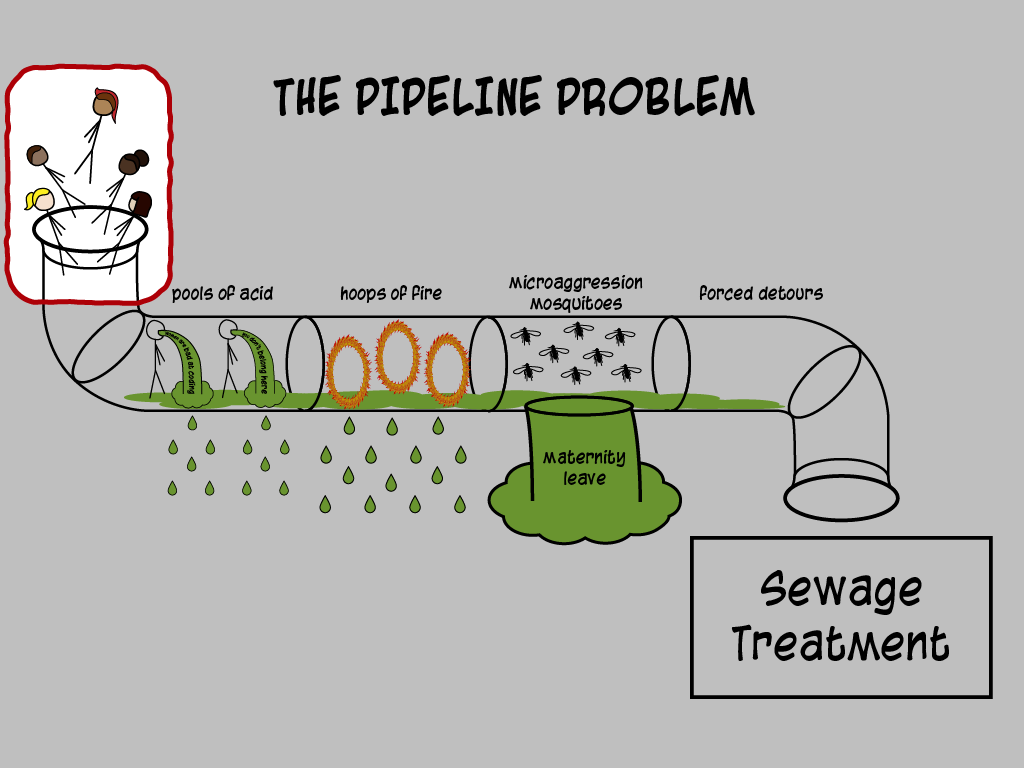
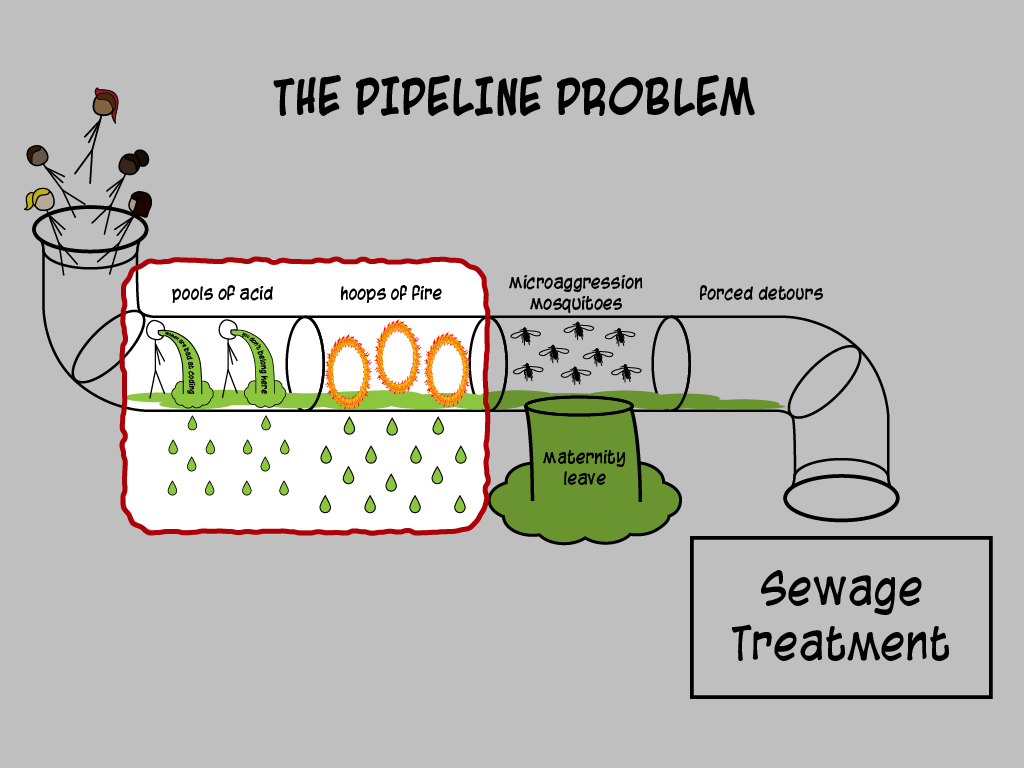
I'm actually over here. I'm in the leaky, acid-filled center of the pipeline, and I don't know what to do. I'm not even supposed to think about the rest of the pipeline because the expectation is that I will leave.
So I'm thinking about all of these things during my medical leave, and it triggers a really strong...

...fight or flight response in me. What am I going to do when my medical leave ends? Am I going to stay or go? What am I going to do?

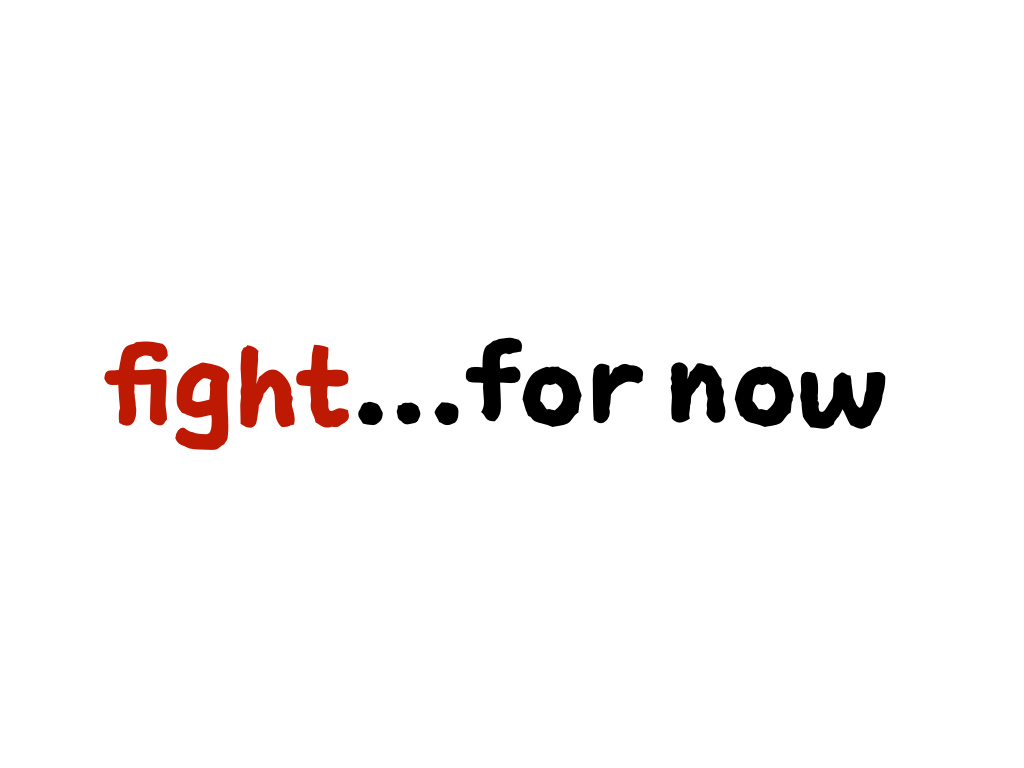
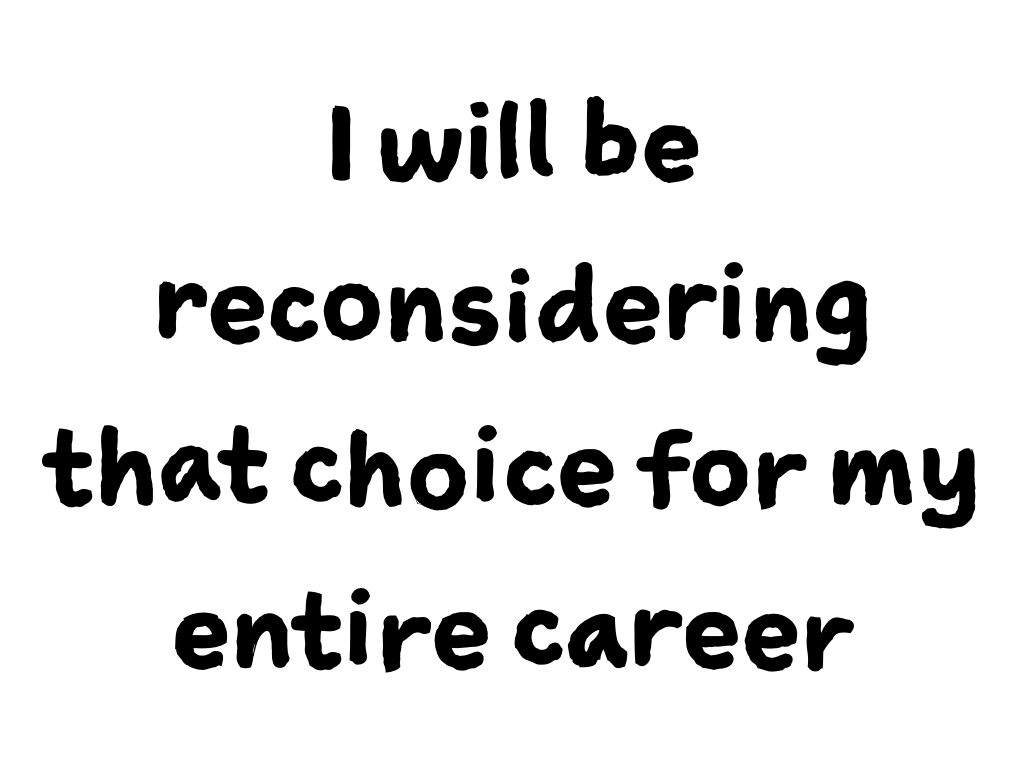
I will be making that choice for my entire career.
Not every day or week or month, but a few times a year, I have to reconsider that choice. I also realized that it gets a...
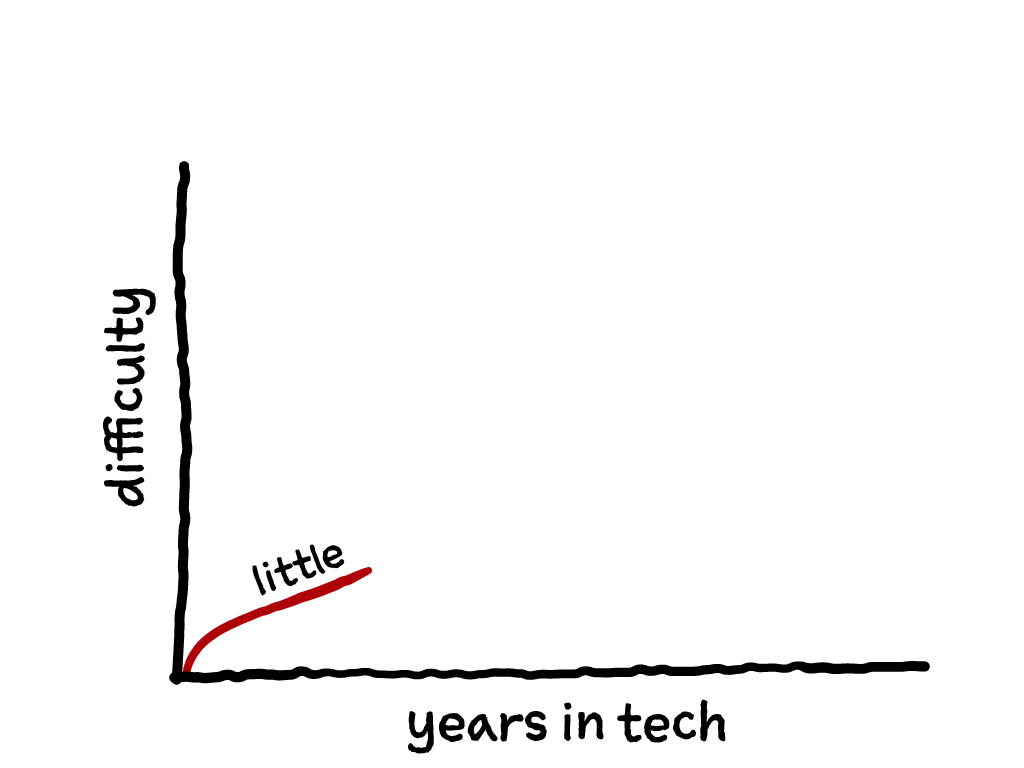
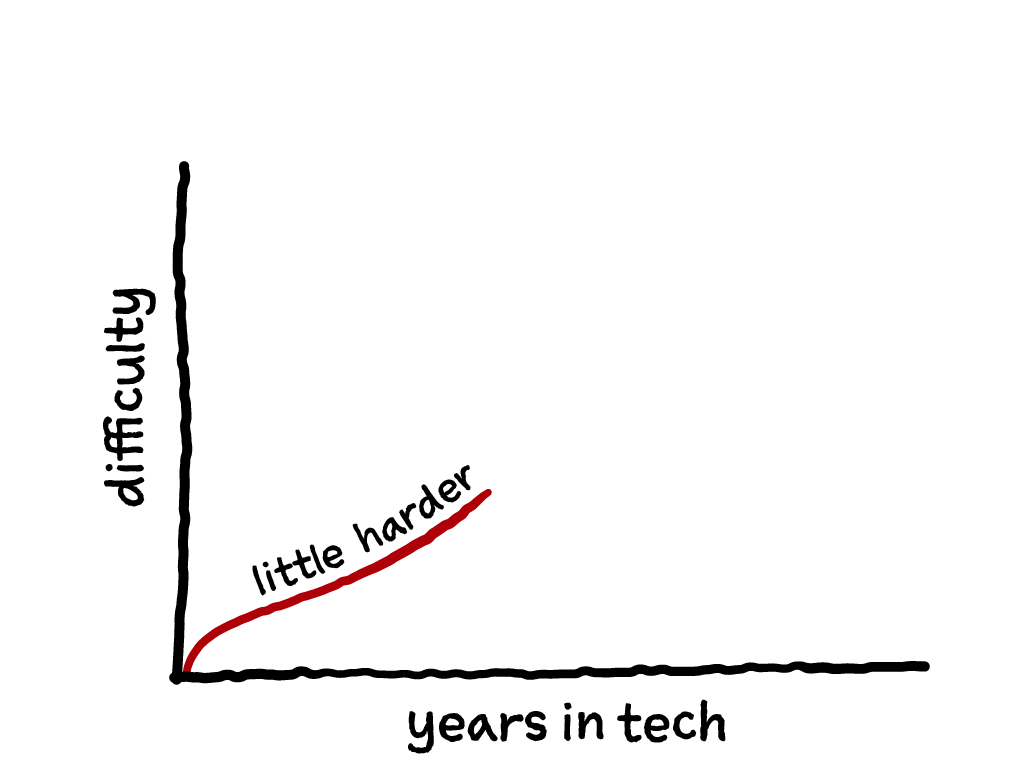
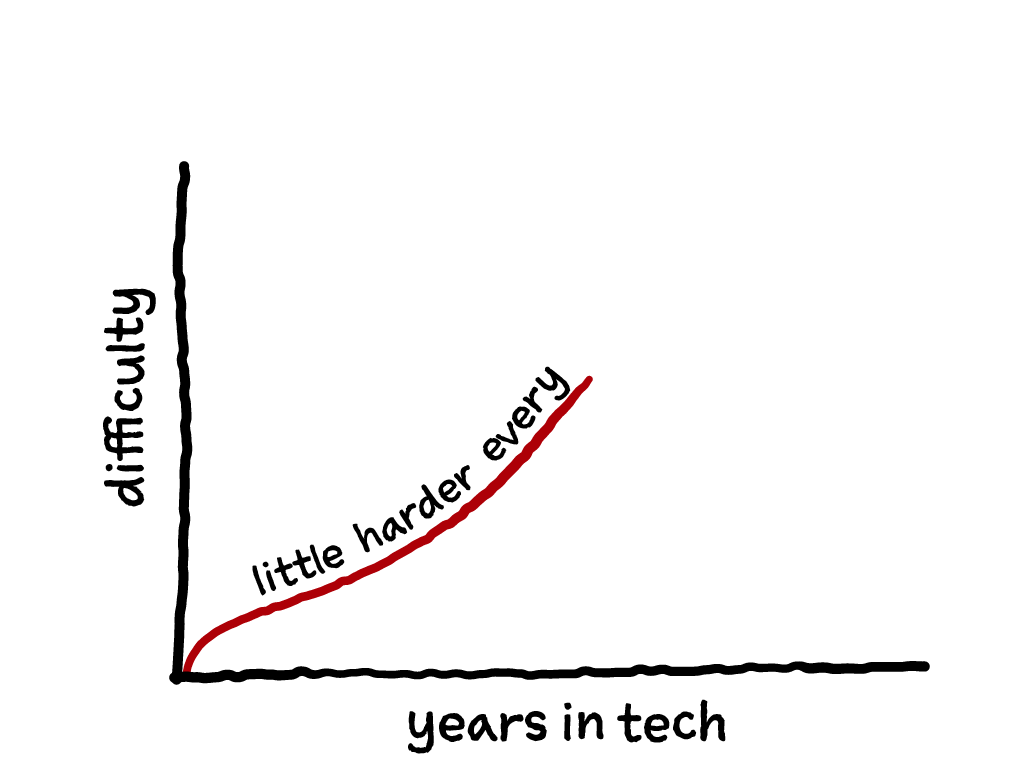
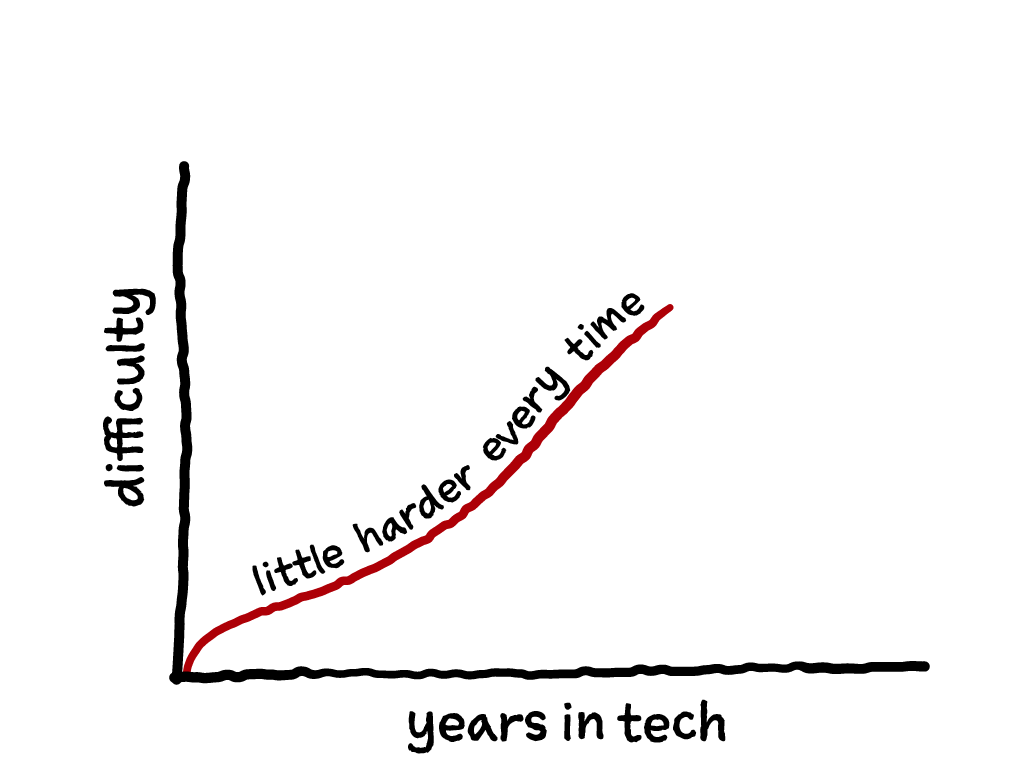
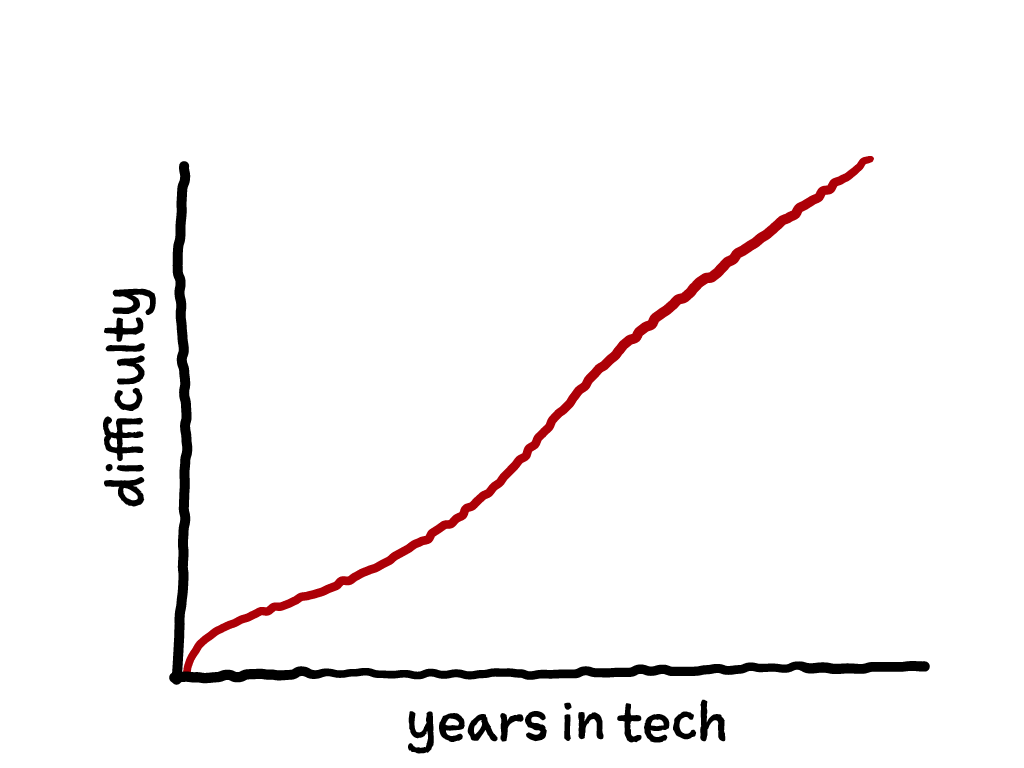
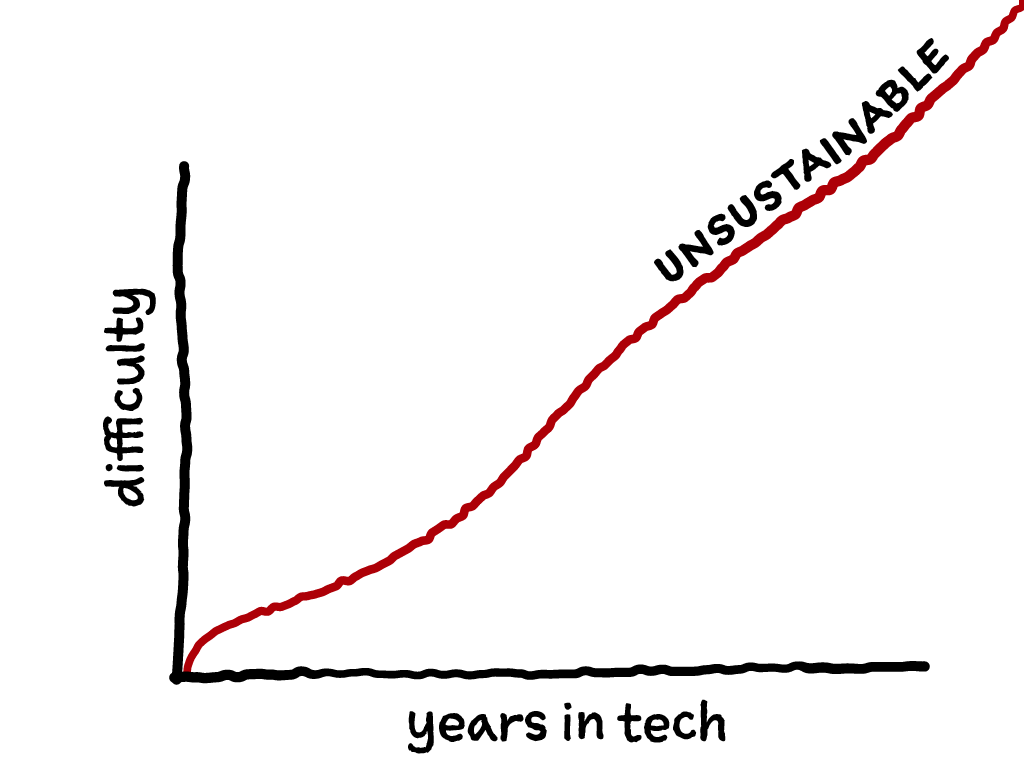
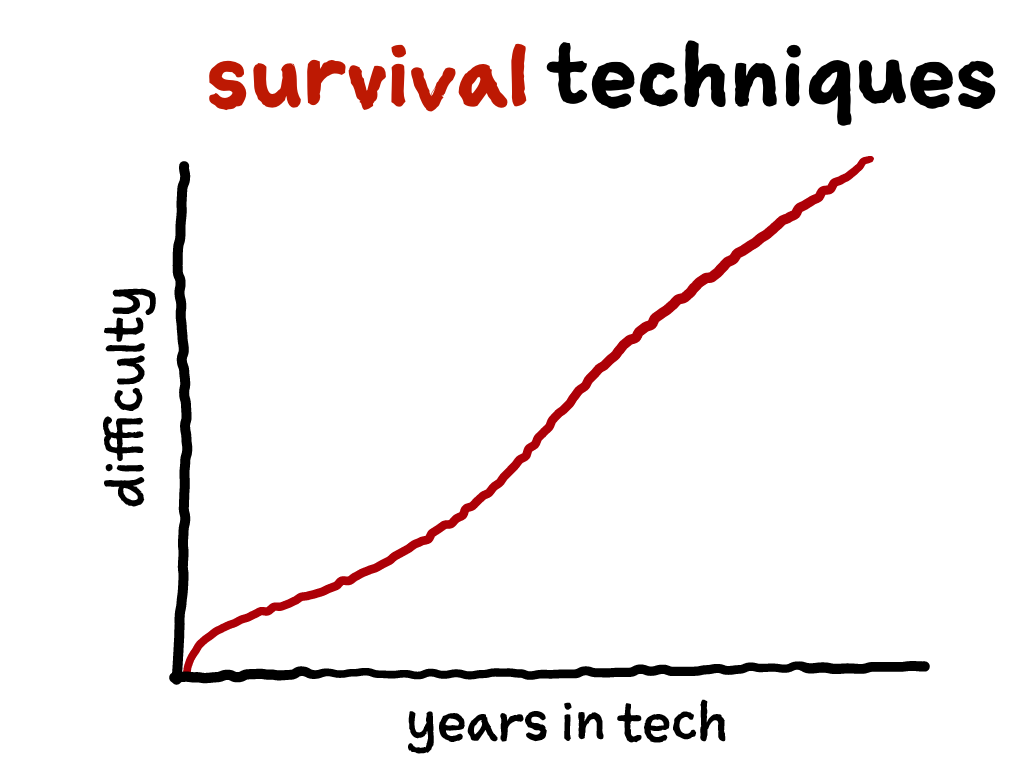

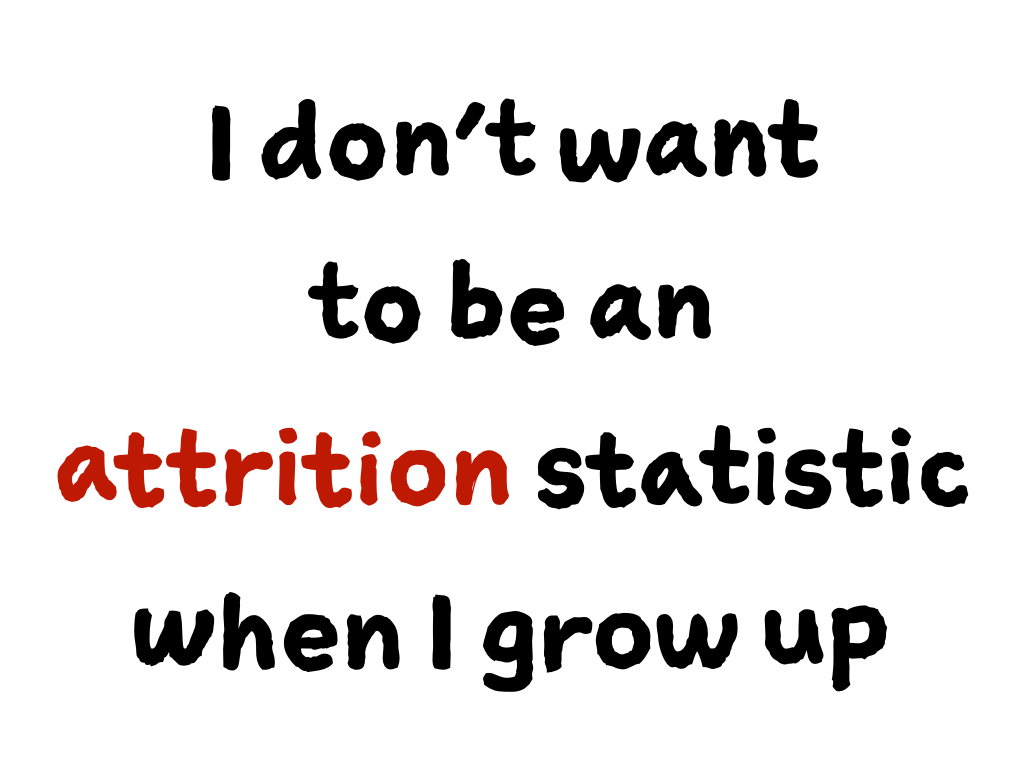

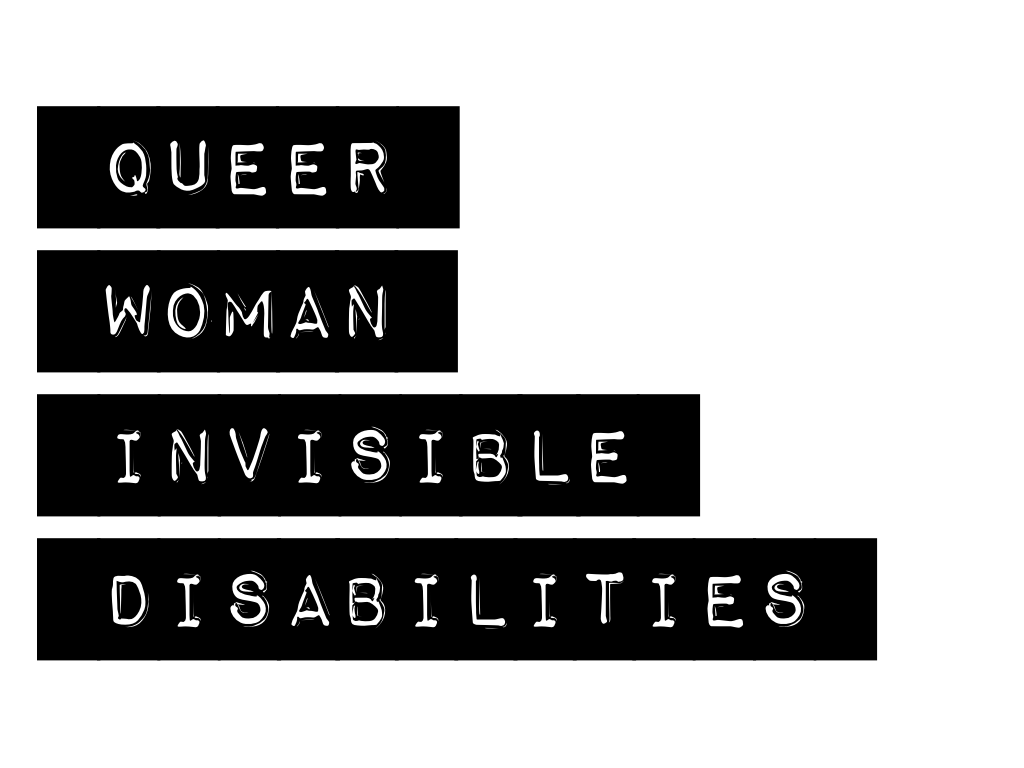
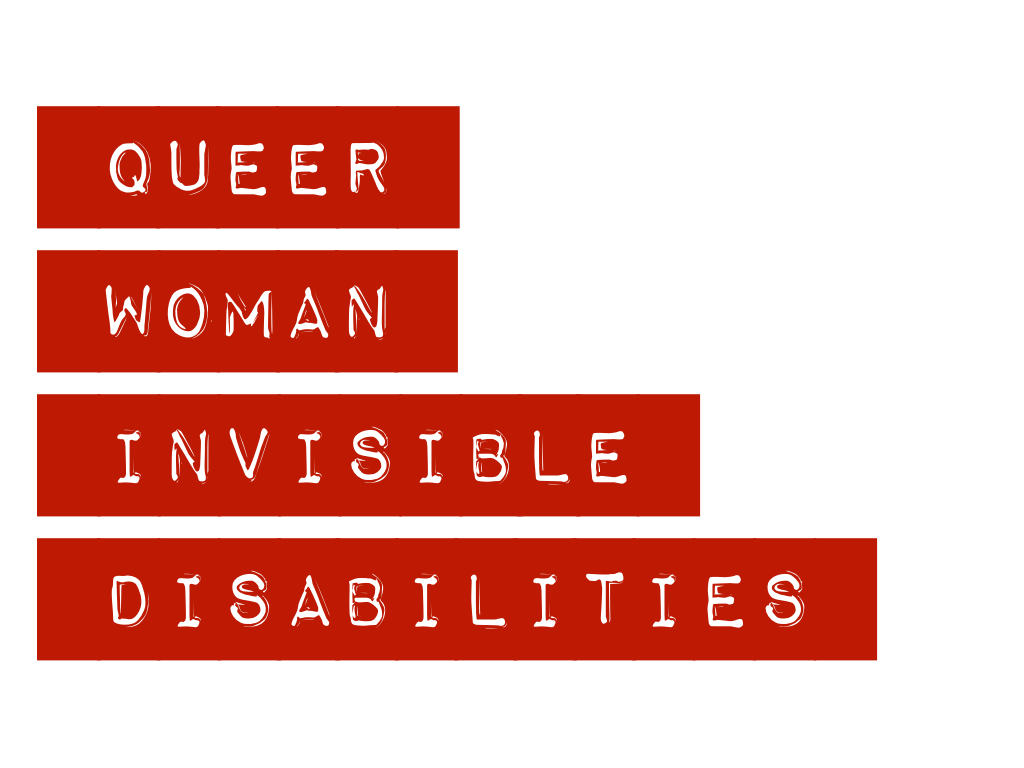
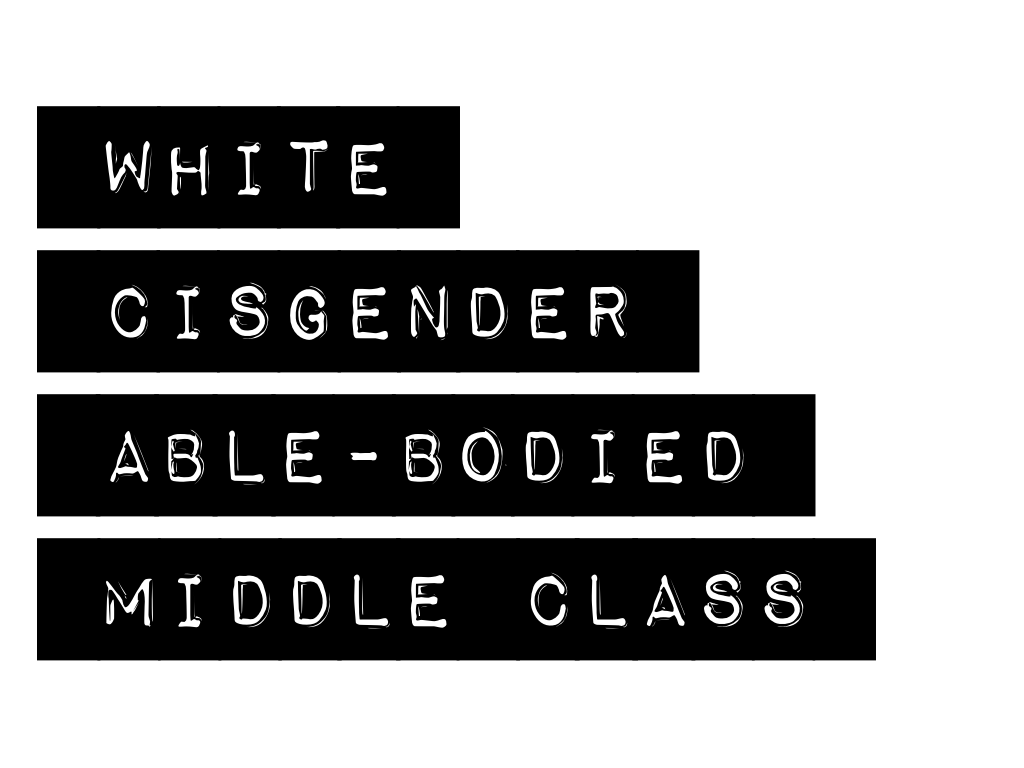
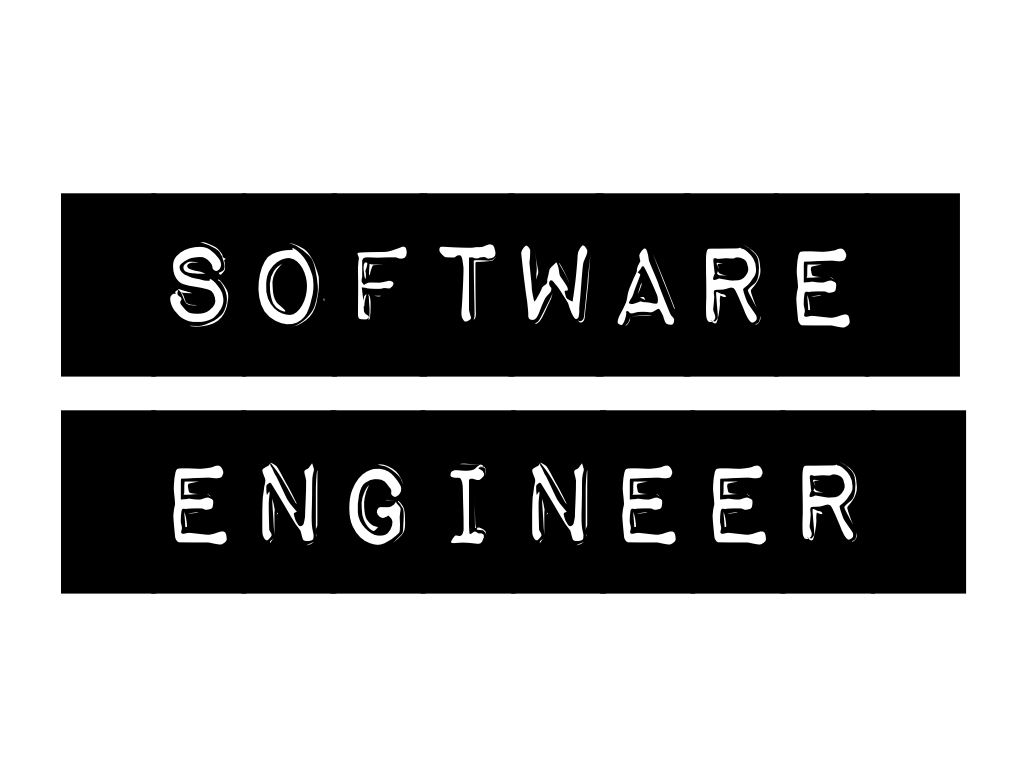
And I'm a software engineer.
I mention all of these things because it is going to color how I talk about this today.
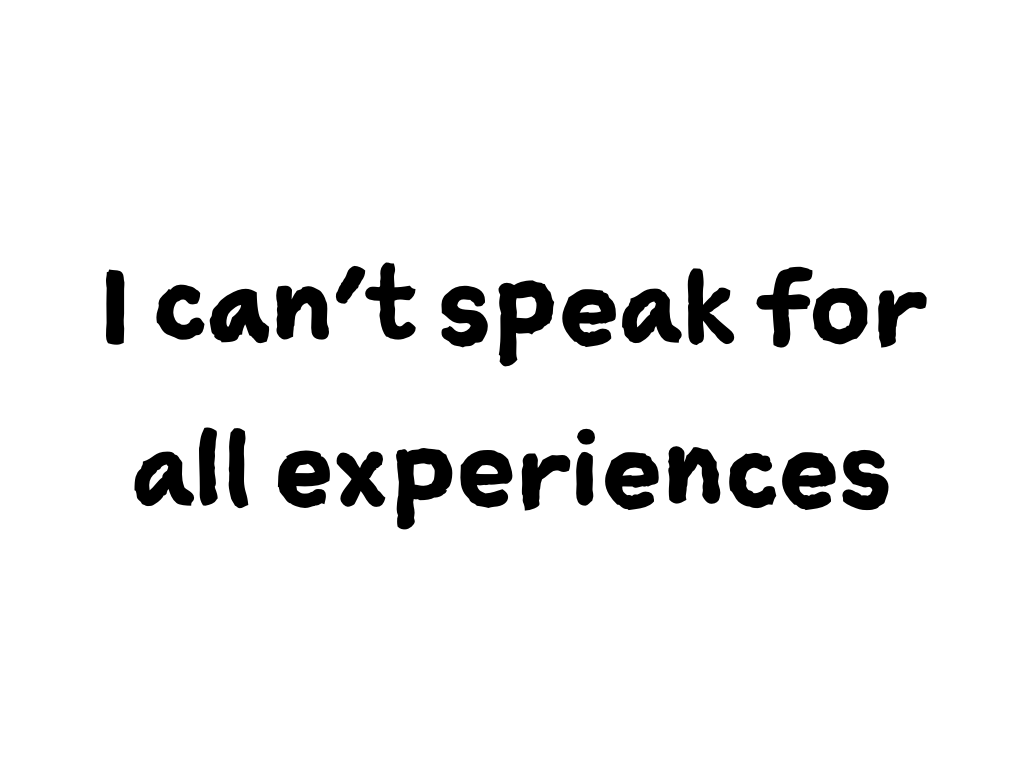
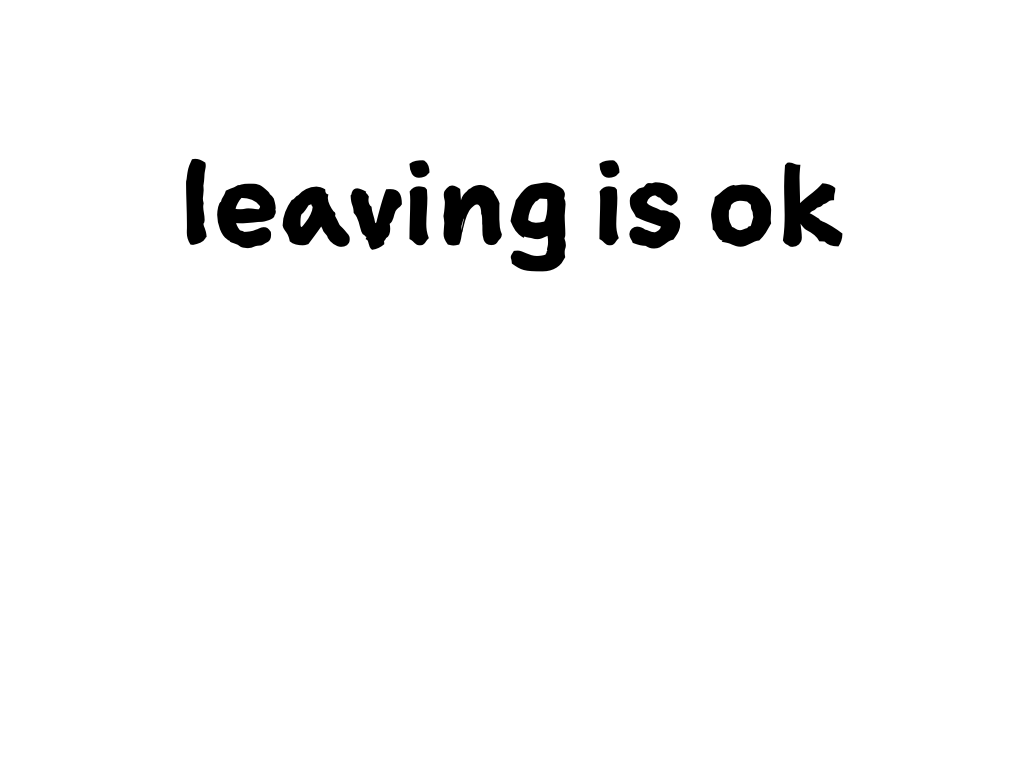
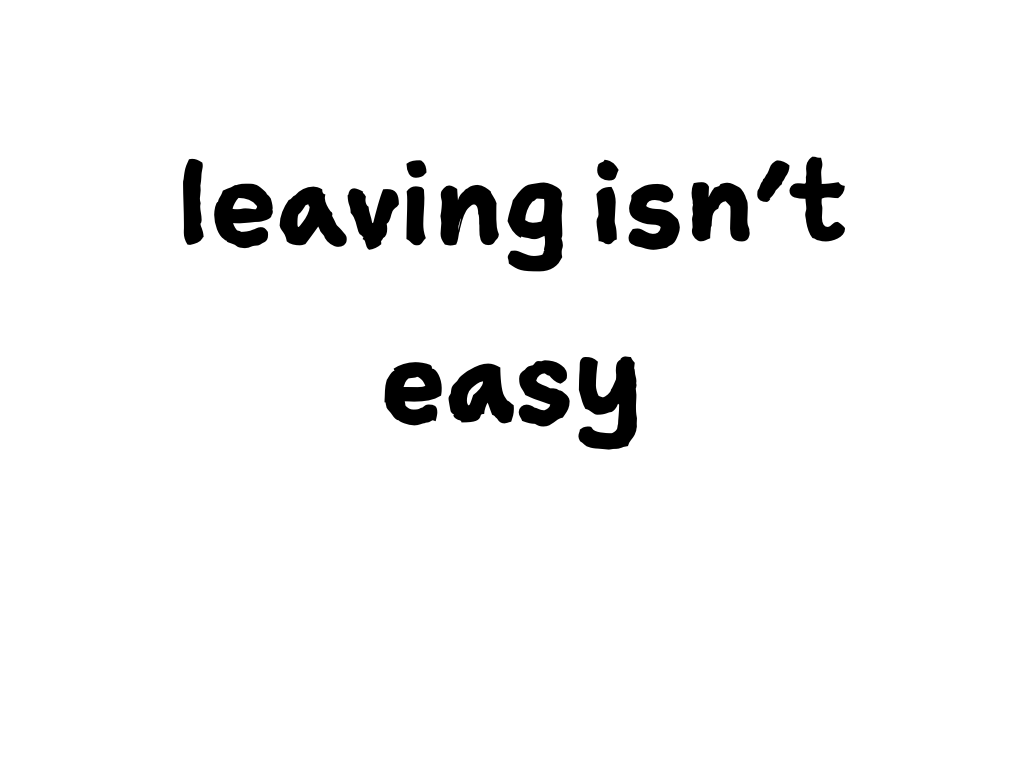
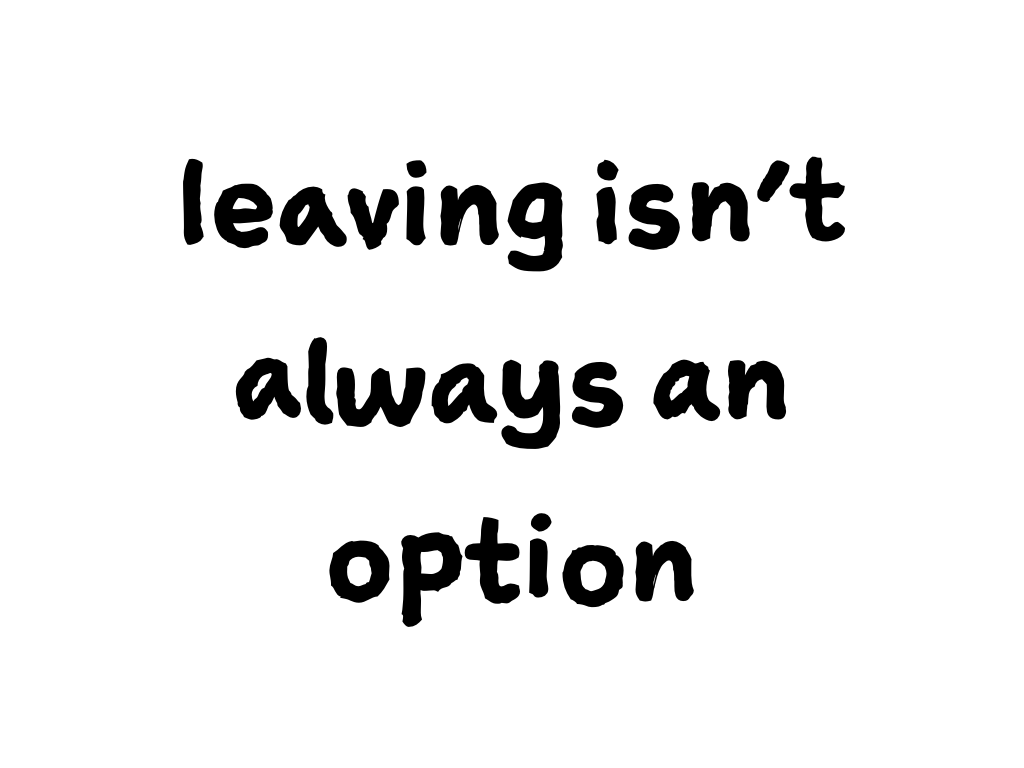
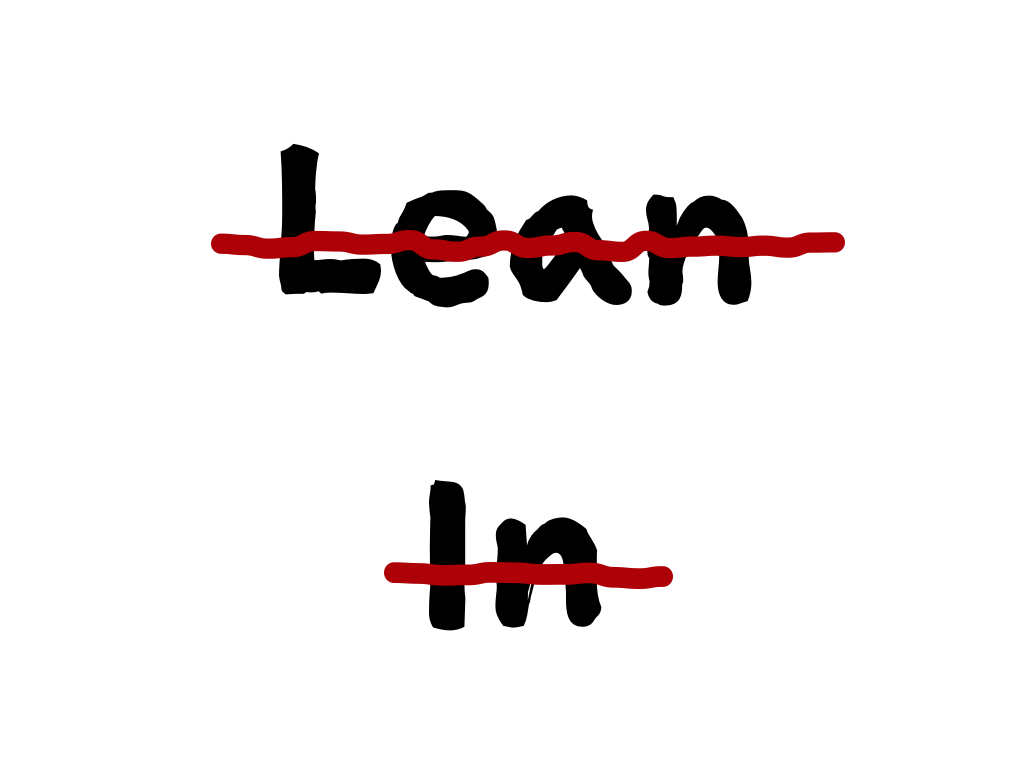
Before I move forward, I want to make you a promise. I am not going to tell you to "lean in" today. I think this is important to mention because Lean In is one of the few forms of advice available for mid-career women in tech. It has kind of taken over the conversation, and I think it's bad advice.
I could give an entire talk about why the advice is bad, but I want to focus on one thing today. A lot of the advice in Lean In encourages people to push themselves as hard as they can despite systemic issues hoping they will somehow get power over others and that's considered success?

I think that's a recipe for burnout, and, quite frankly, if you are from an underrepresented or marginalized group in tech, you are already intimately familiar with burnout, and you don't need me or Sheryl Sandberg encouraging you to make it worse.
I want to step back and dig into something I just mentioned: systemic issues. I want to underscore that all of the problems I'm talking about today, the things that contribute to these attrition statistics, are caused by...
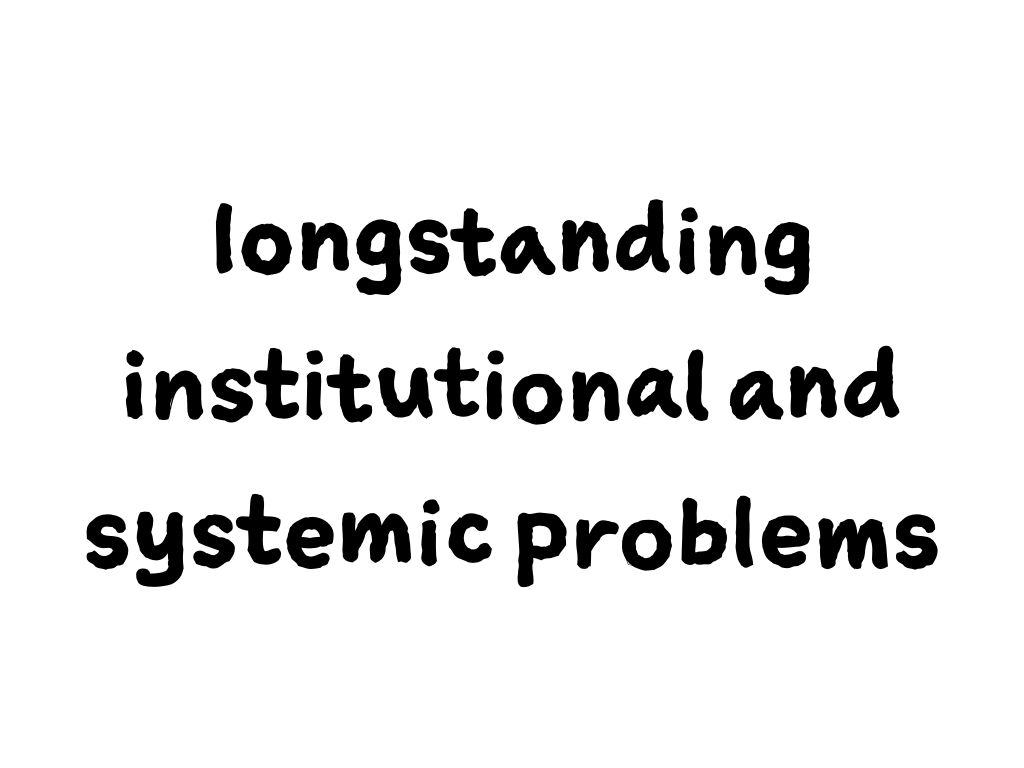
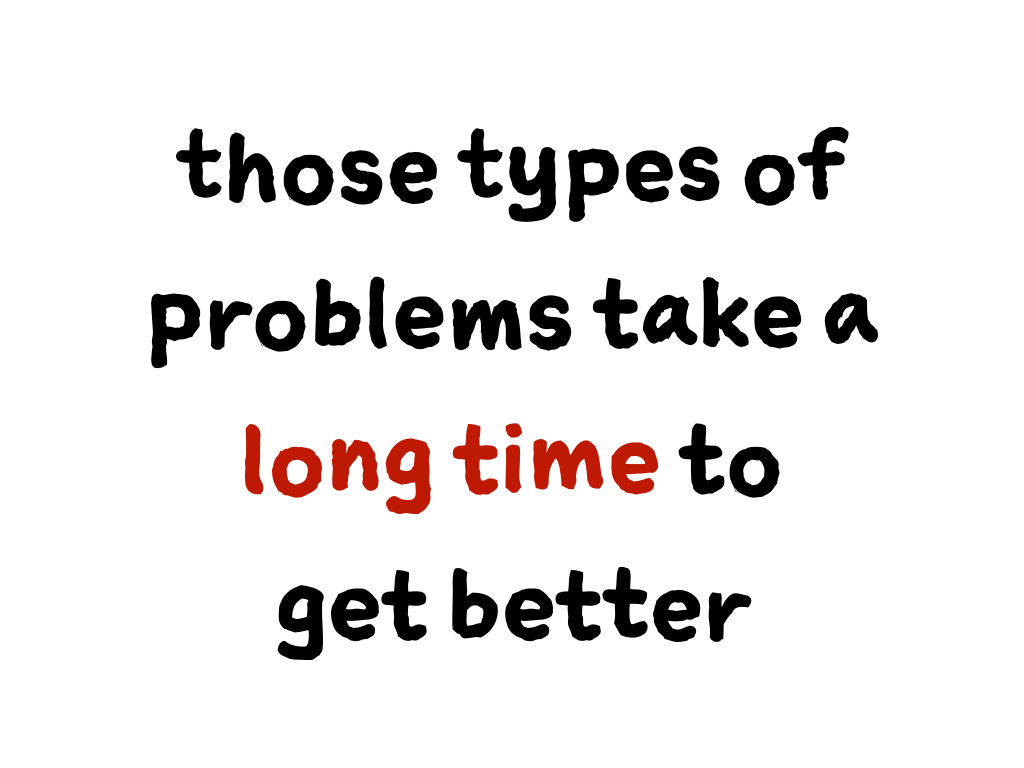
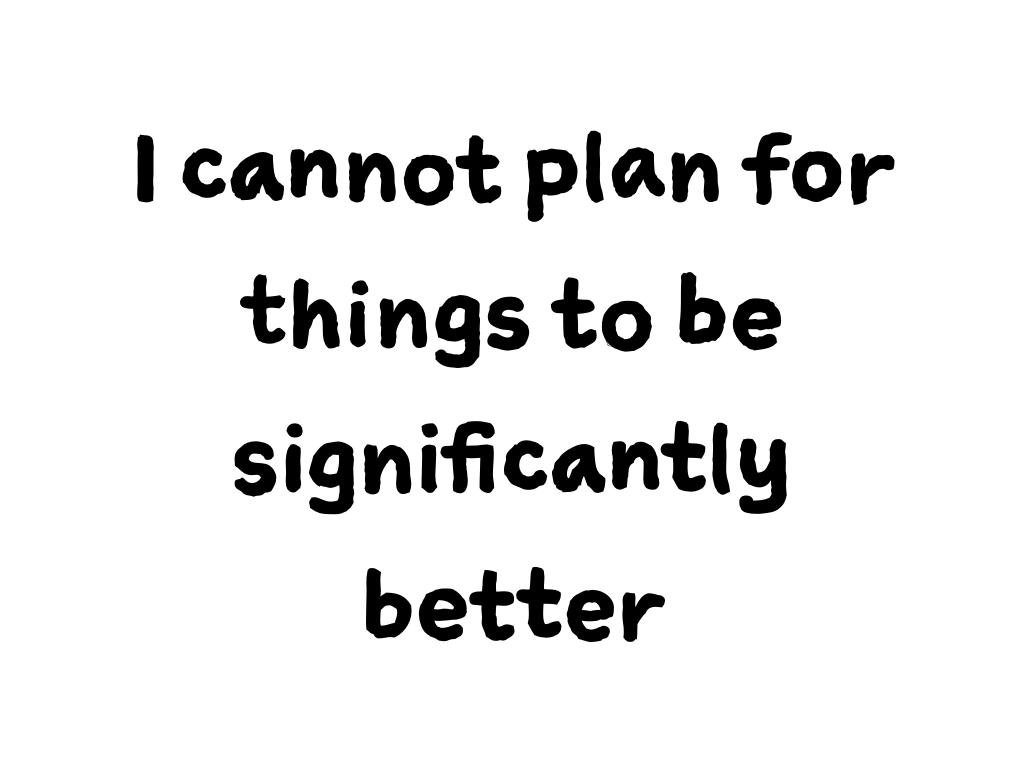
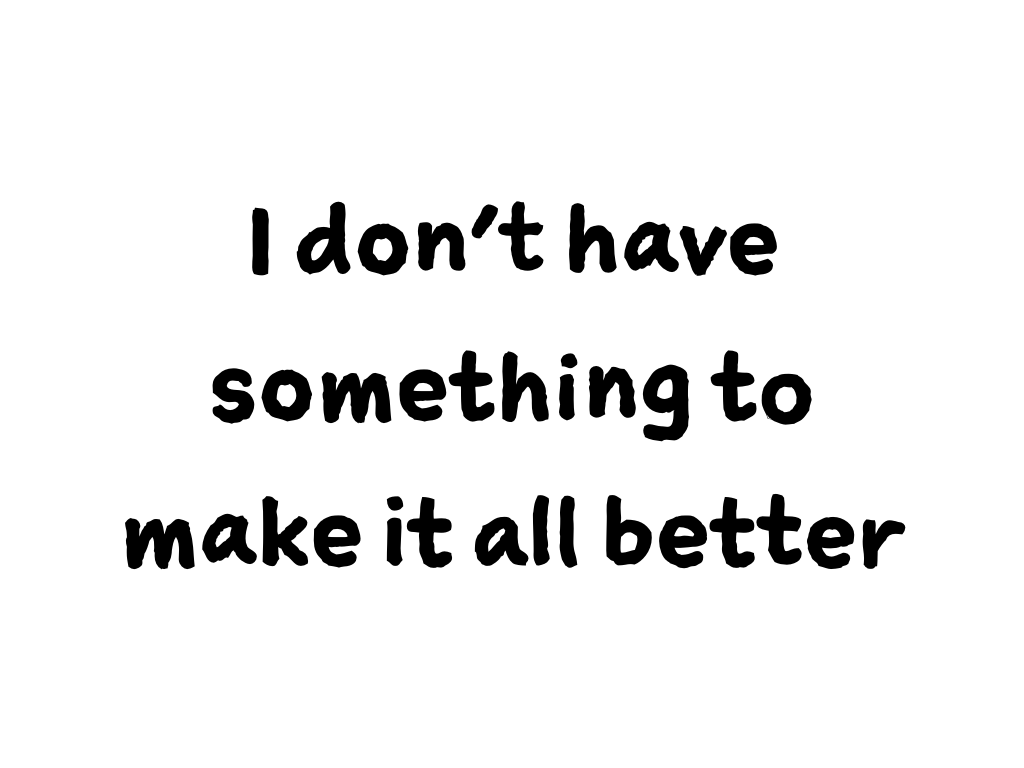
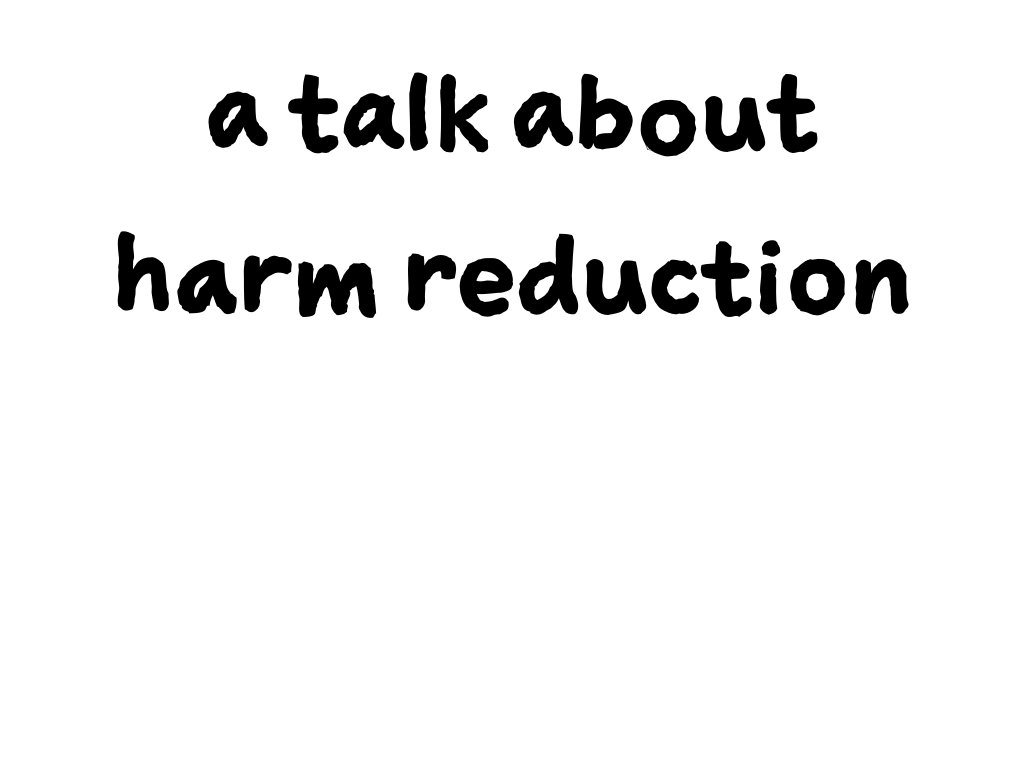
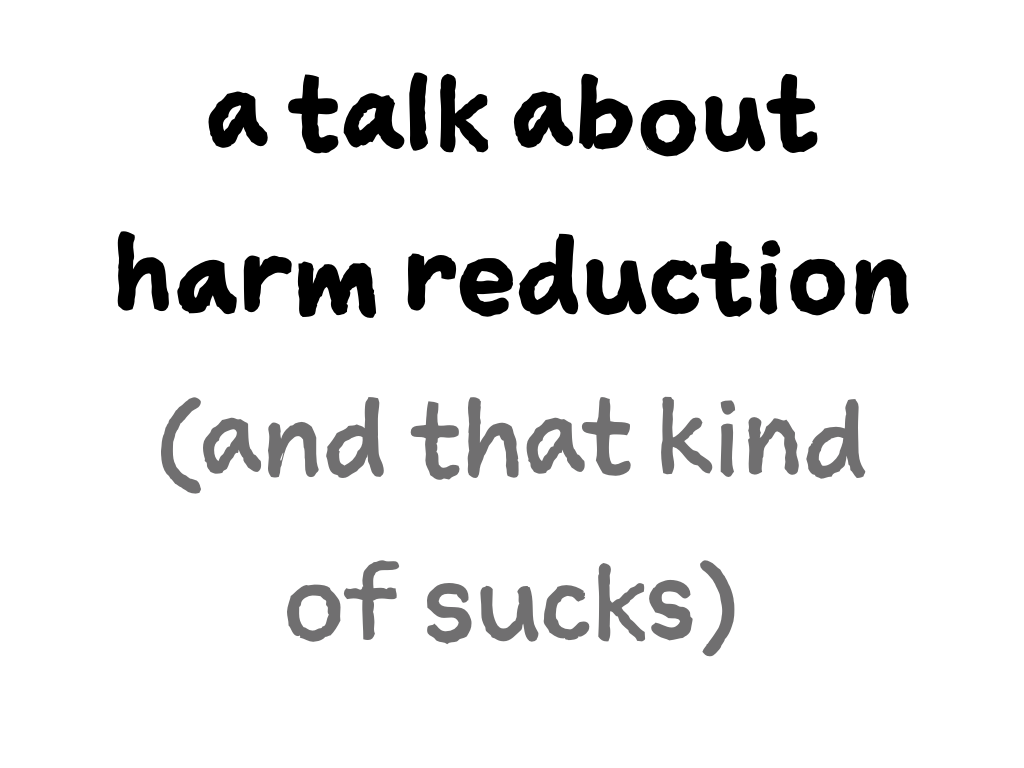
I want to be honest, that kind of sucks. A part of me feels badly that this is the talk I am giving today because I am putting more things on your plate to do to sustain yourself in a hard situation.
What I really want is for the institutions to get better. For the people from the homogeneous norm to take things off of your plate. That's what I want, but those changes aren't coming fast enough, and the status quo is slowly destroying people. So I'm trying to figure out how we can bridge the gap for ourselves and be honest with you about this because I'm so sick of people lying to us.
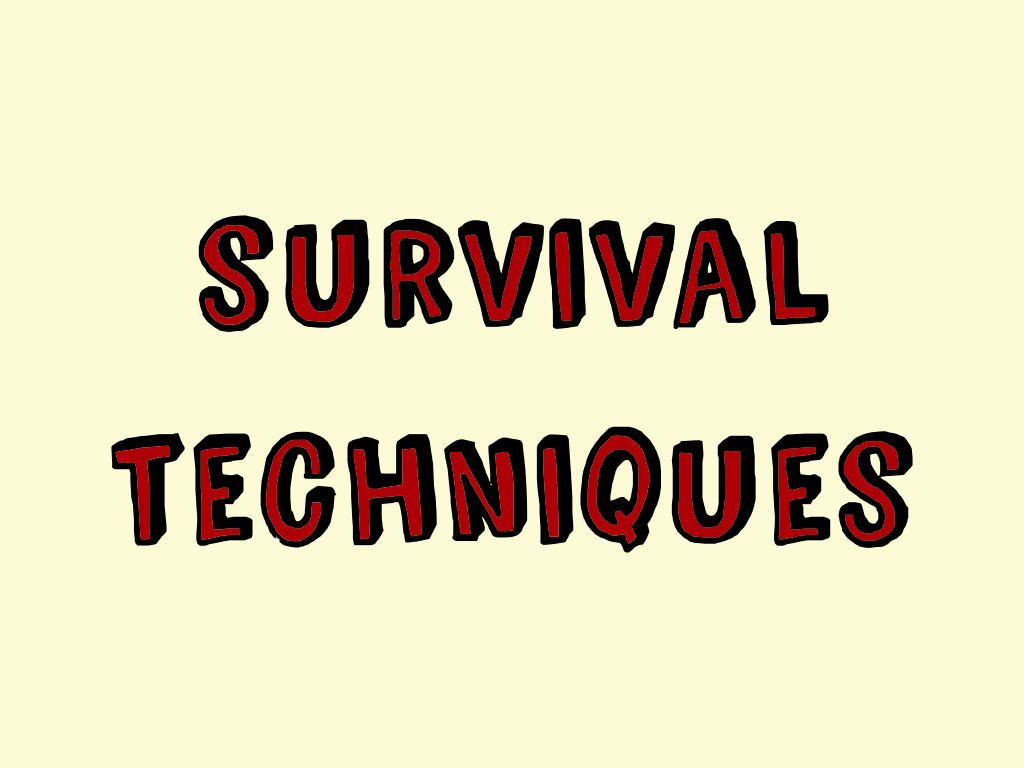

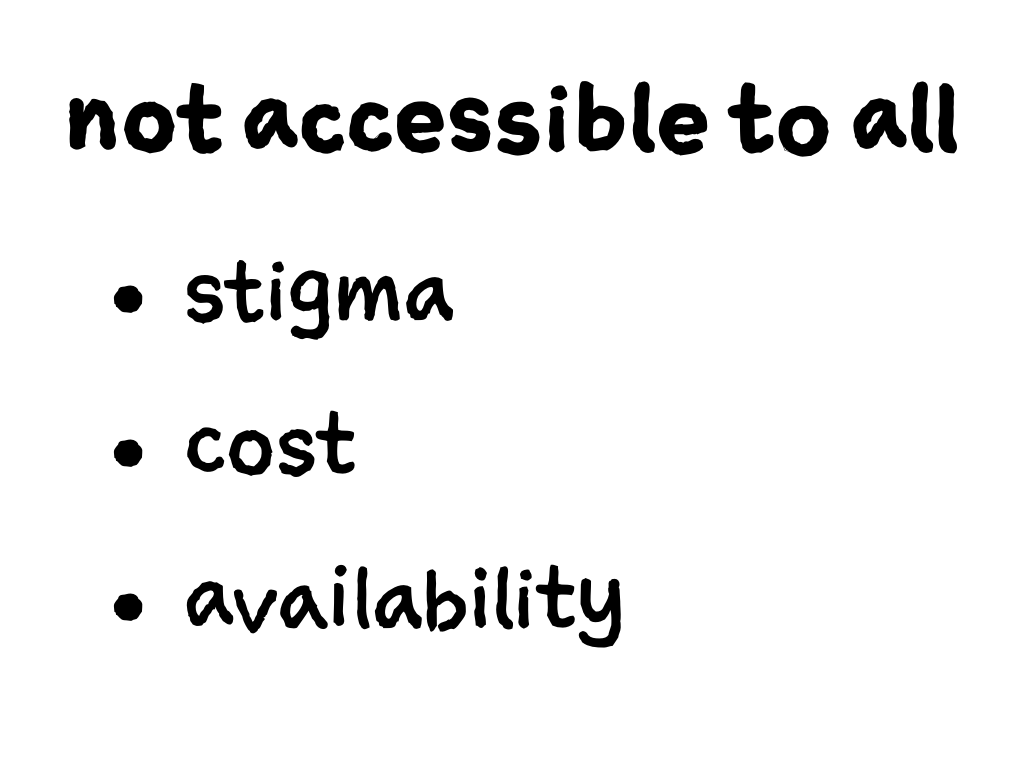
I want to be really clear that this is not accessible to everyone because of things like stigma, cost, and availability.
These are all things that kept me from going to therapy for a long time. I didn't start going to therapy until five or six years into my career. It's been helpful to me, and it might be for you too, but it's not available to everyone.
If therapy is accessible to you, I recommend it for two big reasons.
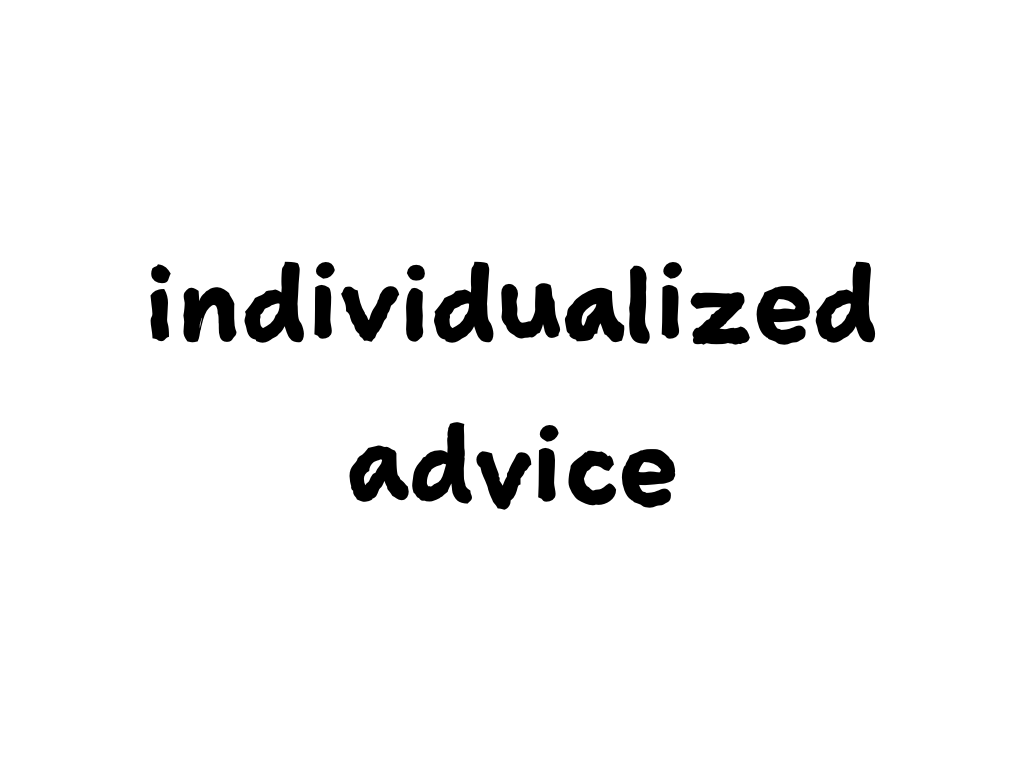
One. A therapist can give you individualized, professional advice.
I can't do this. I'm only talking to you for 25 minutes, I'm speaking from my experiences, I'm not a mental health professional, and I don't know most of you. A therapist will see you regularly, get to know you and your situation, and provide you with individualized advice that makes sense for you.
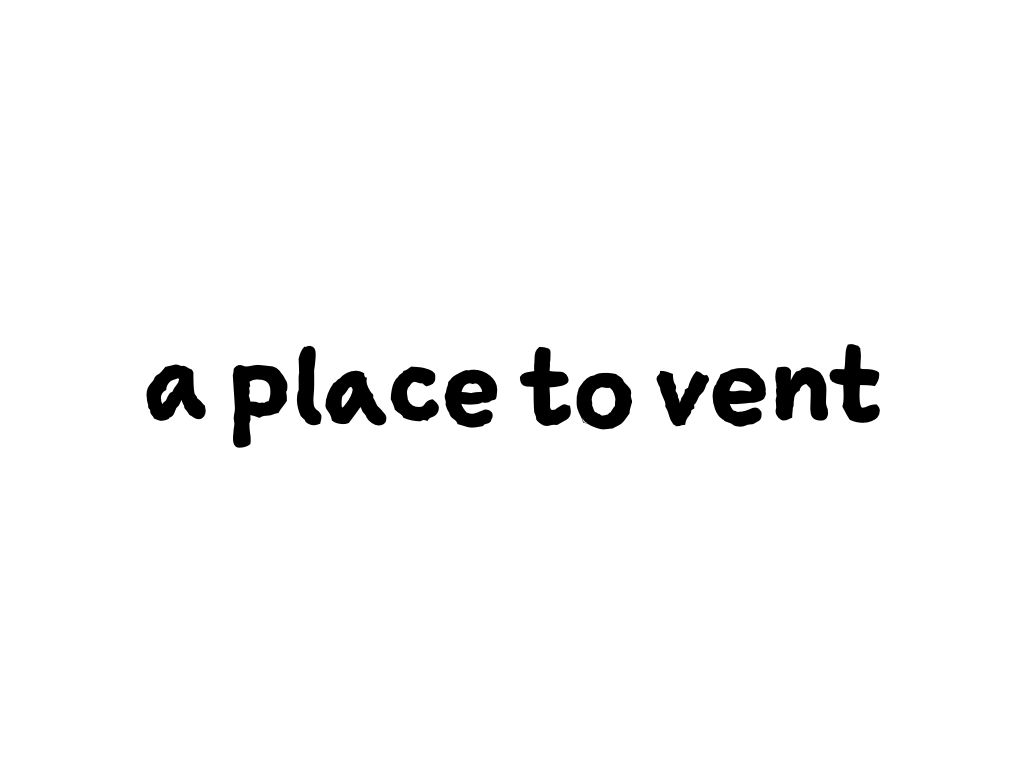
Two. Therapy can give you a relatively guilt-free place to vent. I say guilt-free because you are paying your therapist for their time. It is literally their job to listen to you complain if that's what you want to get out of therapy. It is totally one of the things I have gotten out of therapy.
Venting is critical for those of us who are different from the norm in tech. We accumulate a lot to vent about: microaggressions, macroaggressions, harassment, threats, problems at work. If you hold it all inside, you are liable to explode. It's important to have a place to release some of that steam. It doesn't have to be at therapy, but therapy is a good place for it.
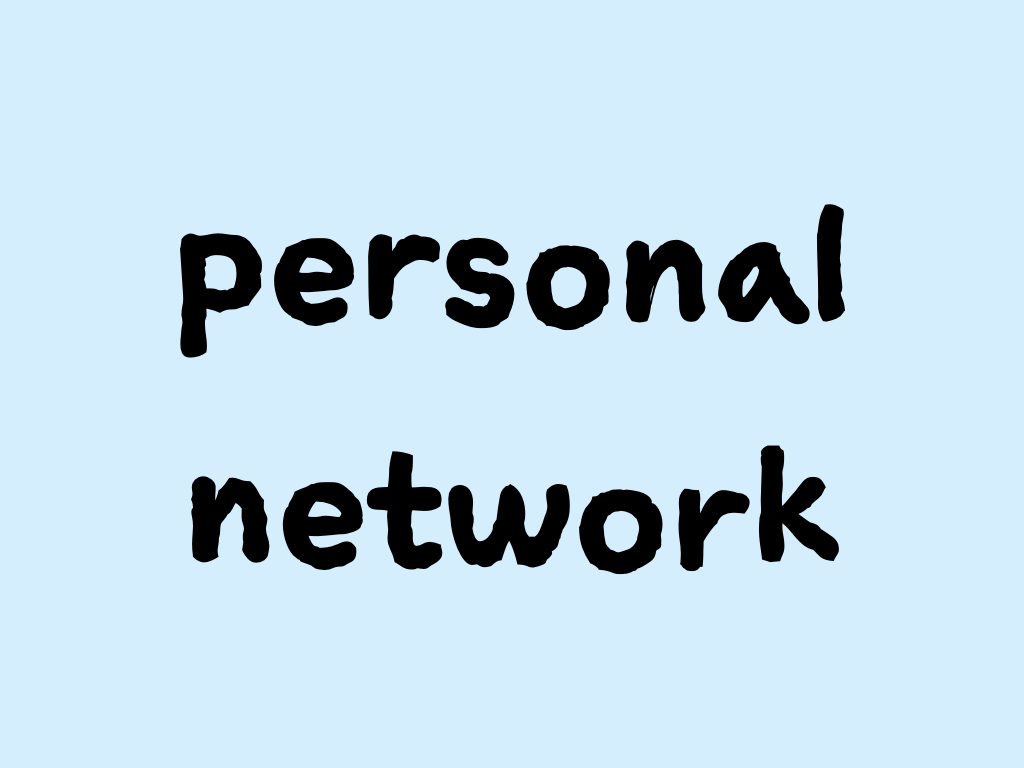


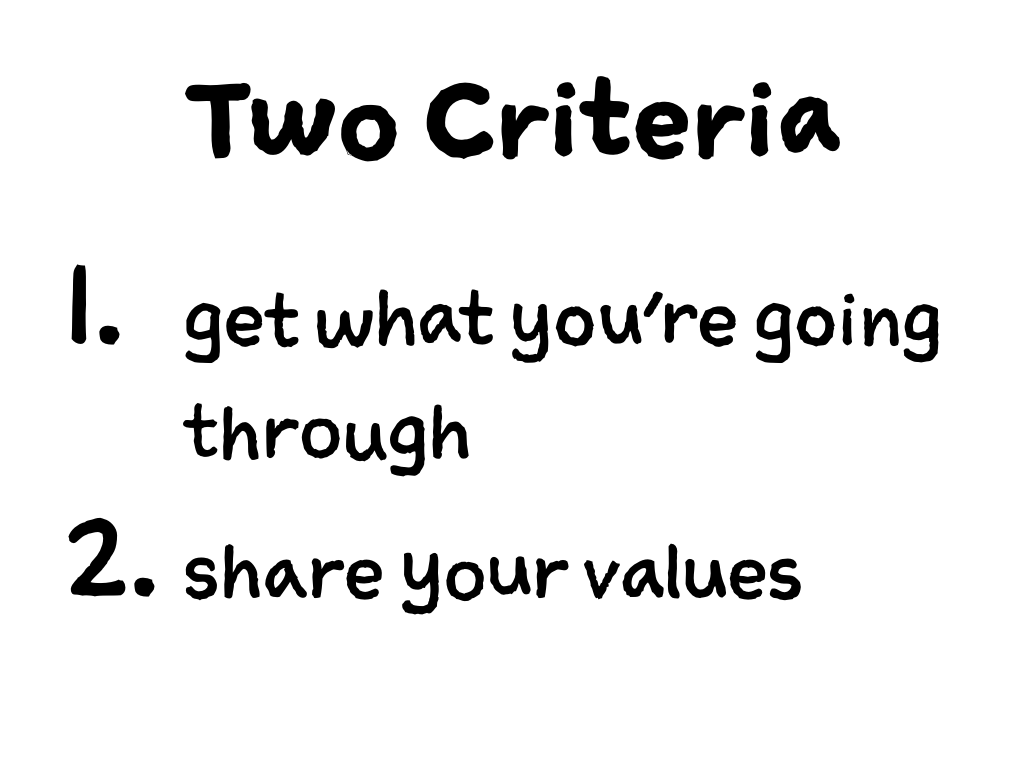
Secondly, people who share your values. This one is often overlooked or replaced with things like location or demographics, and I think that is a mistake.
The things I'm talking about today, the stuff you need help with, is inherently political. Just because someone lives near you or shares some demographics with you does not mean they will be supportive. I have had to learn this one the hard way many times.
So I recommend prioritizing people who share your values. If you can also find people near you who share your demographics, that's awesome, just don't forget this part.
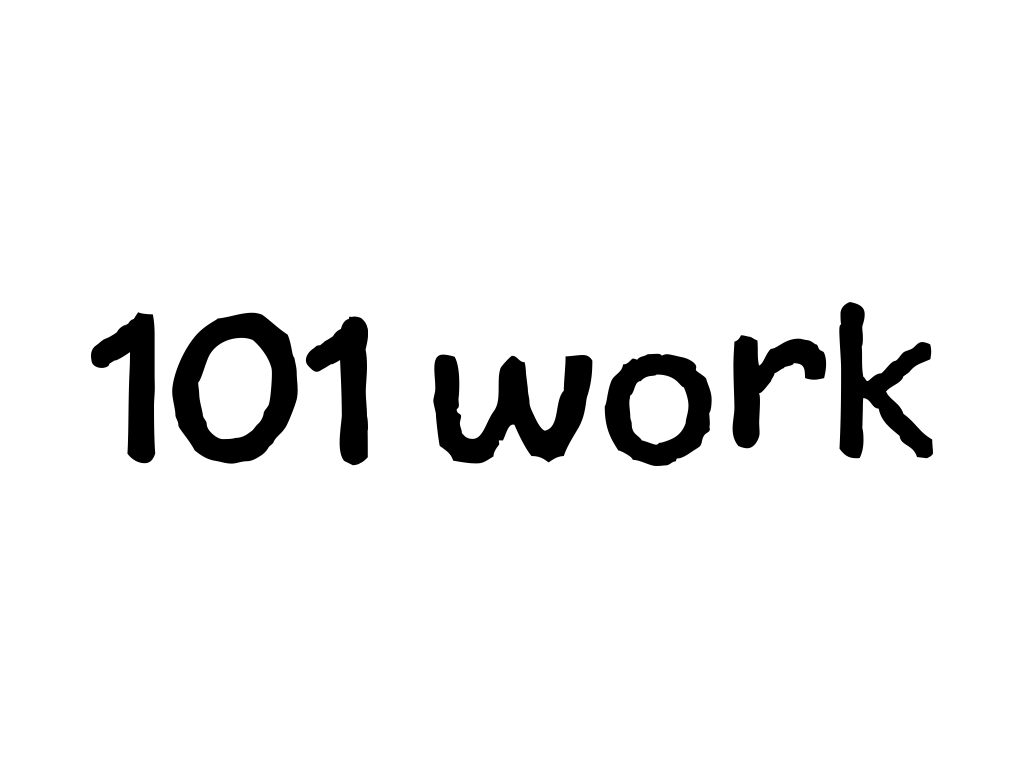
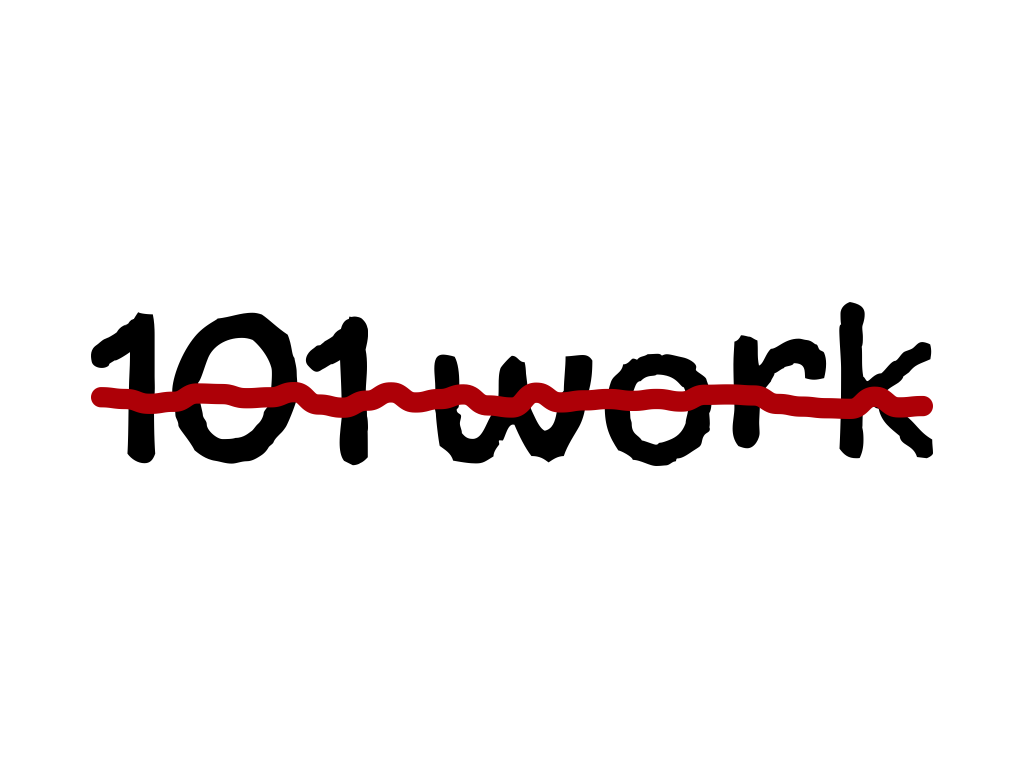
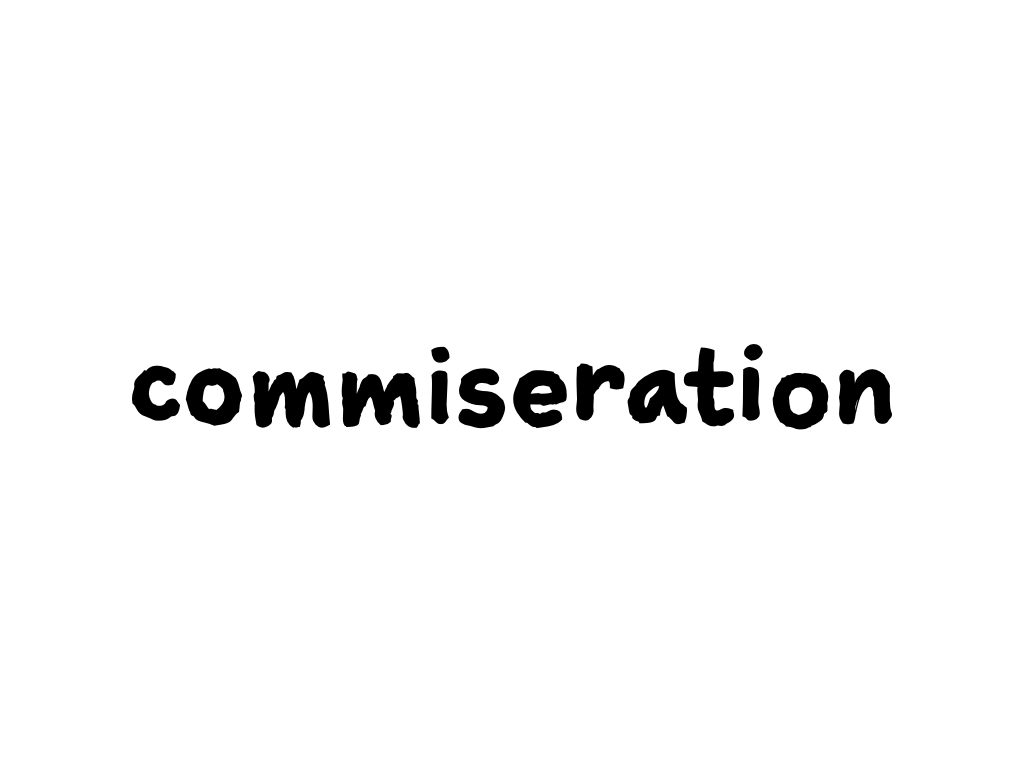
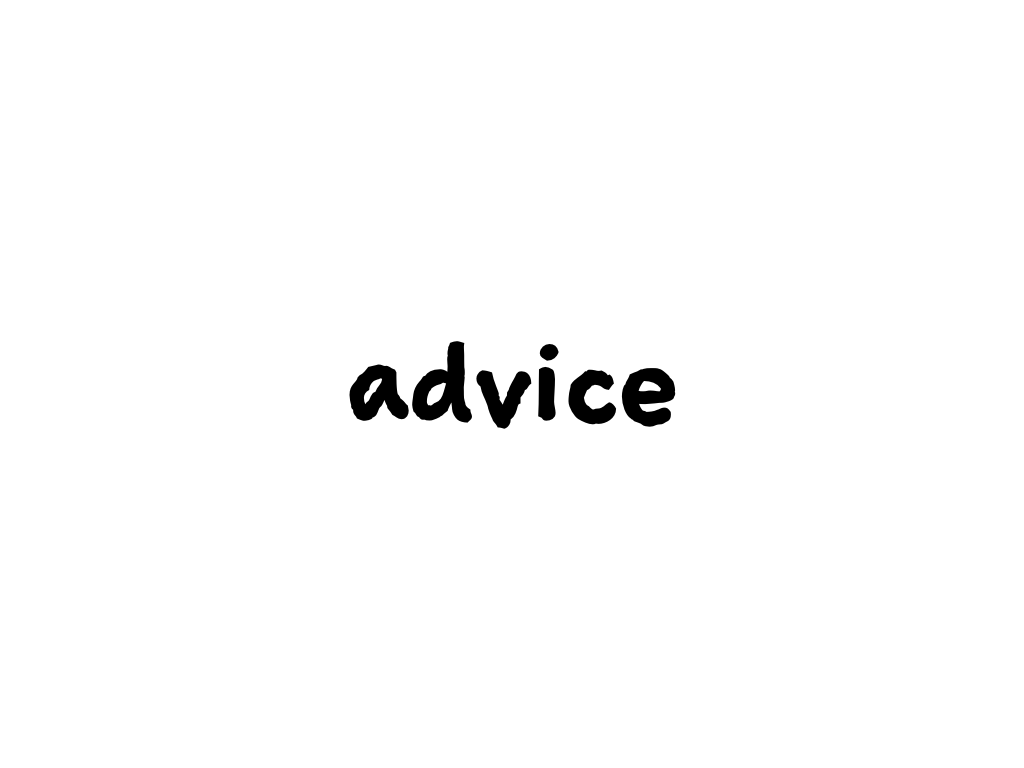
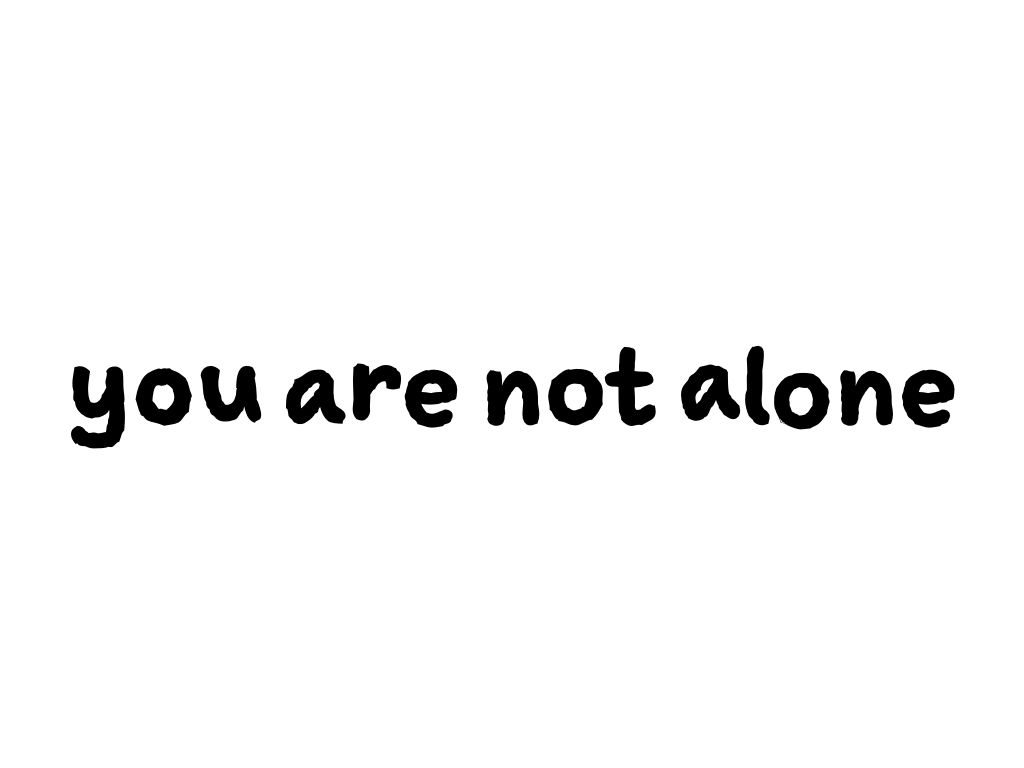
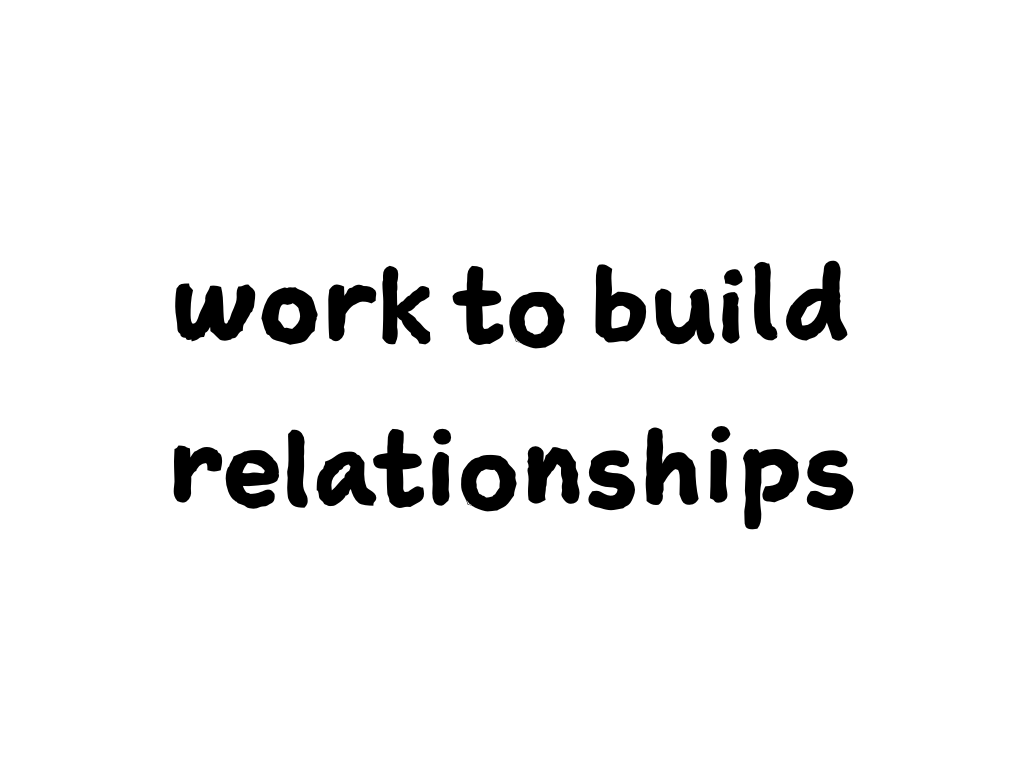
Now this all sounds great, but unlike with a therapist, you can't look up a list of people online, call them up, and make an appointment. These are friendships and like other relationships, you have to work to build them.
Depending on who you are, where you live, and what you're looking for, these people aren't always easy to find. I spent most of my career in Pittsburgh, PA, which is not a big tech city and didn't have that many people who shared my values. I ended up building most of my personal network through a combination of twitter, IRC, and then later, at conferences and using slack. The internet was a great resource for me building my network, and it may be for you too. There's even more awesome online communities now than there were for me five or six years ago.
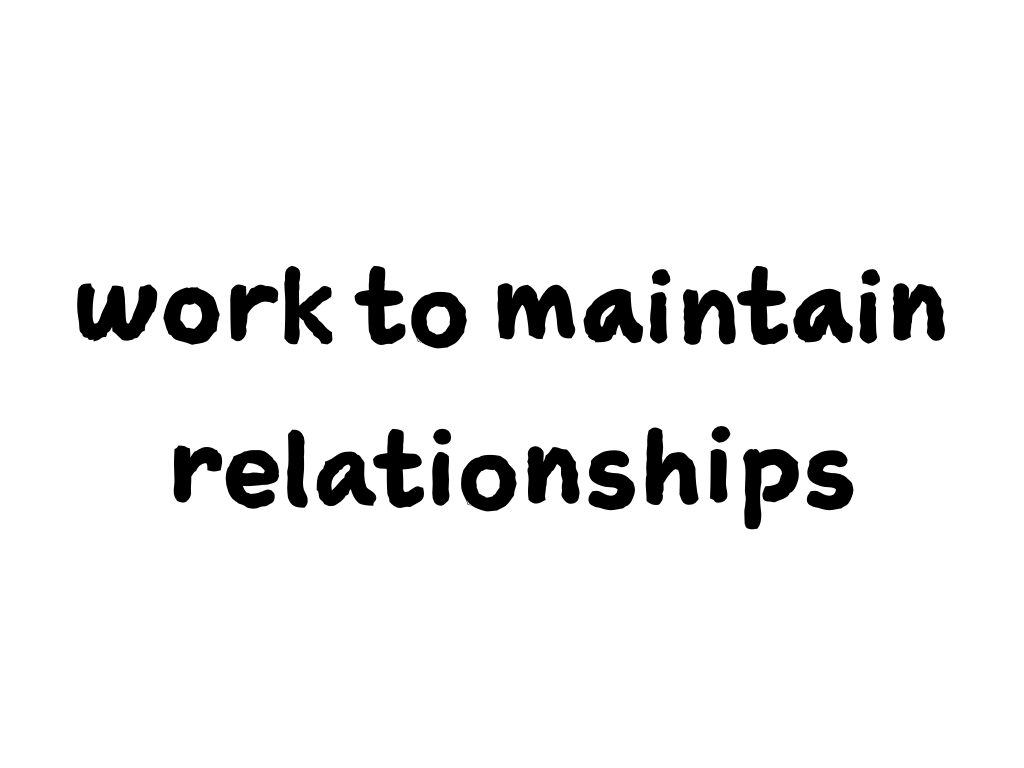
In addition to doing work to build these relationships, you must also do work to maintain them.
You should not treat these relationships like you would a therapist. These are friendships, and they should have a give and take to them. Everyone in this situation is having a hard time and needs support. The goal is harm reduction and that only works if you reciprocate.
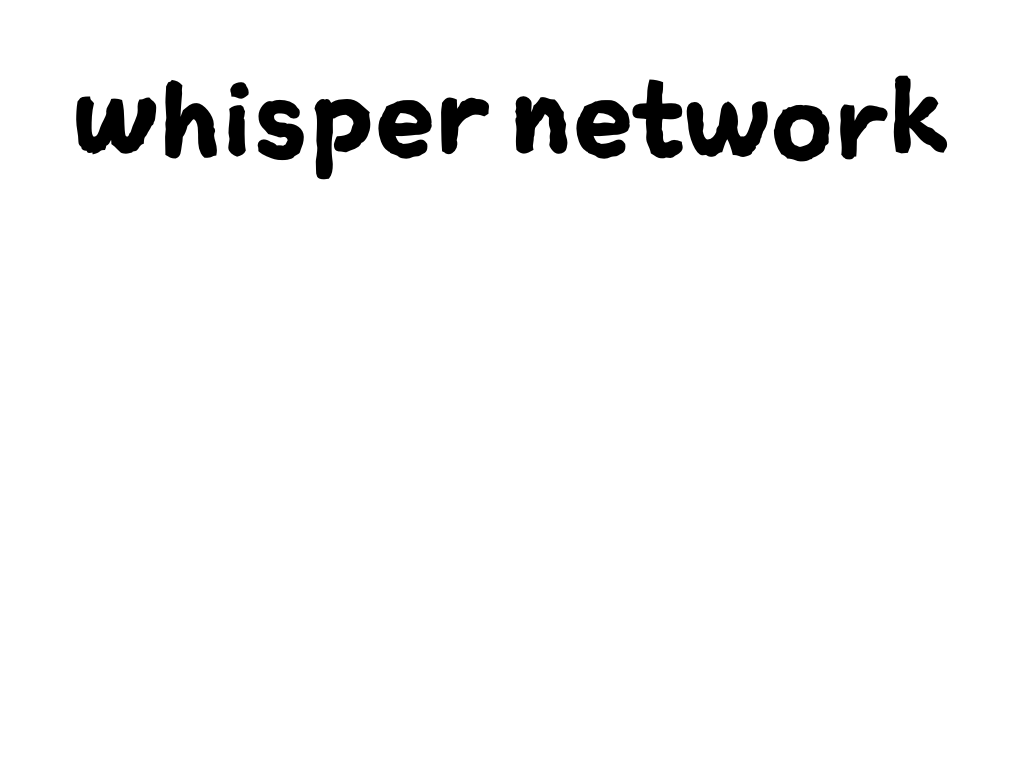
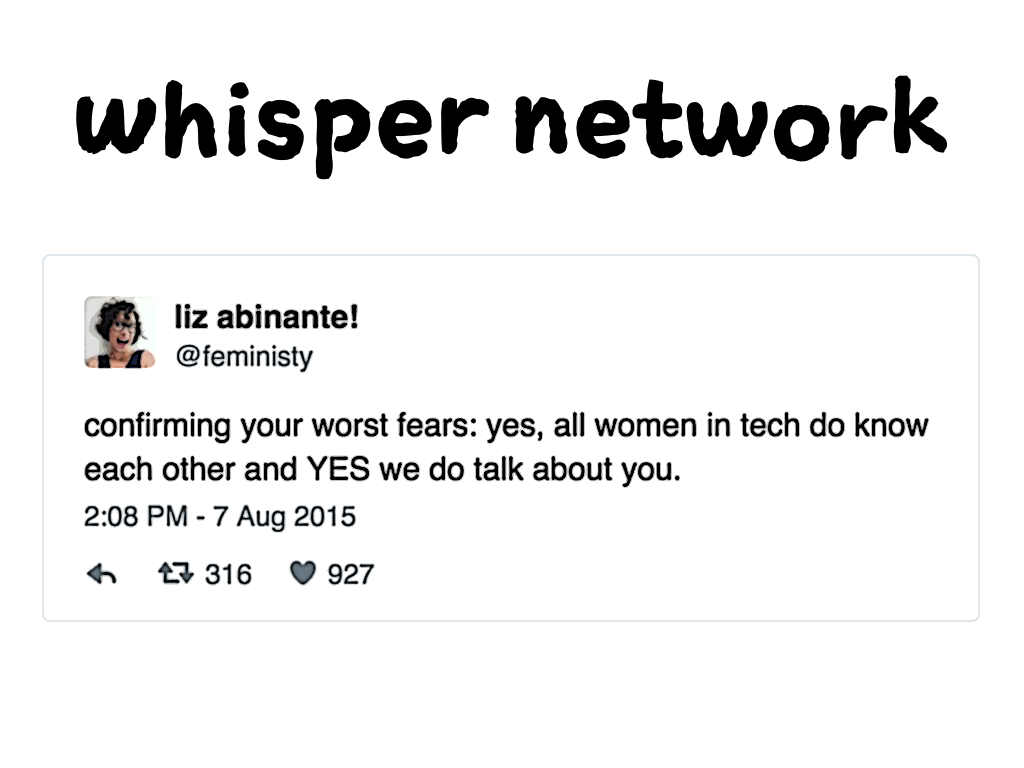
Helpfully summarized by my friend Liz: Confirming your worst fears: yes, all women in tech do know each other and YES we do talk about you.
Your whisper network doesn't have to be all women, although it is for some people. The point of the whisper network is to warn you about sources of harm and where they live: people, places, employers, events, etc. This doesn't remove the harm, but it allows you to make informed decisions about where you put your time and energy, which can help you reduce harm for yourself.
This isn't ideal, but it's not safe to share this information more widely. Access to this information is one of the reasons it is important to build a personal network.
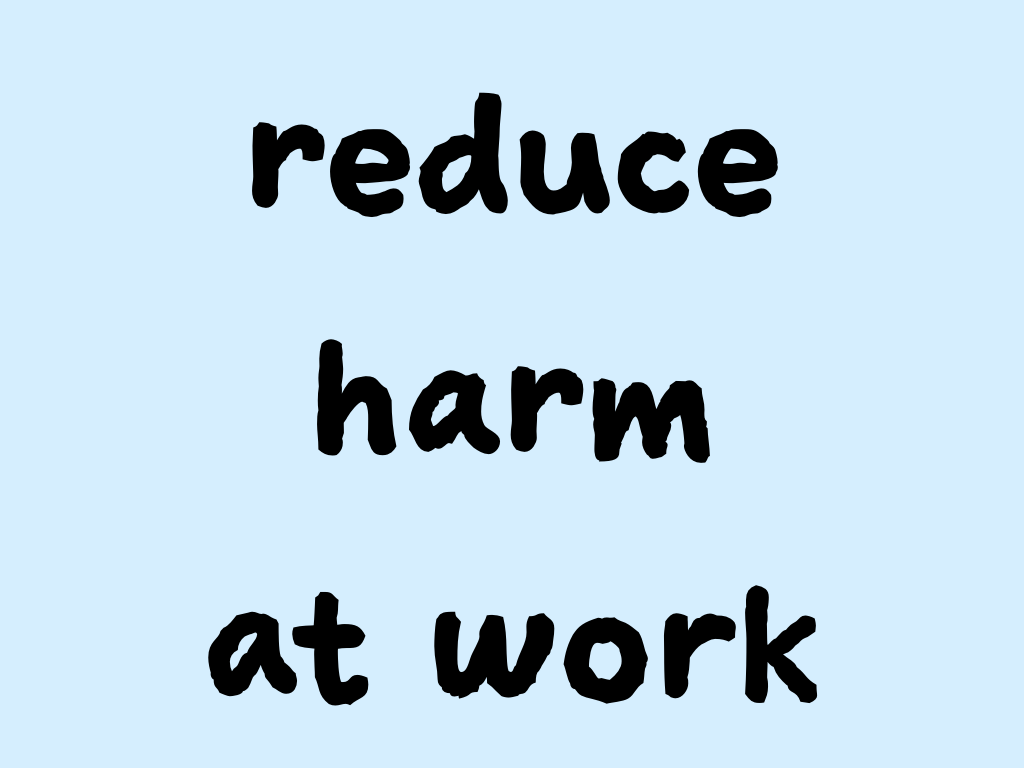
An important place to consider doing harm reduction is at work. A huge amount of the harm comes from work, largely because of time. We spend a lot of time at work. For most people, at least 40 hours a week. Let's be honest, for many of us, it's a lot more than that. As a result, a lot of harm can come from there.
This also means that you can get a lot of return on investment by doing harm reduction at work. Unfortunately, this is also one of the harder places to do harm reduction. There isn't really one thing you can do.
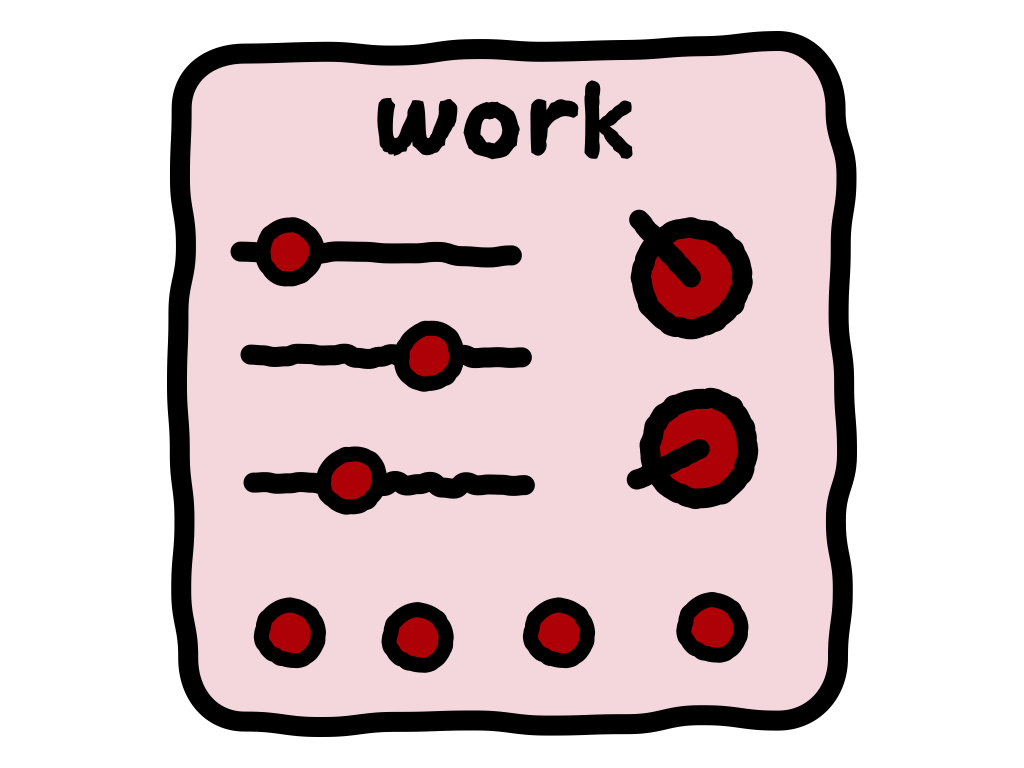
I like to look at it as a collection of variables you can play with. Dials you can turn. Buttons you can press. Et cetera.
How you should set those variables is very individualized. It requires a degree of introspection to figure out. You have to look at your career so far and think about: what has worked for you, what hasn't worked for you, where do you need more data to make a decision.
Once you figure out how you want to set those variables, you have to do the hard work of actually setting them, and that isn't always easy. It could require things like changing who you work for, the kind of work you do, or even where you live. This is not easy, but if the amount of harm it reduces is significant for you, then it can be worthwhile because it helps you stay in the industry longer.
I'll give you a few examples of some variables you can play with.
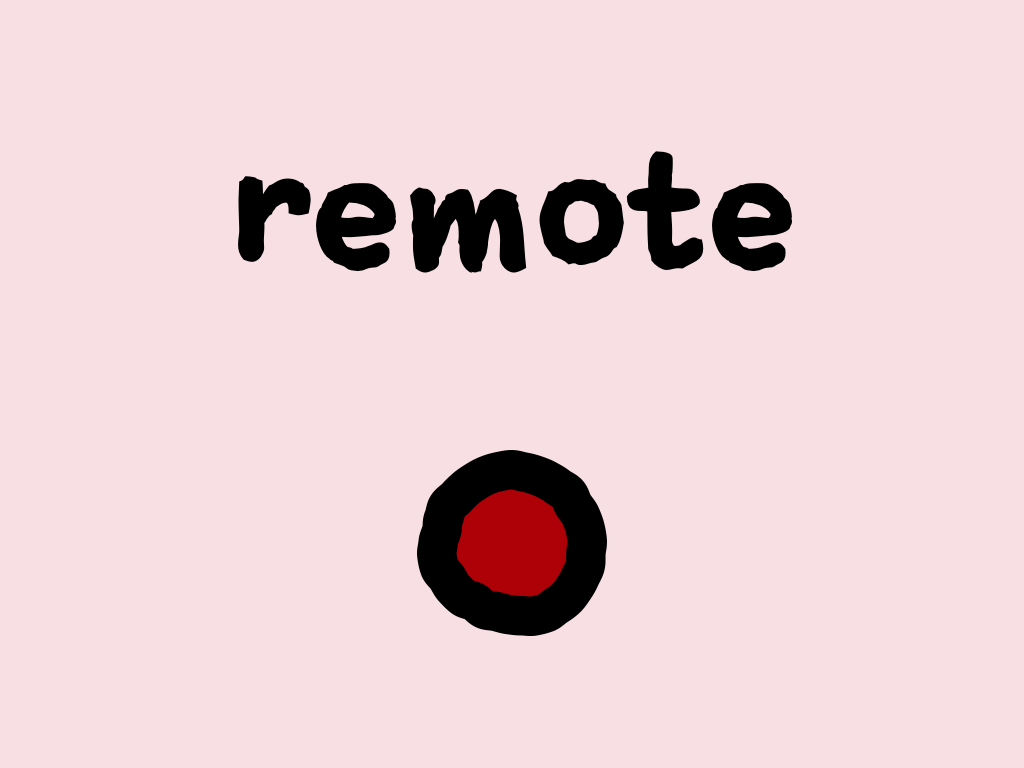
The variable I have heard recommended the most is working remotely. There's two big ways this can help with harm reduction.
The first is that working remotely allows you to avoid open workspaces, which study after study have shown are harmful for just about everyone. For certain kinds of people, that harm goes above and beyond. For example, certain kinds of non-neurotypical people and people with compromised immune systems are significantly harmed by open workspaces. Working remotely can be a huge form of harm reduction for them.
The other reason working remotely can help is by reducing harm from your coworkers, who are so frequently a source of harm for people who are different. It doesn't remove the harm, but it can reduce it by giving you a physical separation and distance from your coworkers. It removes harm that comes from sharing a physical space. It can reduce certain kinds of social situations that lead to harm. And lastly, it allows you to close your laptop and walk away when you're having a problem with somebody, which is so much easier than walking away when you're having a problem in physicality.
Some other variables you can play with include...
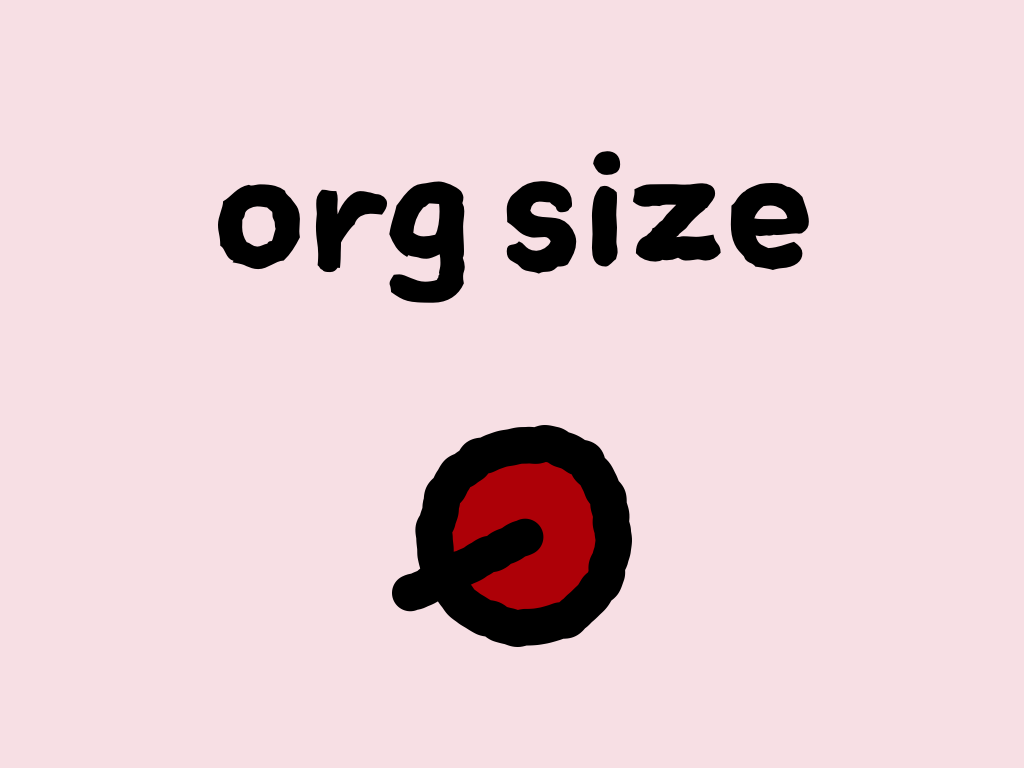

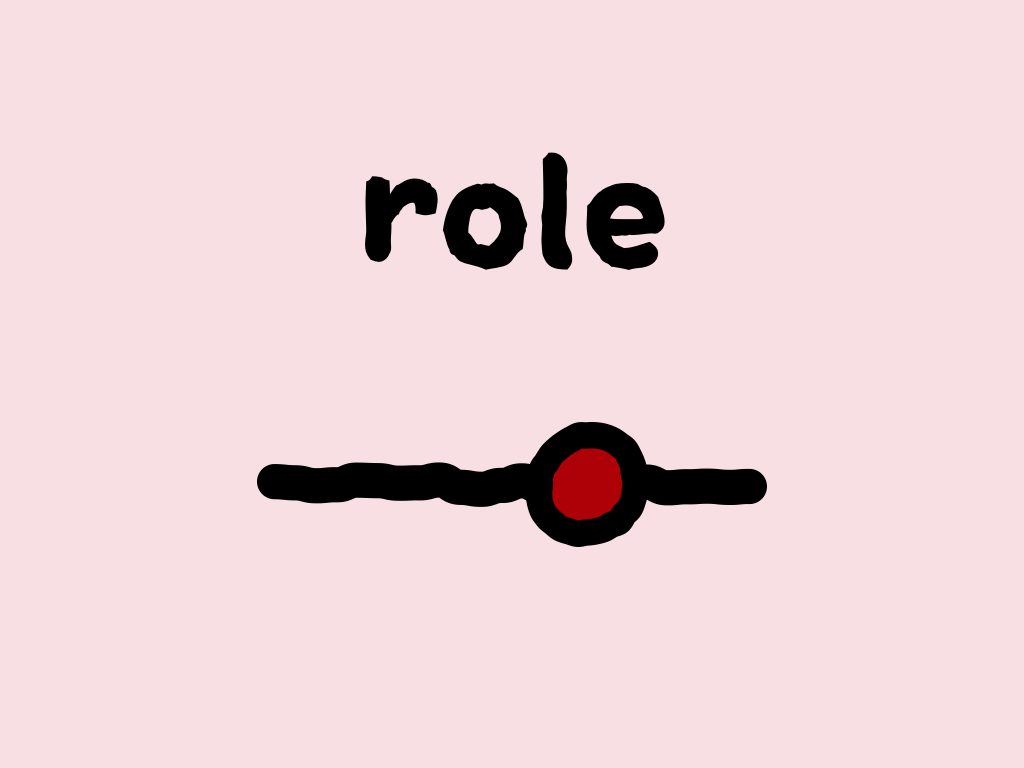
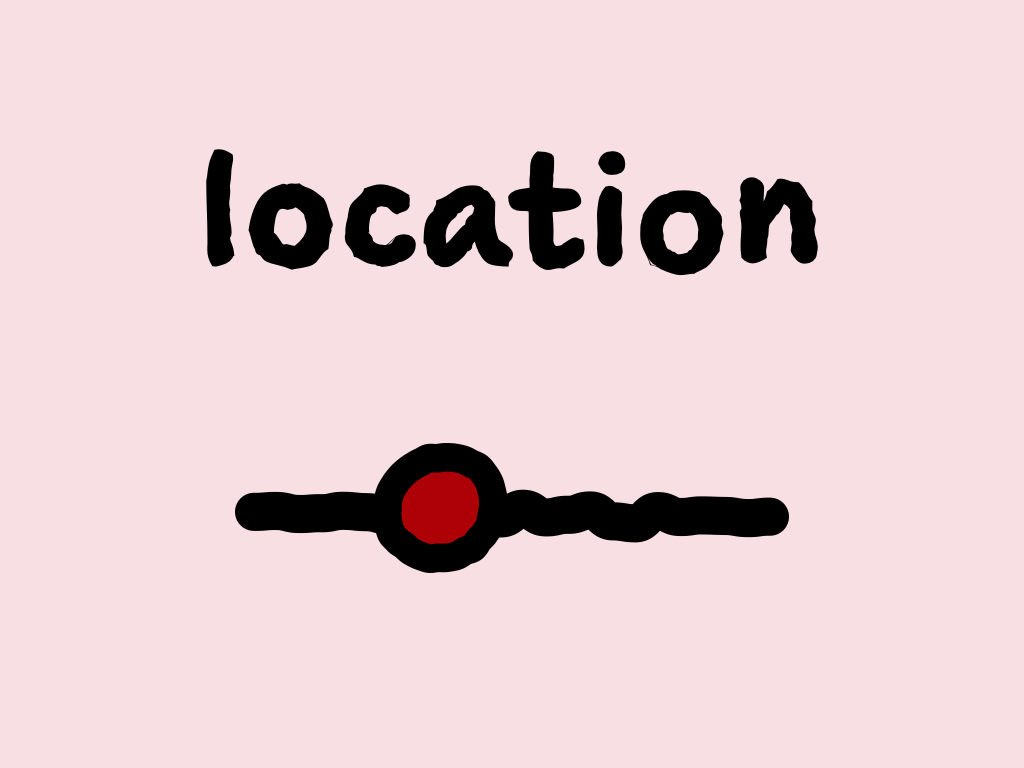
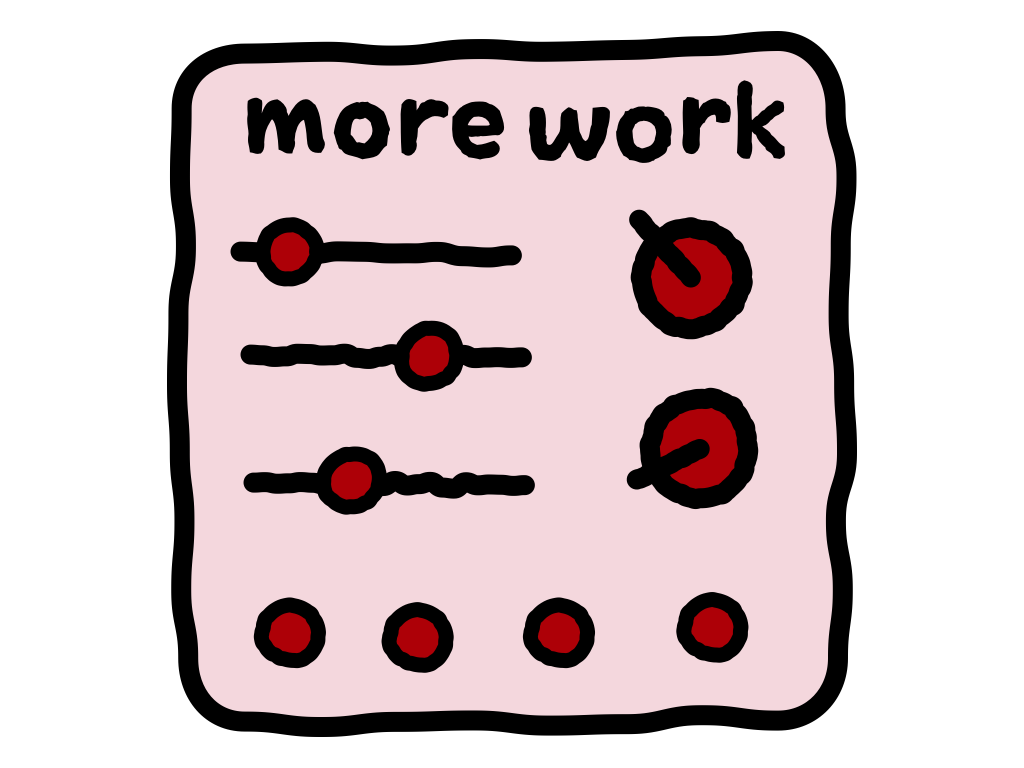
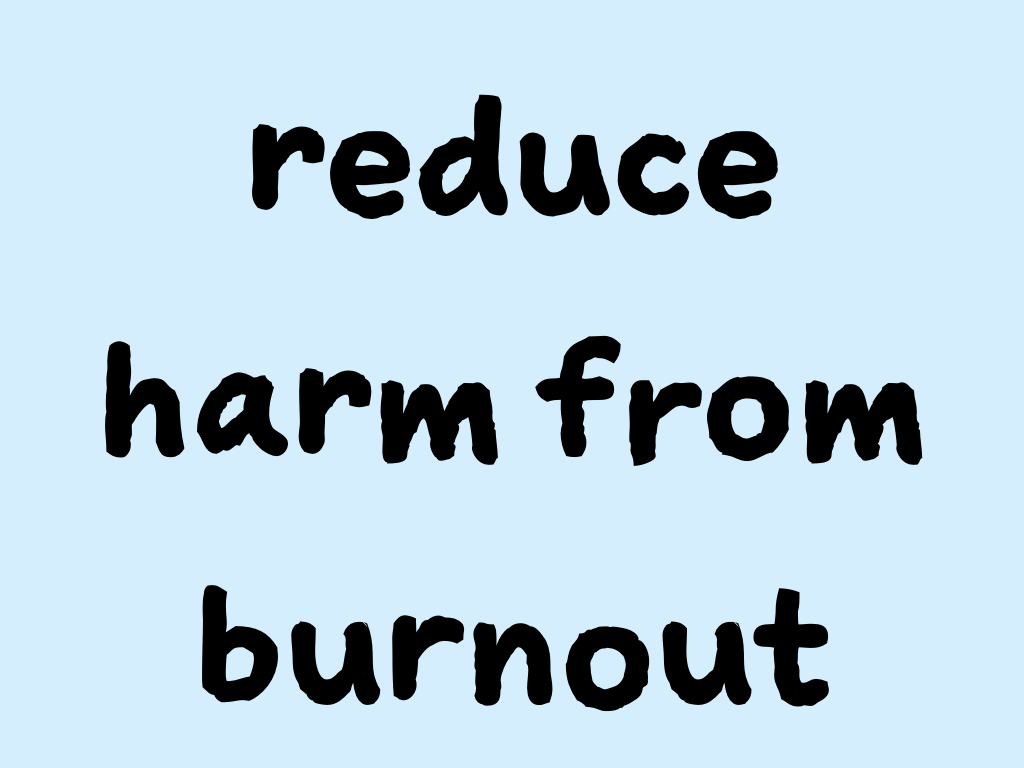
Another important place to reduce harm is reducing harm from burnout. You may have noticed, I keep saying reduce, not remove. This is another case of that.
If you are different from the homogeneous norm in tech, you may find that you have to...
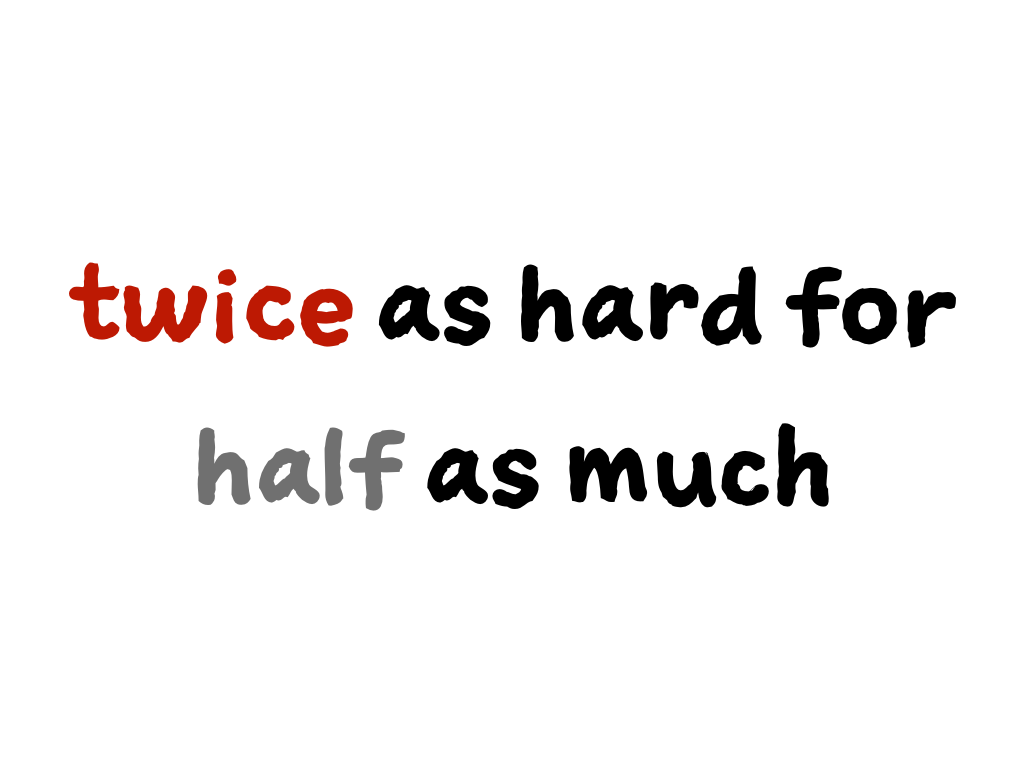


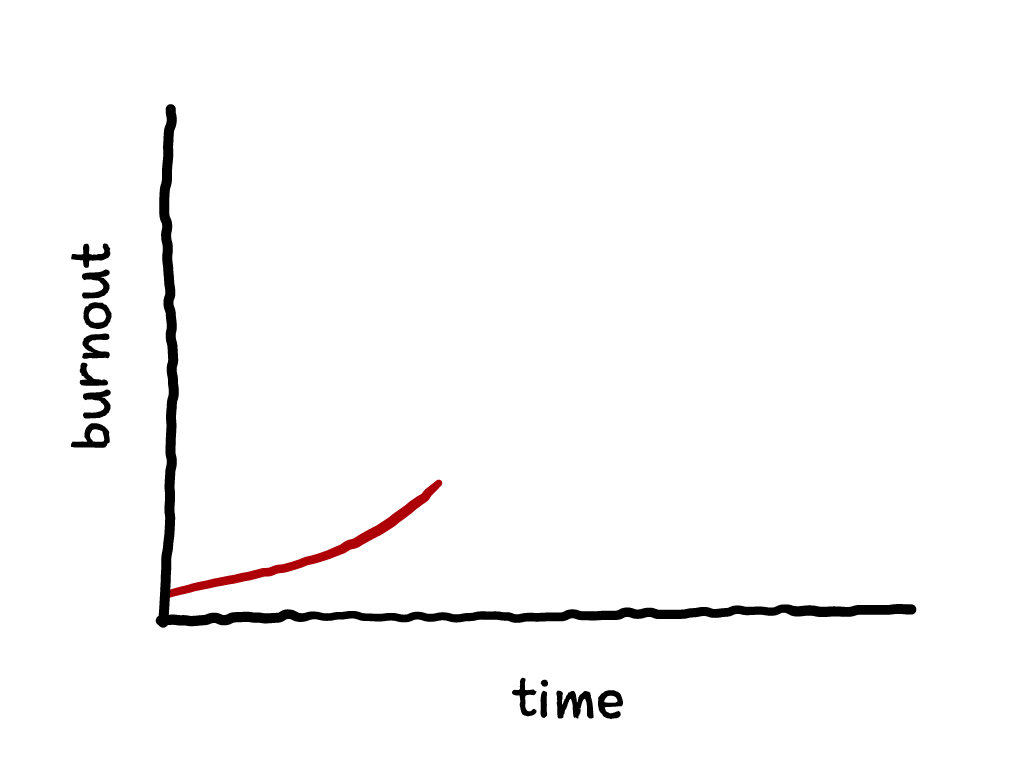
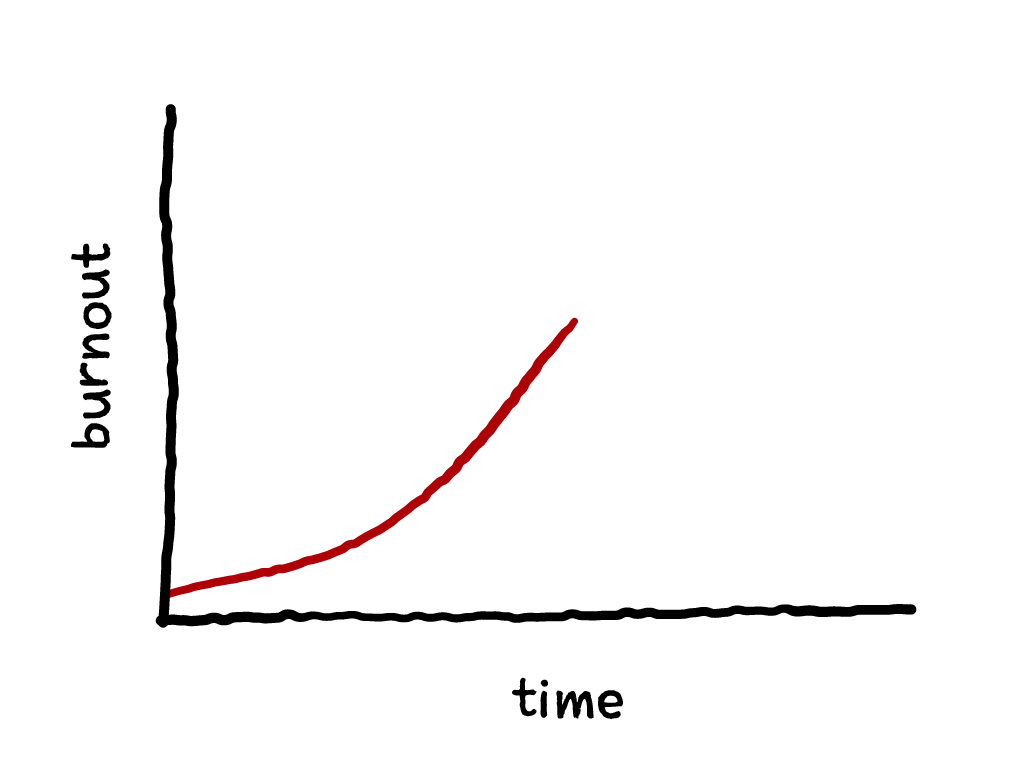

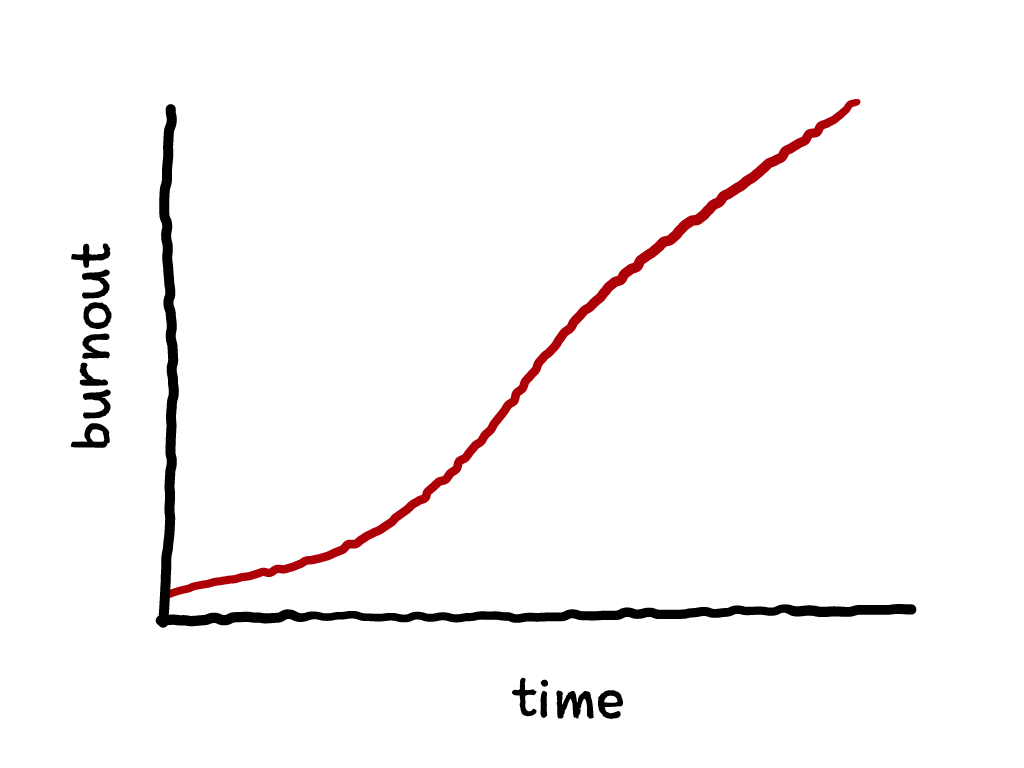
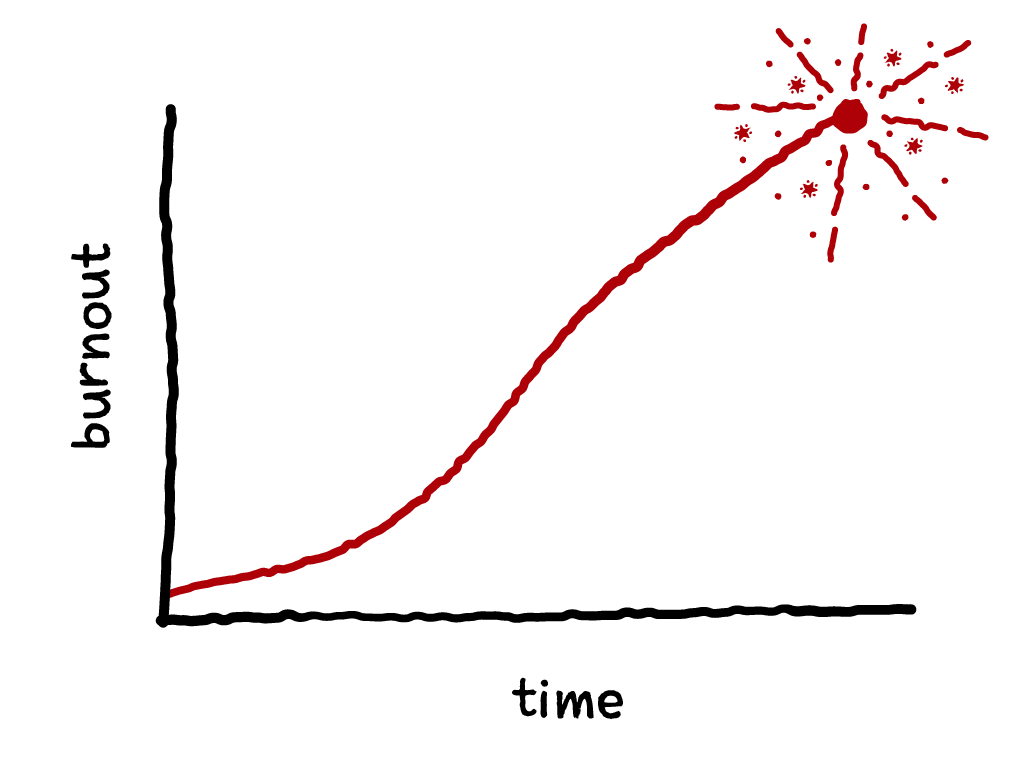


I think you should say "no" to corporate diversity work.
It is second shift work, work you are asked to do on top of your normal duties.
You will not be rewarded for it. In the rare case you are, it will never be proportional to the effort that you put into it.
Worst of all, this work often distracts from your technical accomplishments, which is how you are actually rewarded in this industry.
It is a one-way ticket to burnout.
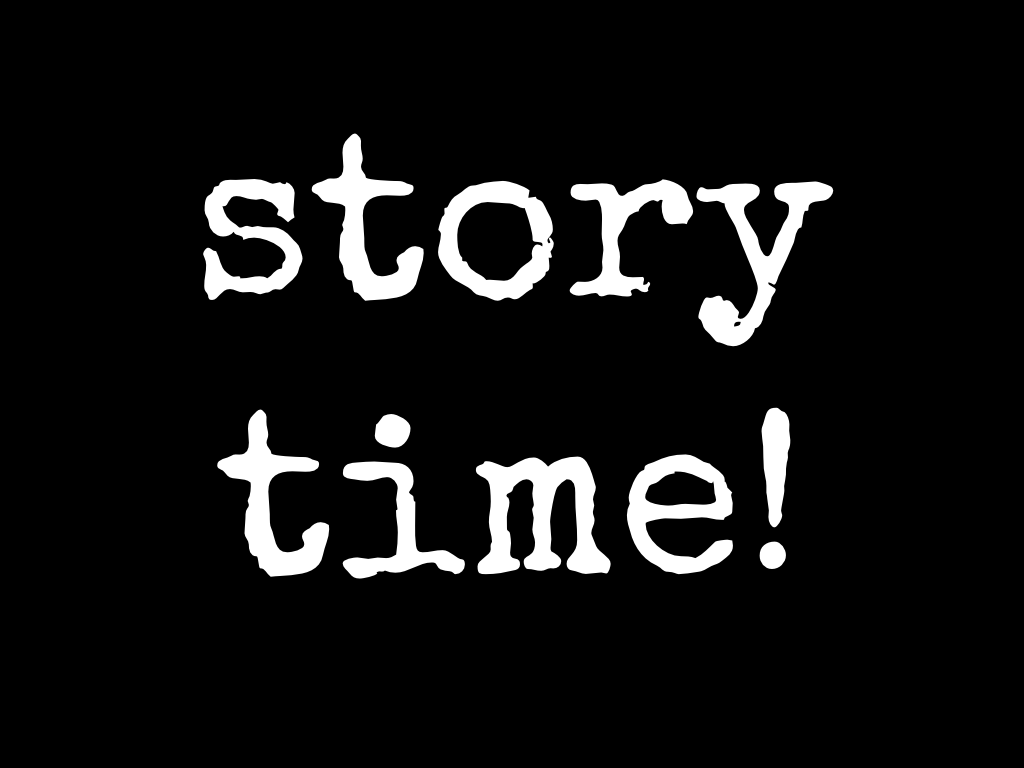

The large conglomerate I worked for when I got sick last year had a problem with this. I had asked about it, and the answer was always, "that doesn't sound good, but the answer is above my pay grade."
The day I returned from my medical leave, a c-level executive from the company was visiting my tiny branch office in Pittsburgh to give a townhall where anyone could ask a question. I thought to myself, "he's above all of their pay grades. I guess I should ask a question." So I did. I said..
The company says it cares about diversity, but a large portion of the diversity work is pushed on underrepresented employees who are already harmed by diversity-related issues. That work is largely unrewarded. Even worse, that work can distract from people getting promoted, which is how the company rewards people financially. What do you think about that?
His answer was...
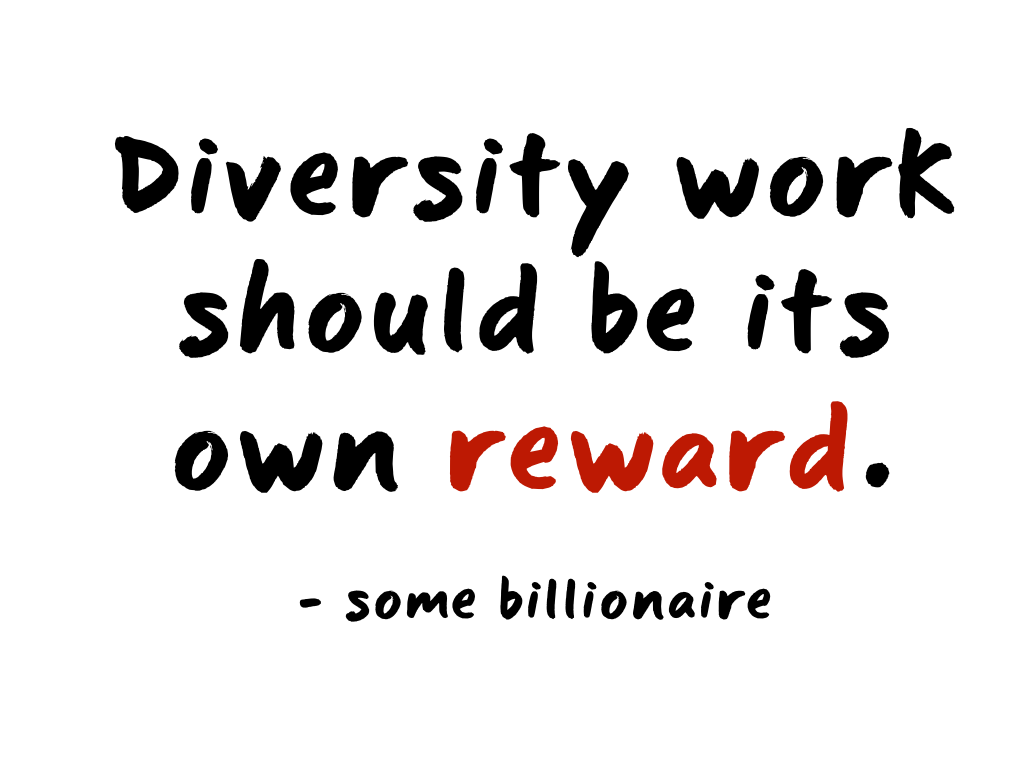
"Diversity work should be it's own reward."
And I said, "but that leads to burnout."
And he said, "but everyone deals with burnout."
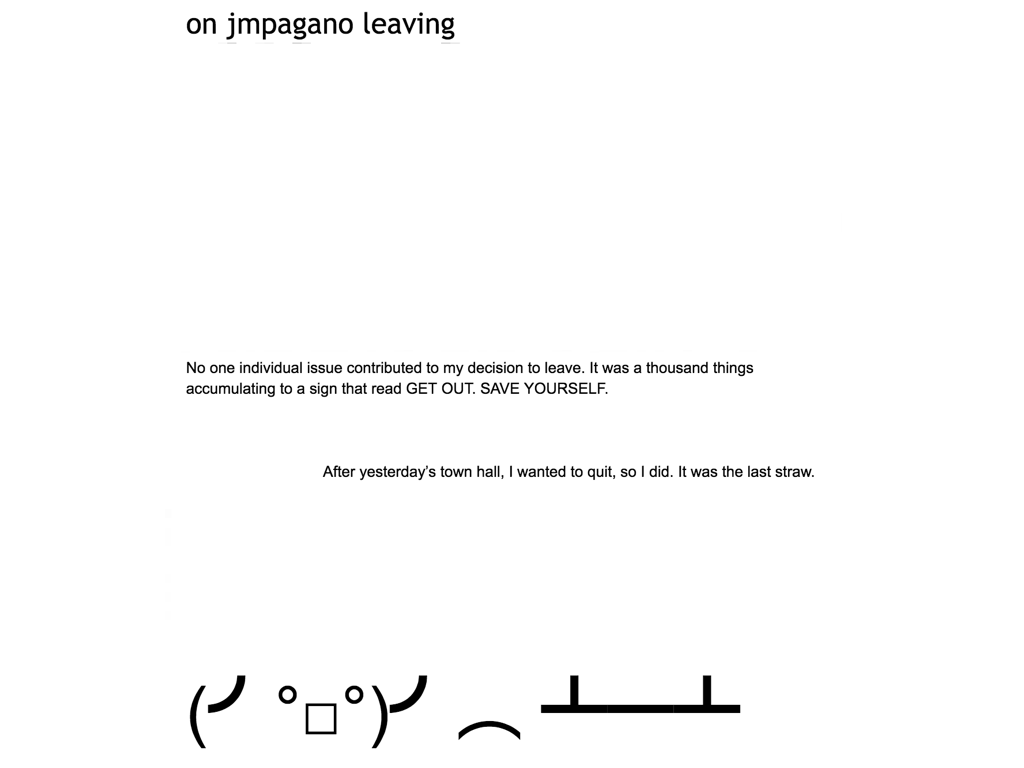
And the next day I quit.
This is a heavily redacted copy of my goodbye letter. I want to call out something I say in here. This was not the only reason I quit. I had been thinking about quitting for months for reasons personal, professional, technical, and, yes, related to diversity. There were a hundred reasons I quit. This was just the last one. This was the straw that broke this camel's back.
Note: slide is more heavily redacted than when originally presented.
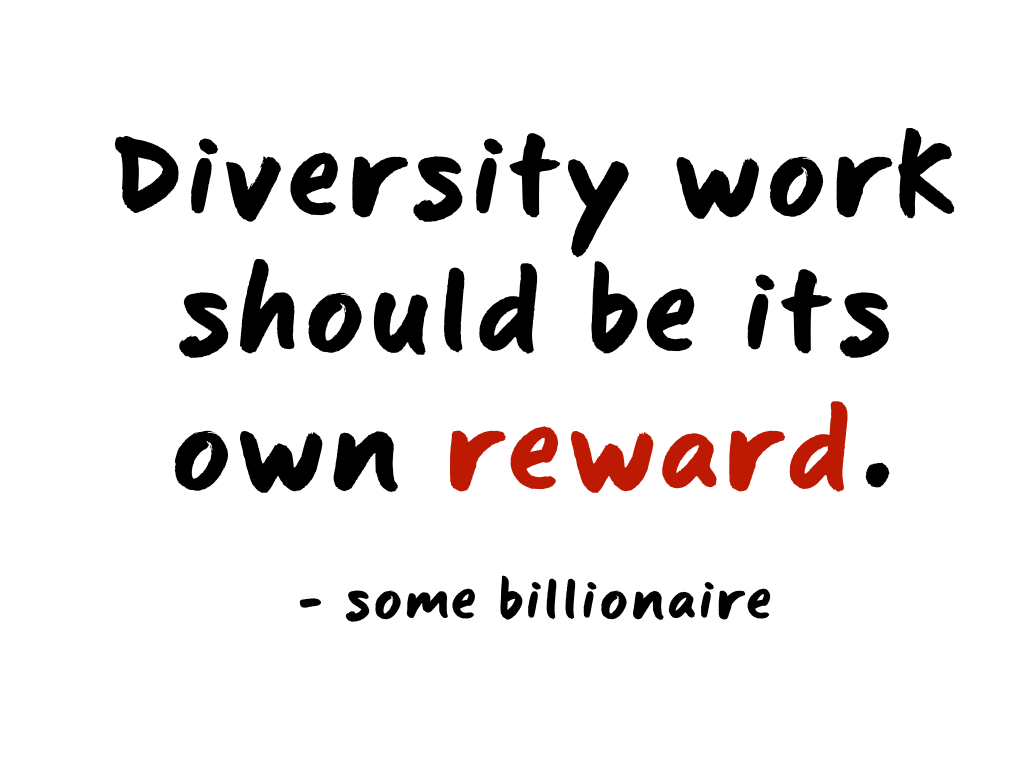
I'm still angry about this answer, but there is something I appreciate about it. The honesty.
I think this is what most corporations believe. Because that is the case, I want you to remember this answer any time you are asked to do corporate diversity work, and I want you to strongly consider saying, "no."
In fact, I want you to remember this answer any time anyone asks you to do diversity work, and I only want you to say yes when you really want to do the work. When it makes you feel good. It enriches you. It makes you feel like you are helping people. Because that is the only reward you will ever get for it.

I want to remind you that your continued survival in this industry, flouting attrition statistics, is diversity work. It is hard diversity work, and it is the only diversity work you ever have to do if that's what you want.

Last, but not least, I want to give you something to watch out for. I'm going to argue this is harm reduction because a lot of the harm for me was in the surprise of it, and maybe if I warn you, it will hurt a little bit less.
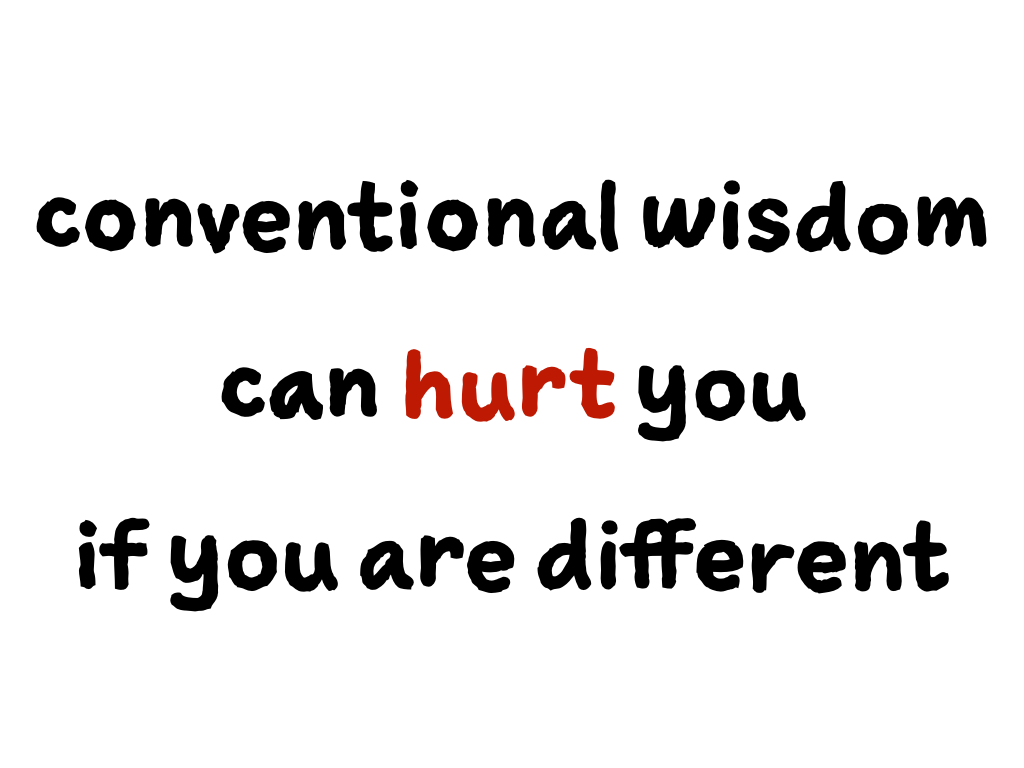
I mentioned earlier that conventional wisdom can hurt you if you are different. I want to talk about an example of that.
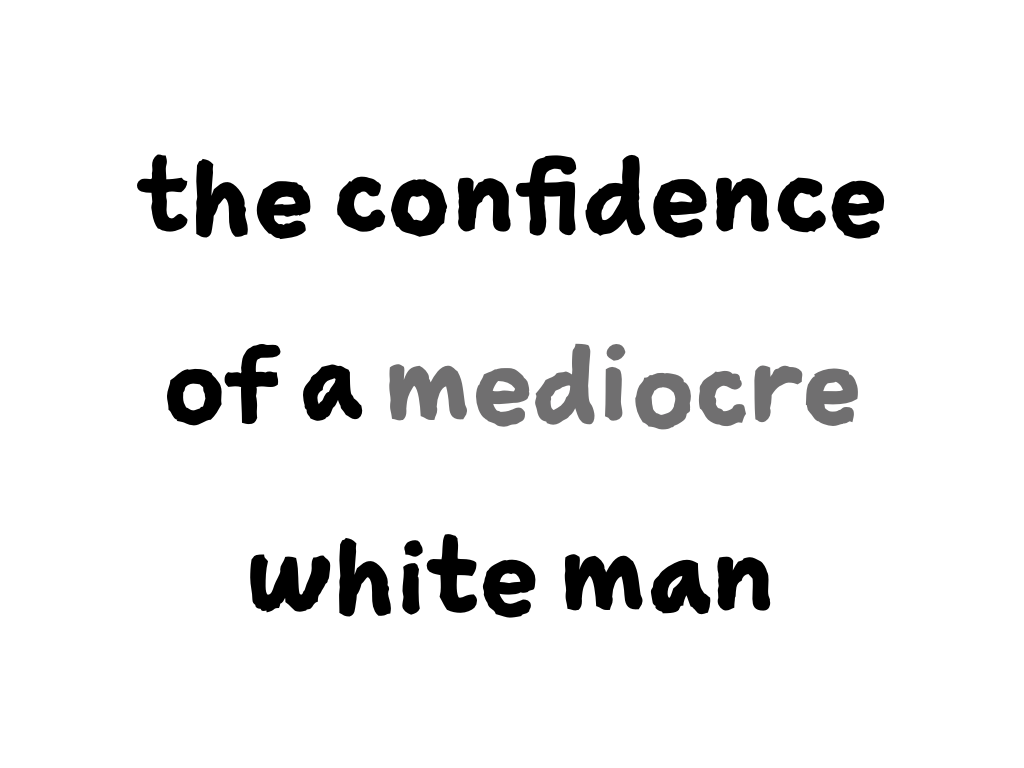
A lot of people have been joking recently about the confidence of a mediocre white man. I like this joke. It's funny...until I think about it too much, and then I realize...
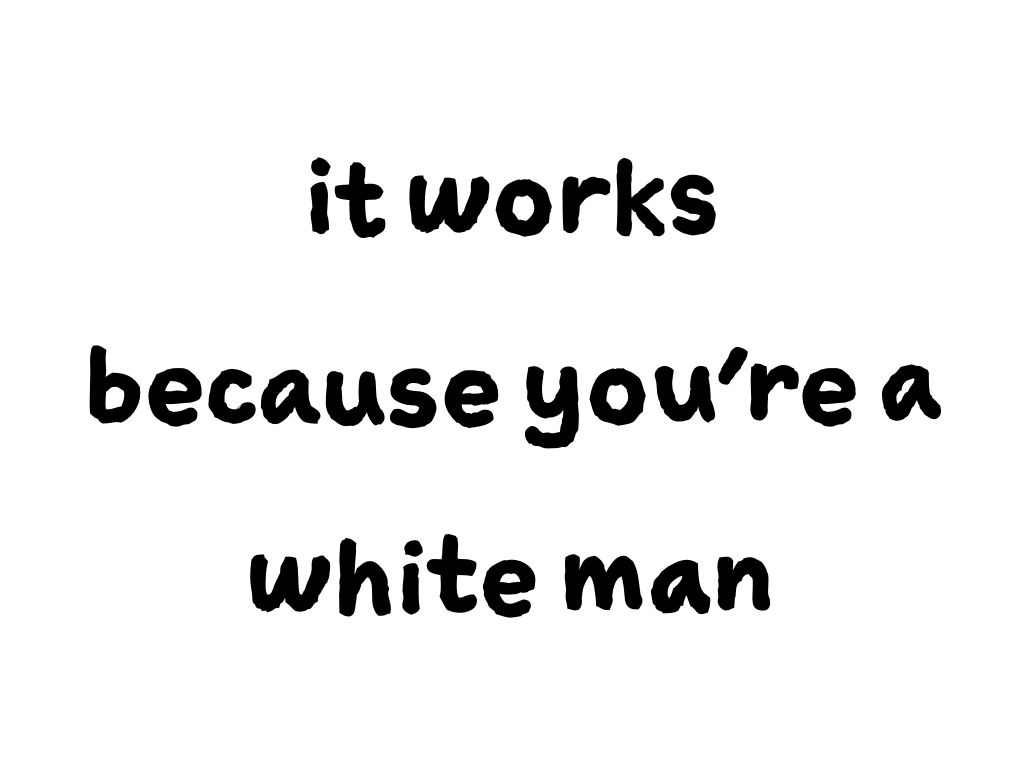
...it works because you're a white man.
For those of us who are different from the homogeneous norm in tech, confidence doesn't always come so easily. We often have to deal with things like...


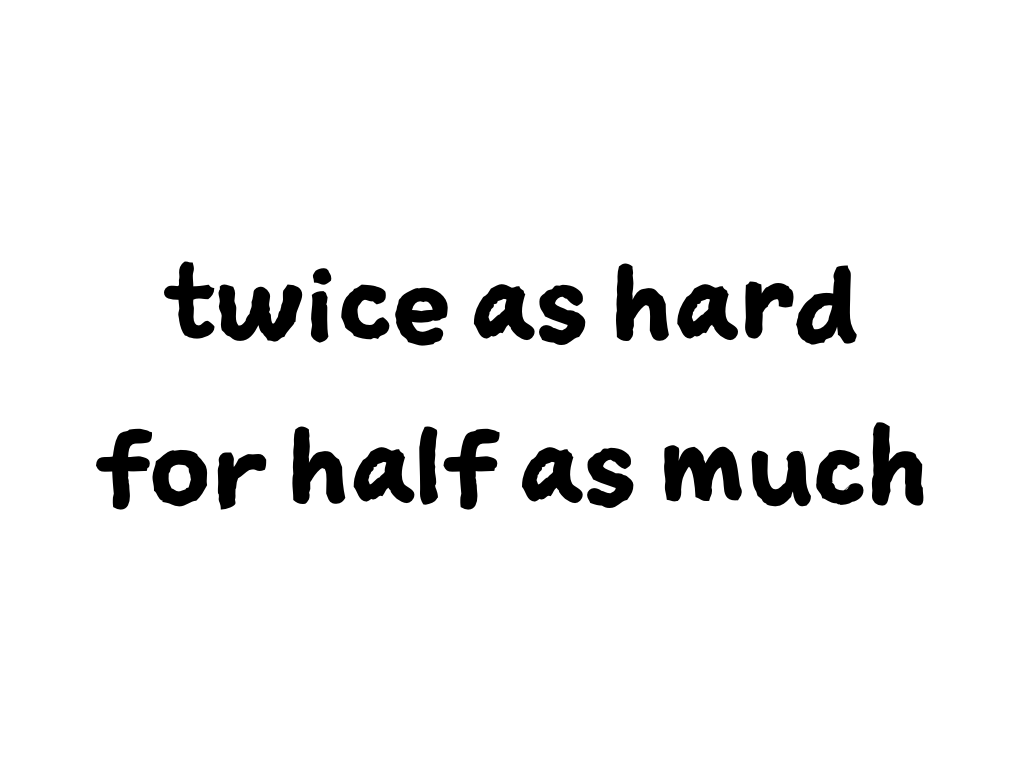
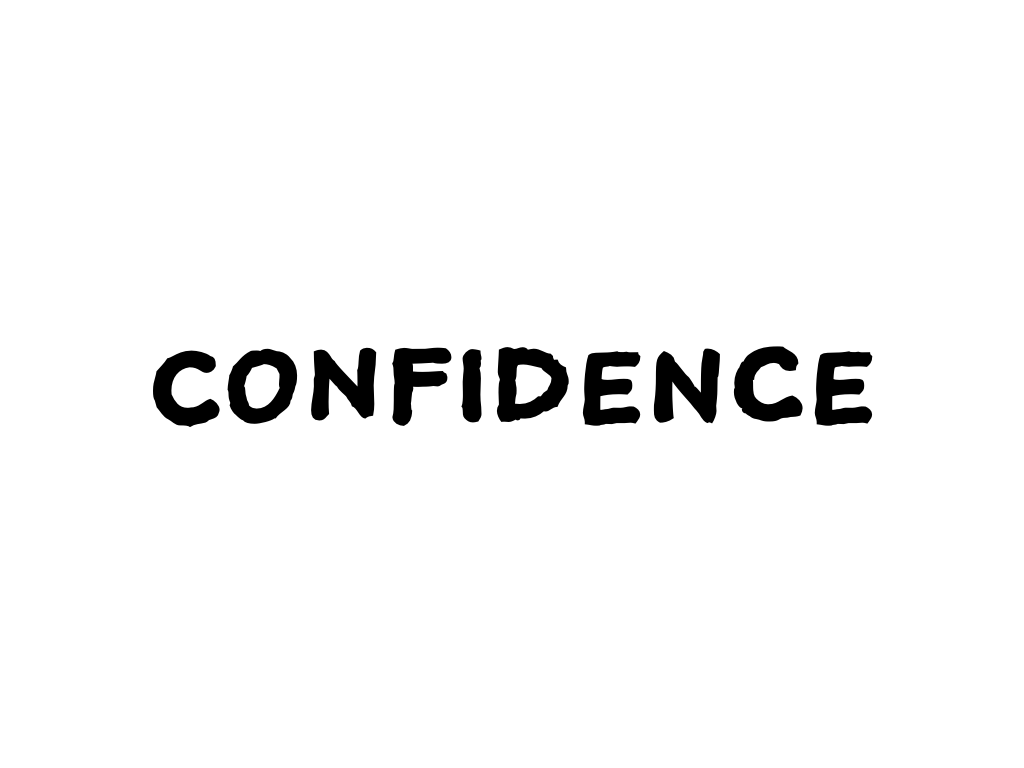
For us, confidence is often hard-won. We might not find it until we progress in our careers. And when you finally find that confidence, you will learn that...
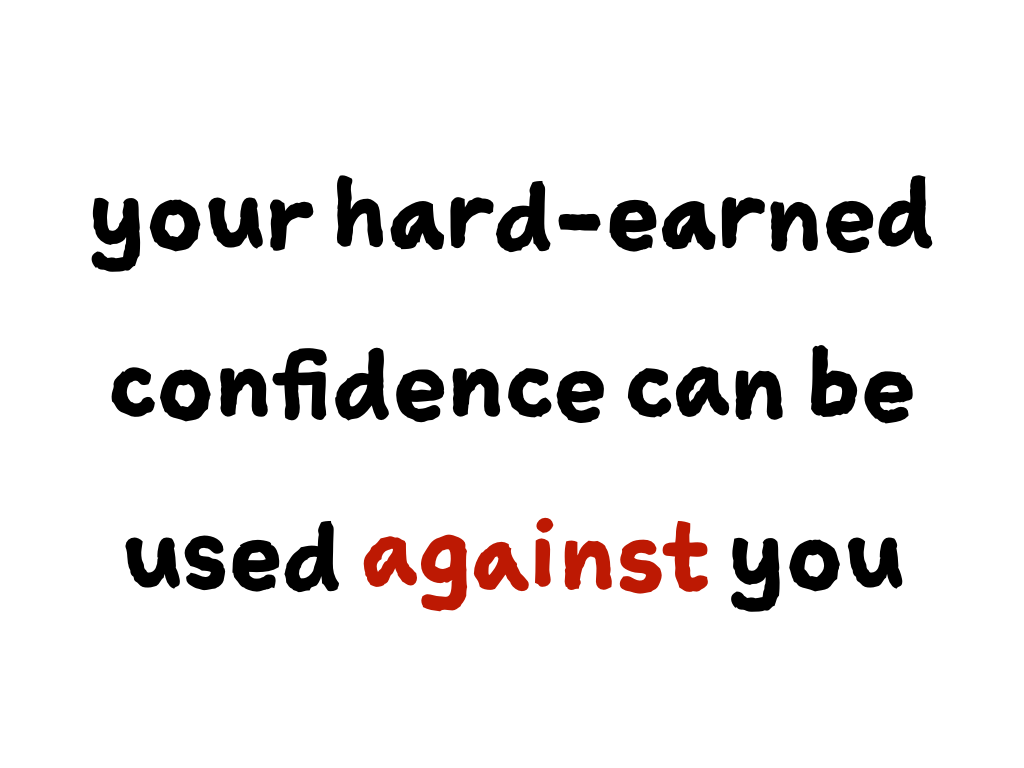
...your hard-earned confidence can, and will, be used against you.
The confidence that is exalted and rewarded in the mediocre white man will get you told...
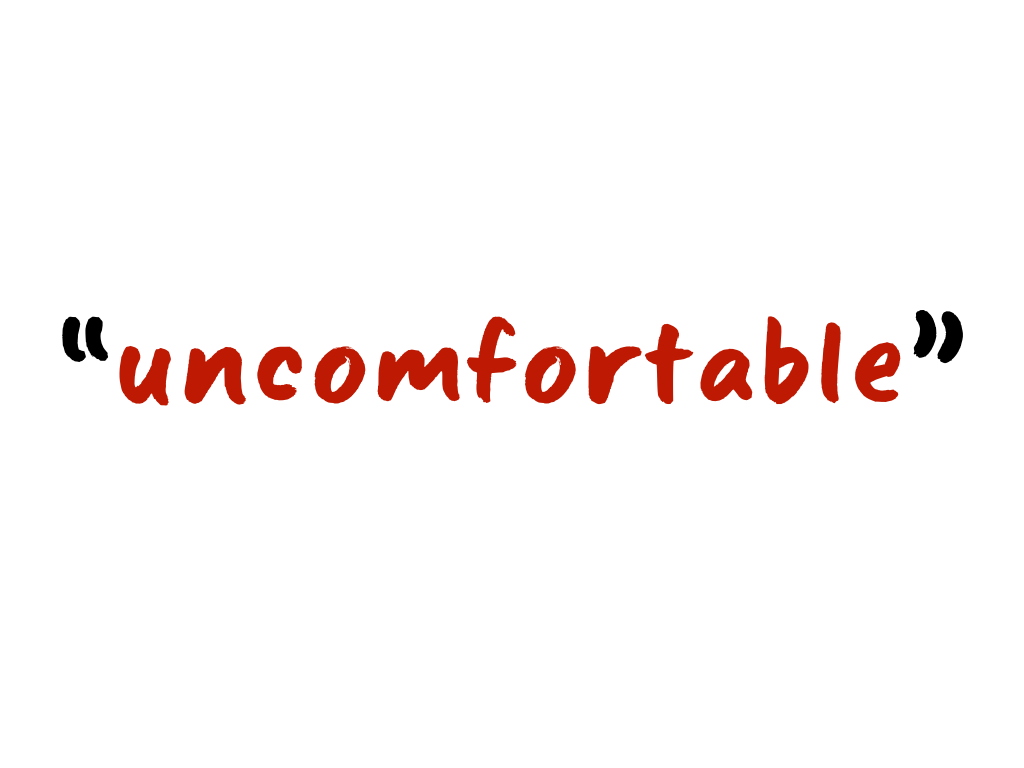
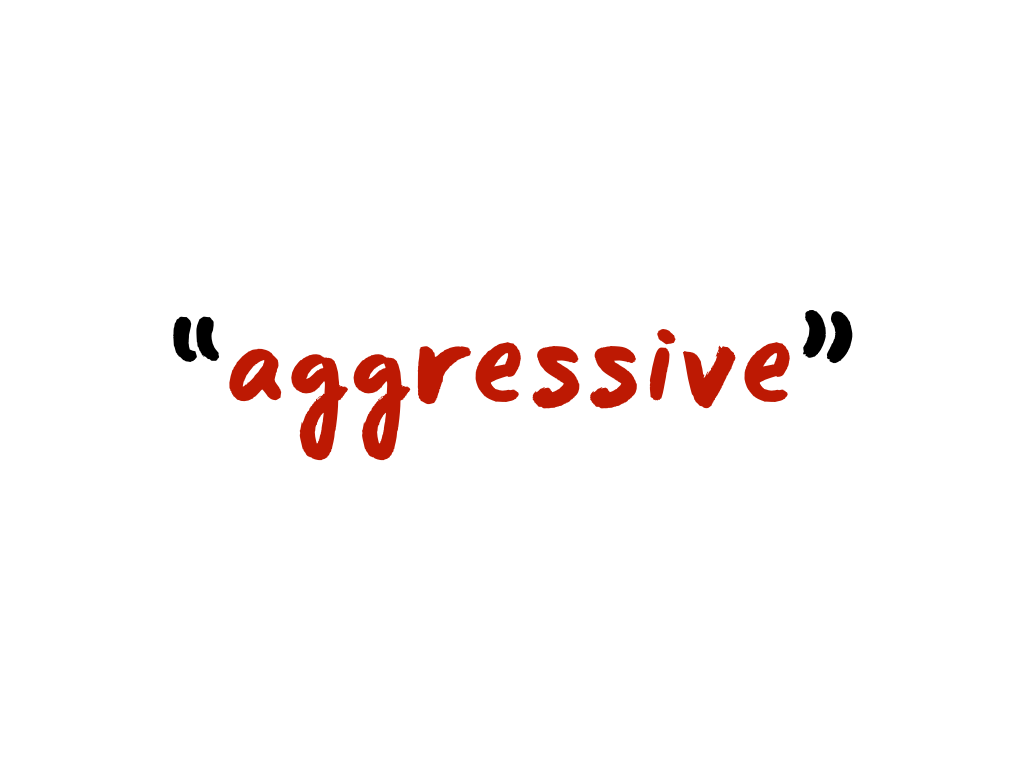
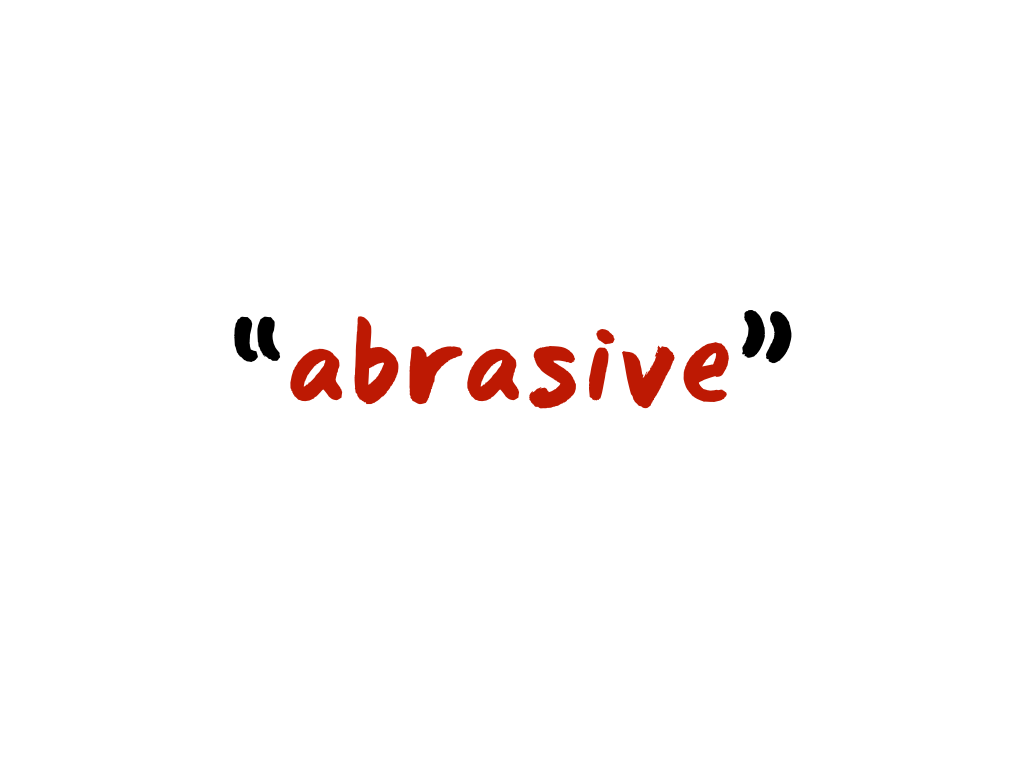

And you realize that you cannot fucking win.
It might break your heart a little.


The story about the job I took after I left the conglomerate.
I ended up at an early-stage startup. The last place I expected to be, but they said all the right things. They convinced me they weren't like the other startups. And perhaps most importantly...
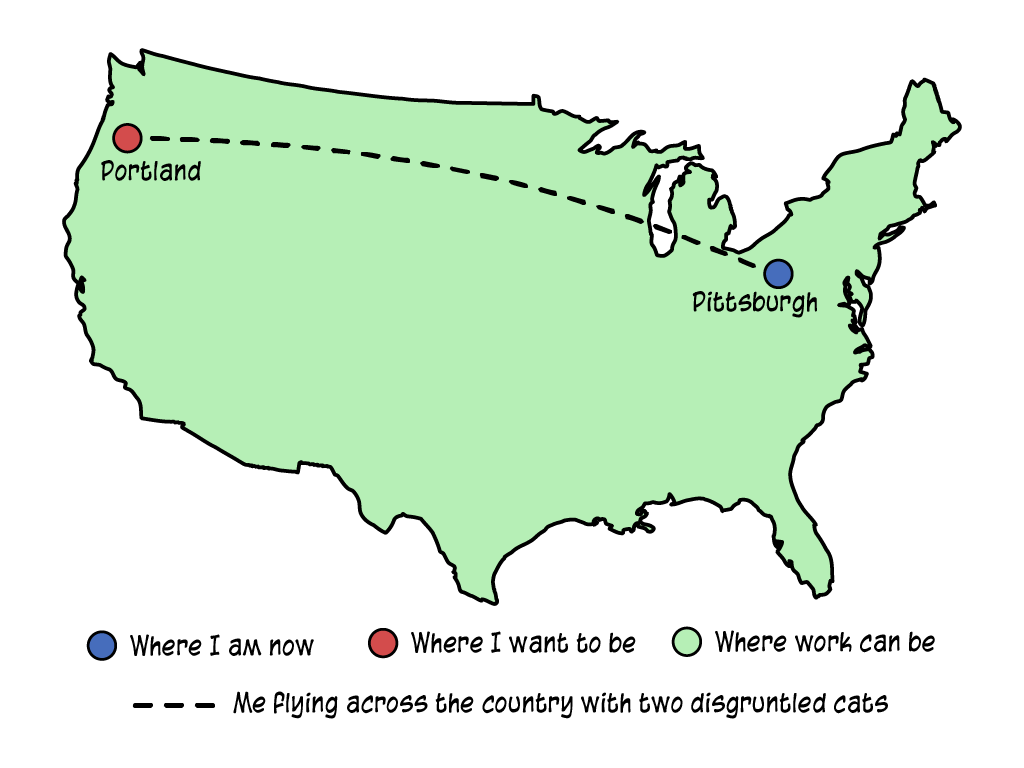
...they offered to pay for me to move to Portland, which I so desperately wanted to do.

I was there for about nine months, and it was ok. Not awesome. Not terrible. Okay. But at the end of those nine months, I was...
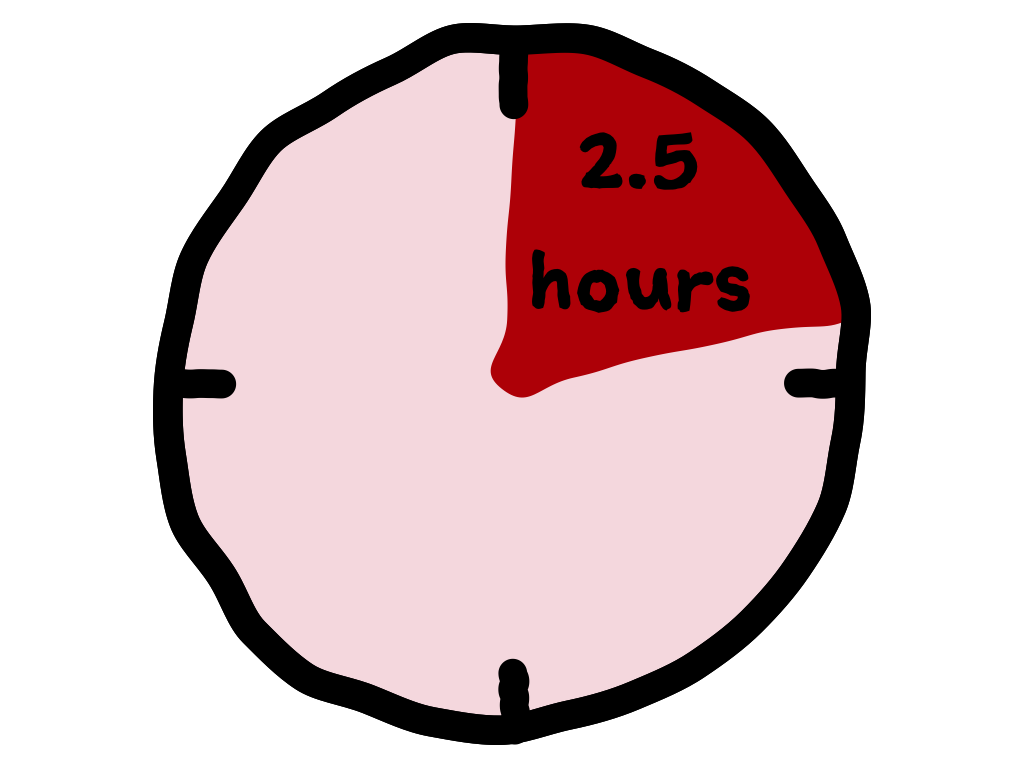
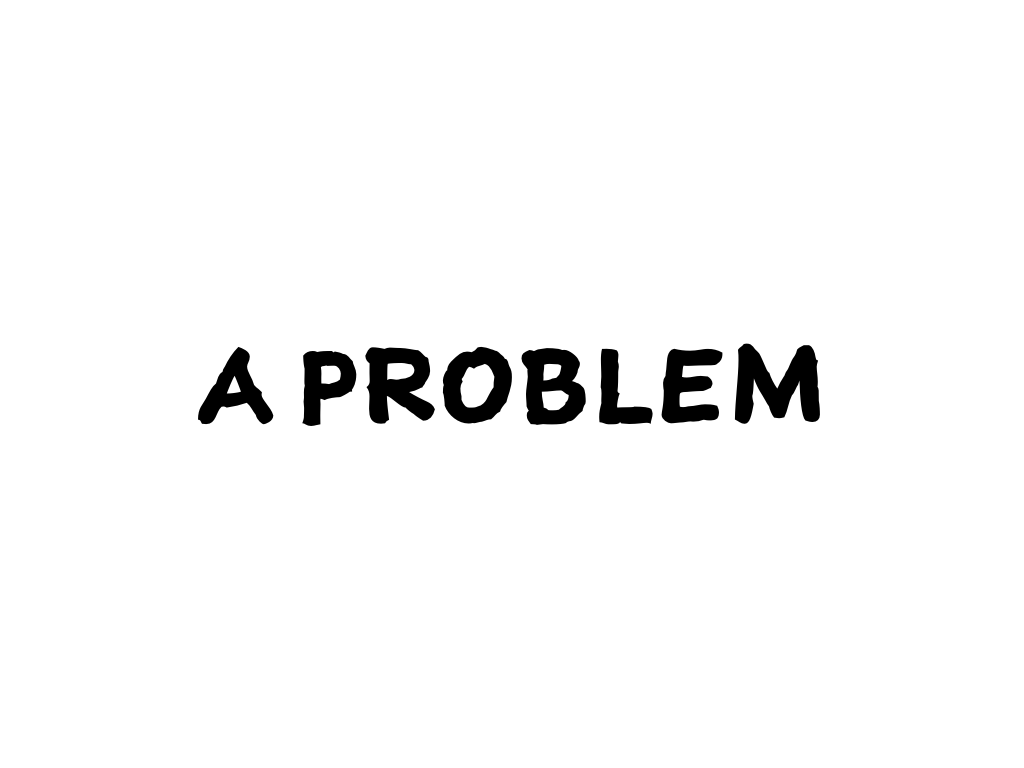
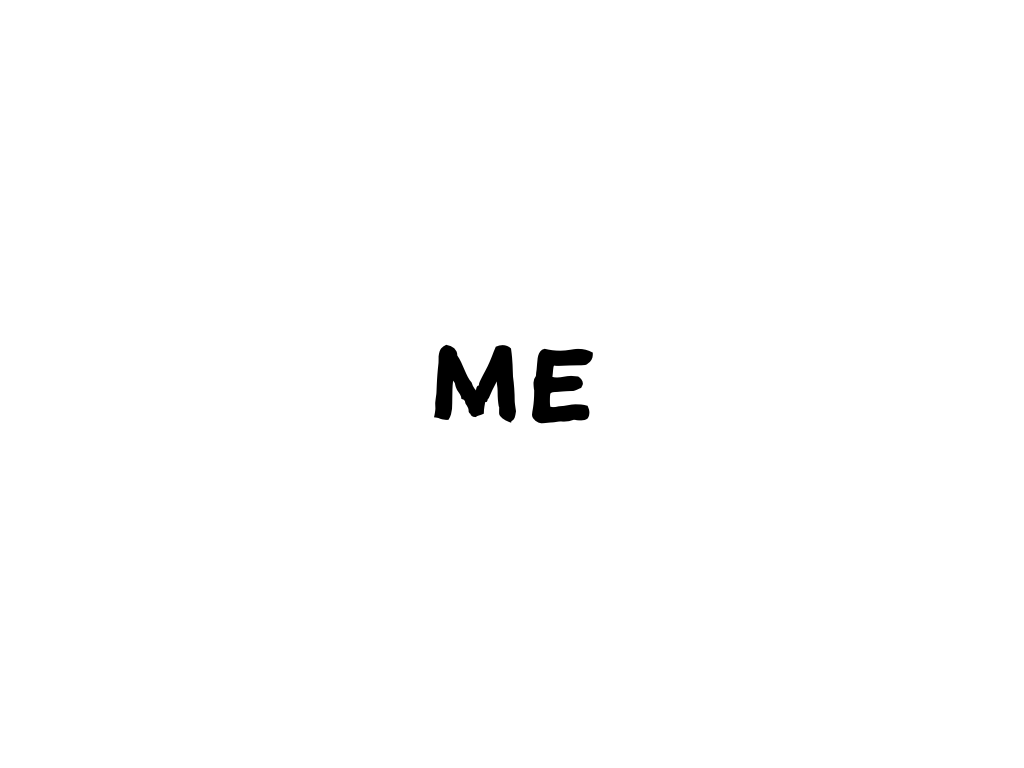
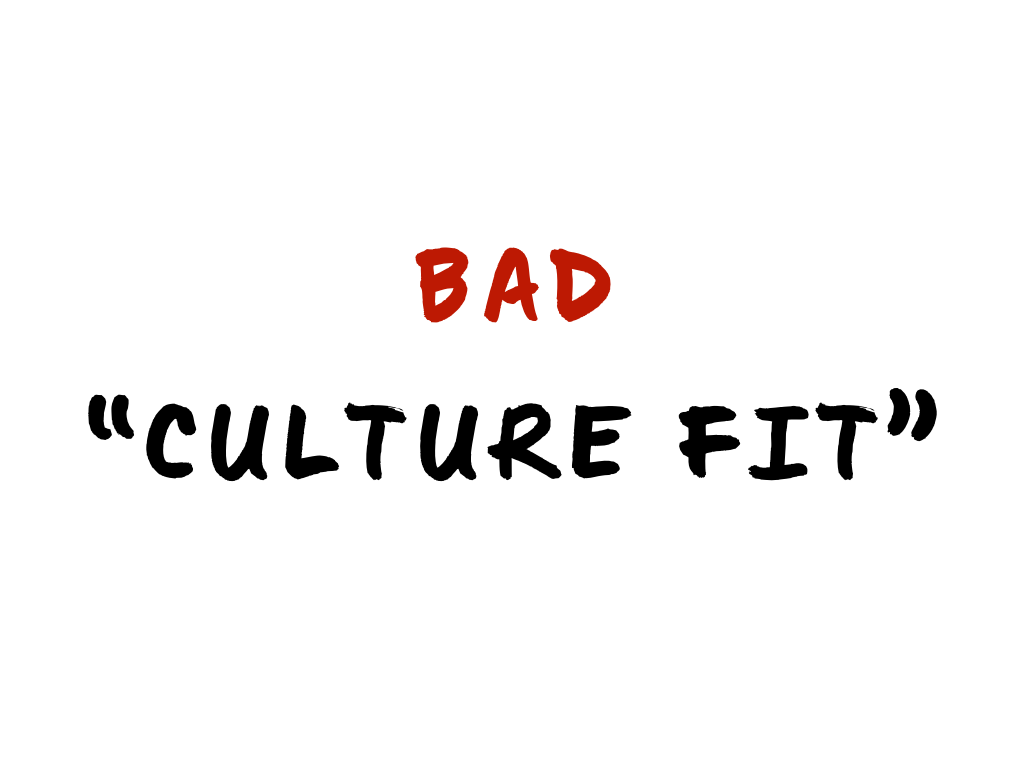
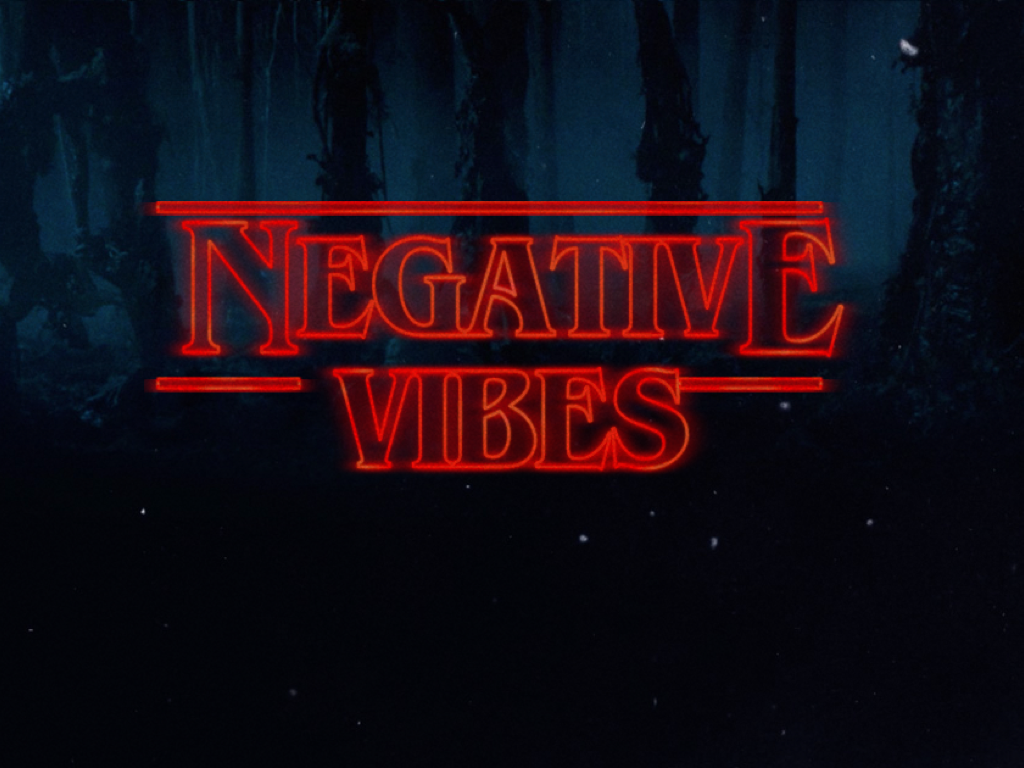

I didn't really know what this meant, so I asked for examples.
They couldn't give me any. They just repeated the phrase...
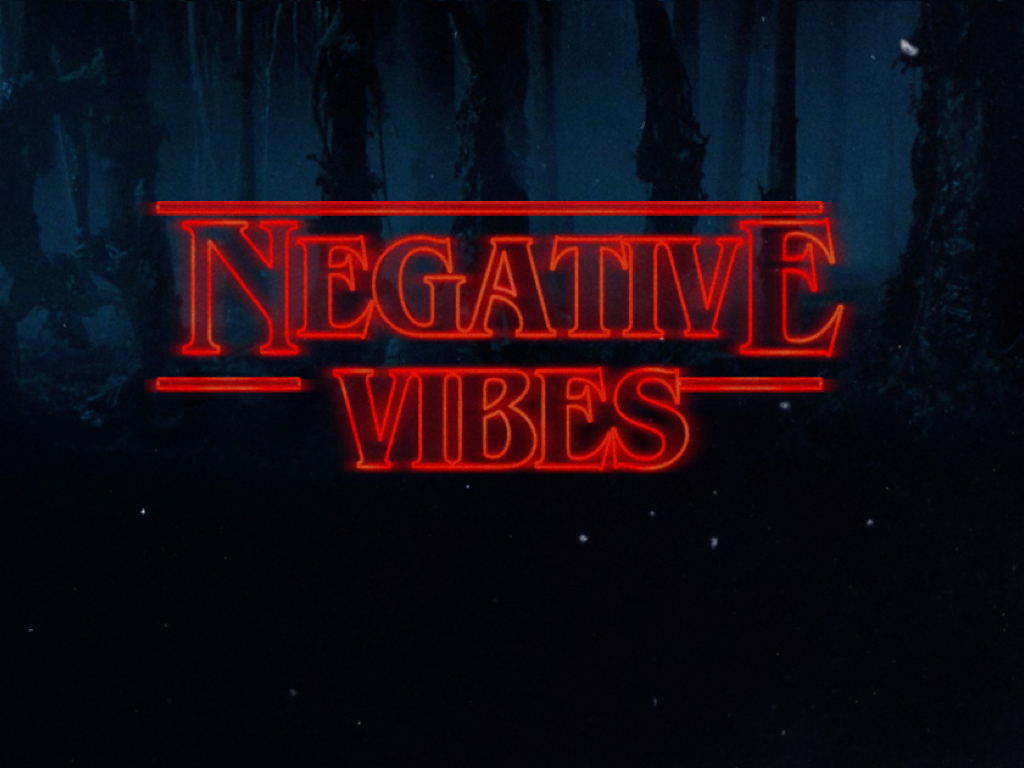

So I asked for actions I could take to improve the vibes.
Again, they could give me none. They just kept repeating this phrase...
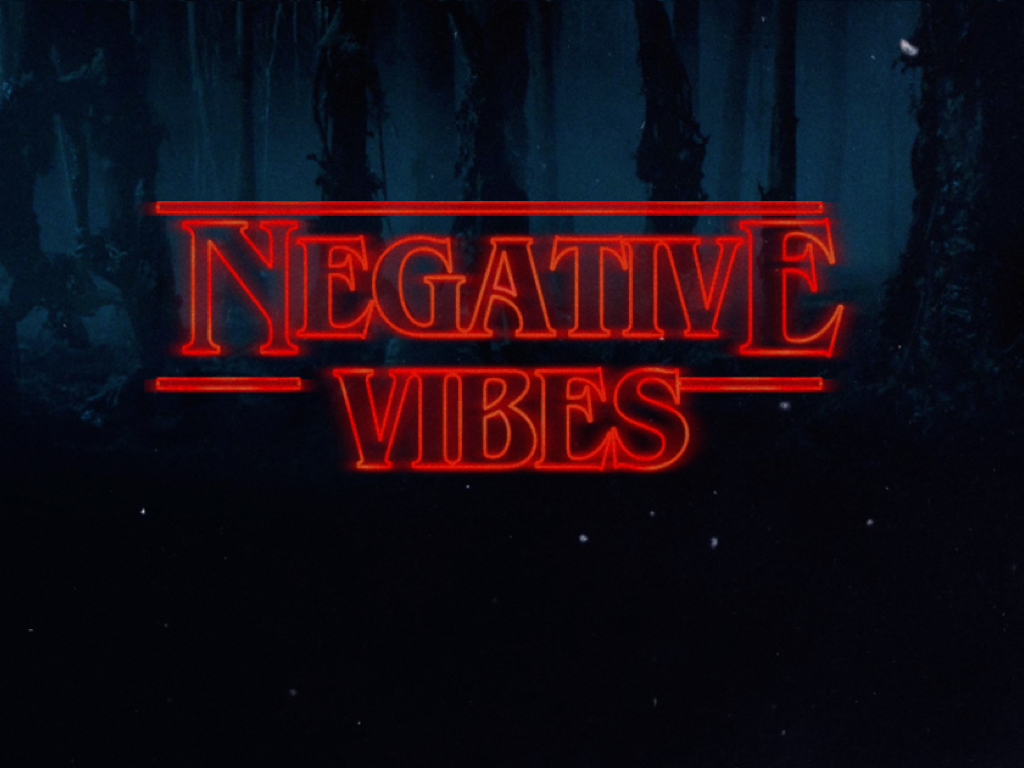
Negative vibes. Negative vibes.
Finally, the conversation continued, and I got a sense of what they meant.
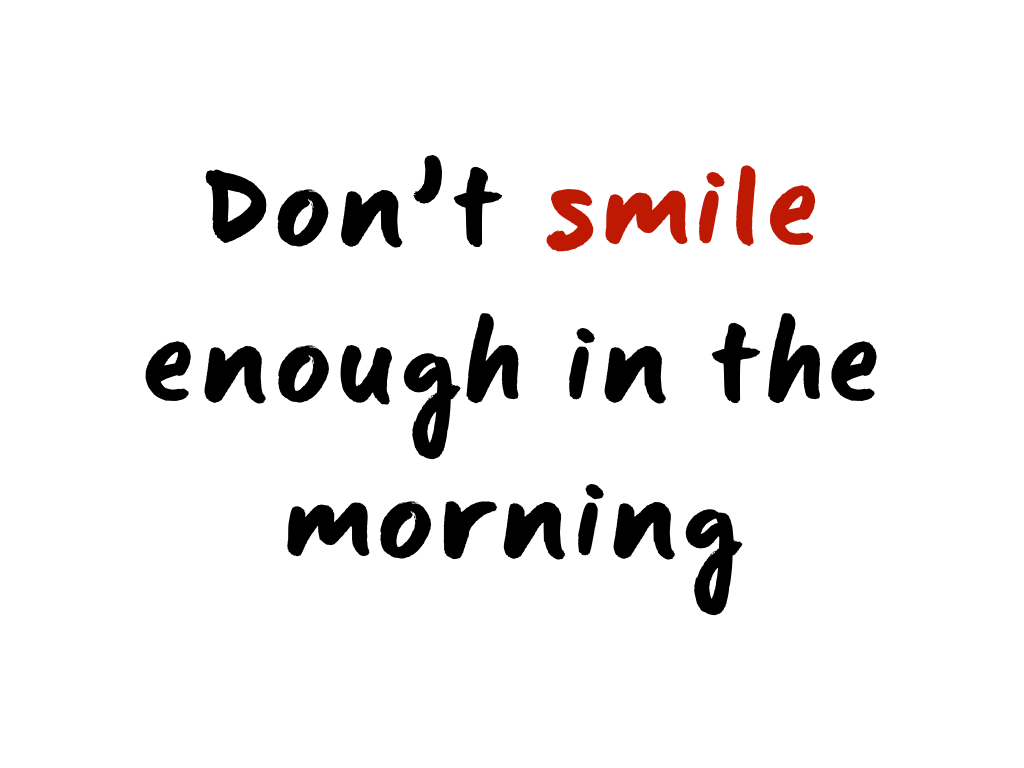
I was told I don't smile enough in the morning...before my first cup of coffee.
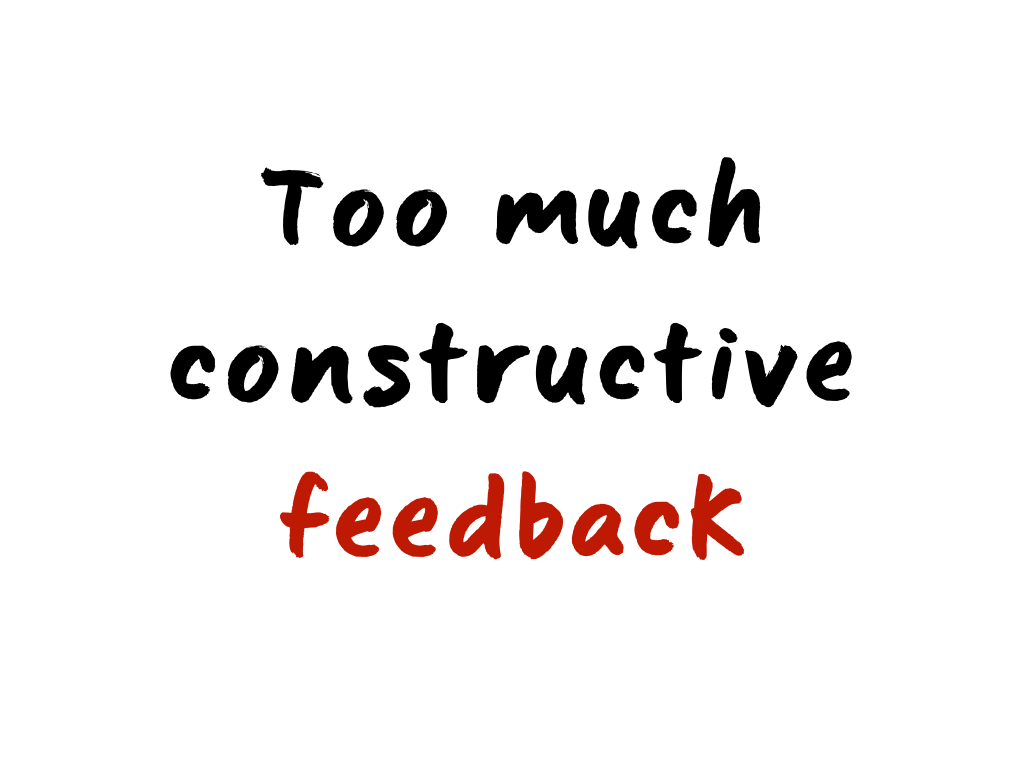
That I provided too much constructive feedback about ways to improve the company and our product.
What they actually wanted was for me to tell them how good they were at their jobs. "Good CEO!"
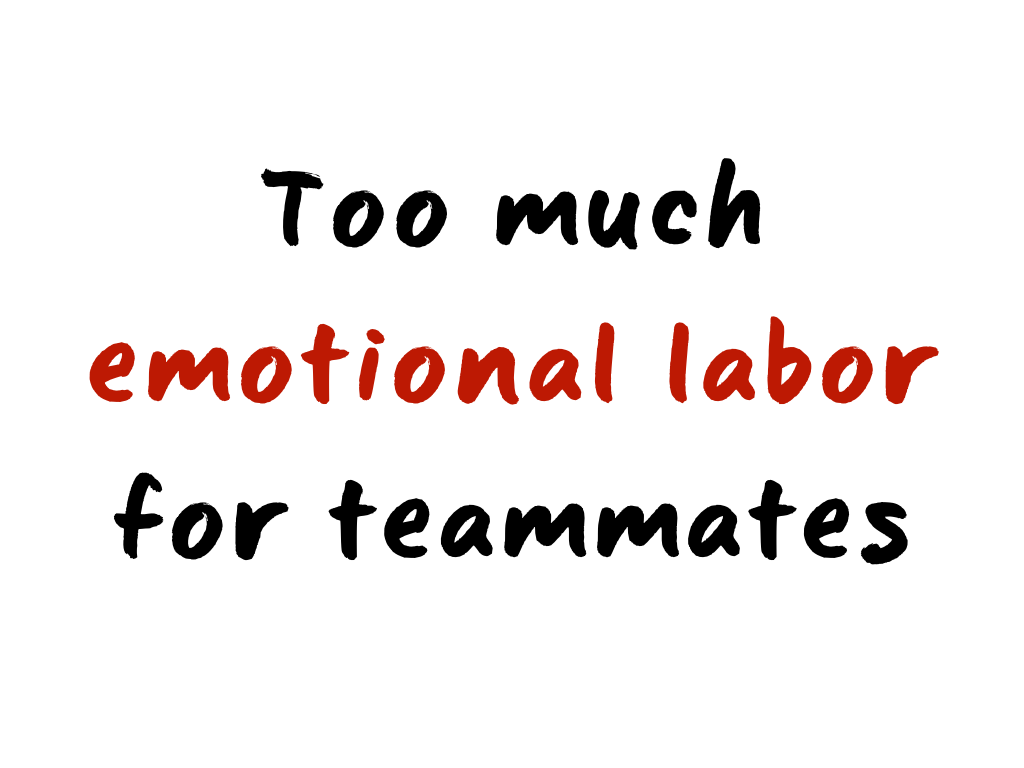
That I performed too much emotional labor for my teammates, especially the juniors on the team who I was concerned were not getting enough support.
What they actually wanted was for me to perform emotional labor for the founders.

That I was entitled for expecting professional behavior at work, like asking the founders not to joke about our lack of human resources when one of my coworkers was upset.
And last and most important to them...
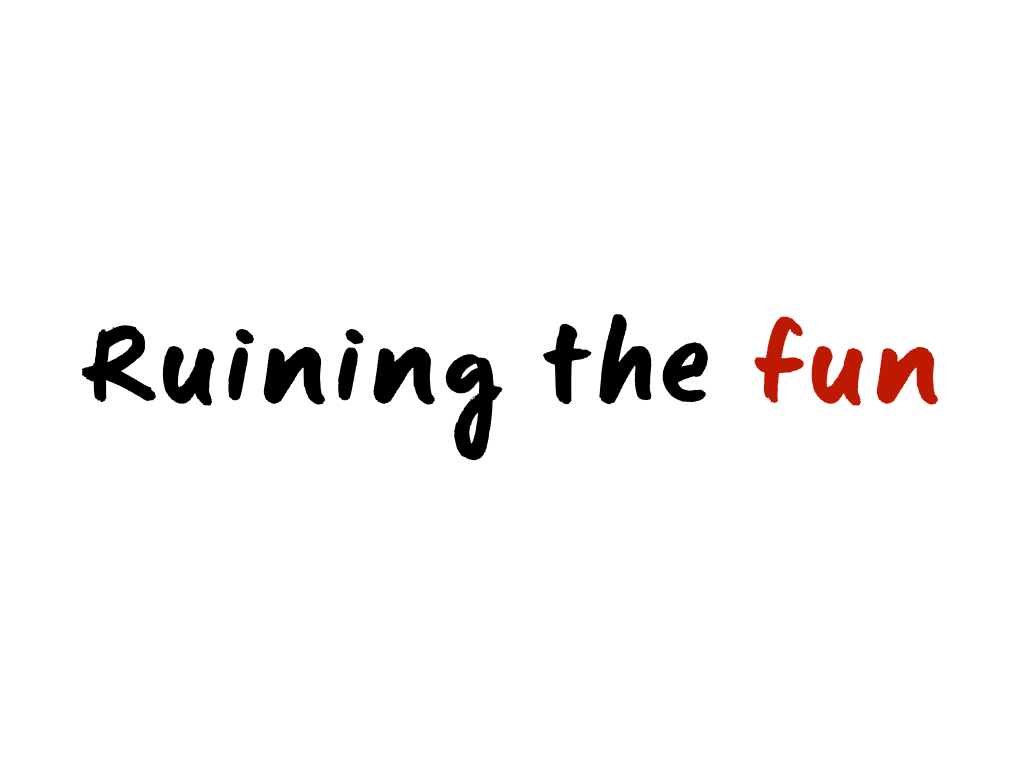
I was ruining the fun, and the fun was the most important part of the startup for them. Not succeeding. Not building a great product or serving our customers. The founders having fun.
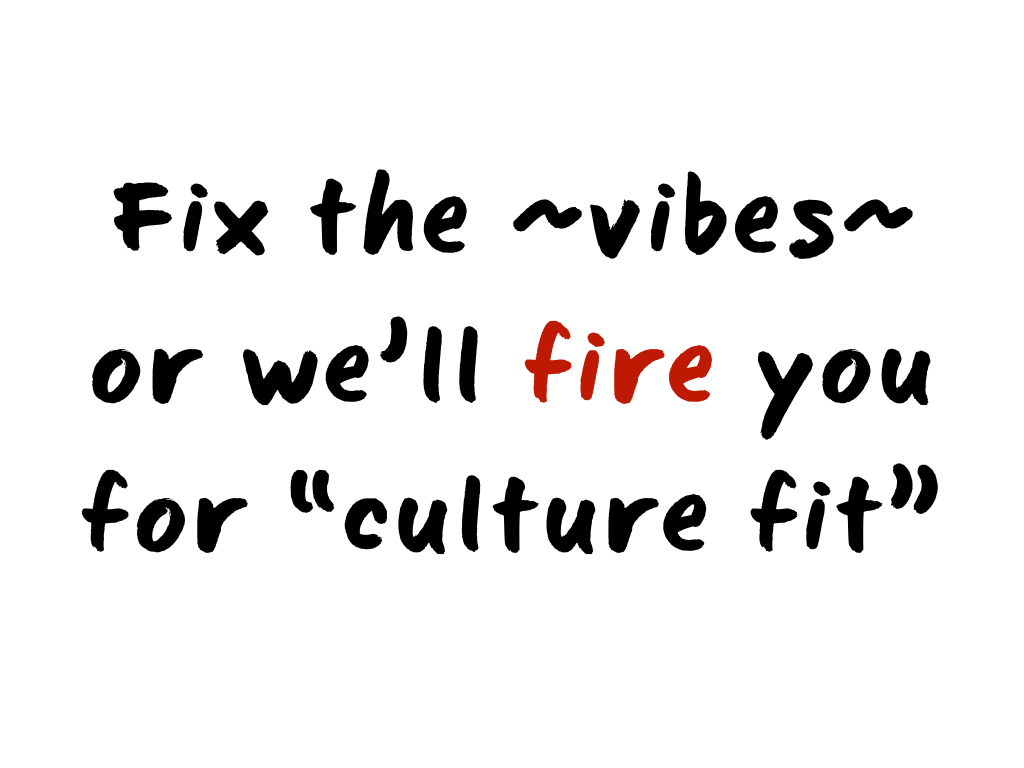
I was told I had roughly a month to fix my vibes or they would fire me for "culture fit."

So I fucking quit my job!
This brings me to my last, most controversial, and, admittedly, most privileged advice, which is...
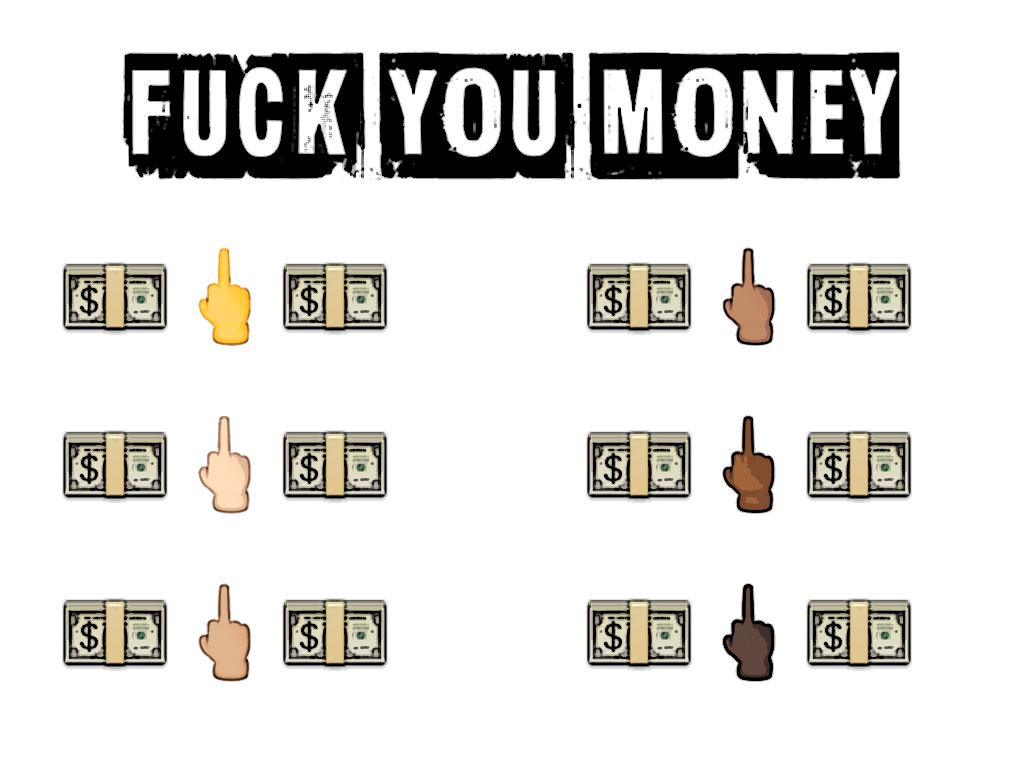
...save some "fuck you money," so you have the ability to leave a bad situation.
One of the reasons that these attrition statistics exist is that people are stuck in broken, terrible, harmful situations for far longer than they can handle because they can't afford to leave. Eventually, those situations break them, and then they're gone. Forever. That's it. Giving yourself the ability to leave a bad situation could help you sustain yourself longer in this industry.
I want to remind you that one of the few forms of power you have in this capitalist system is the ability to...
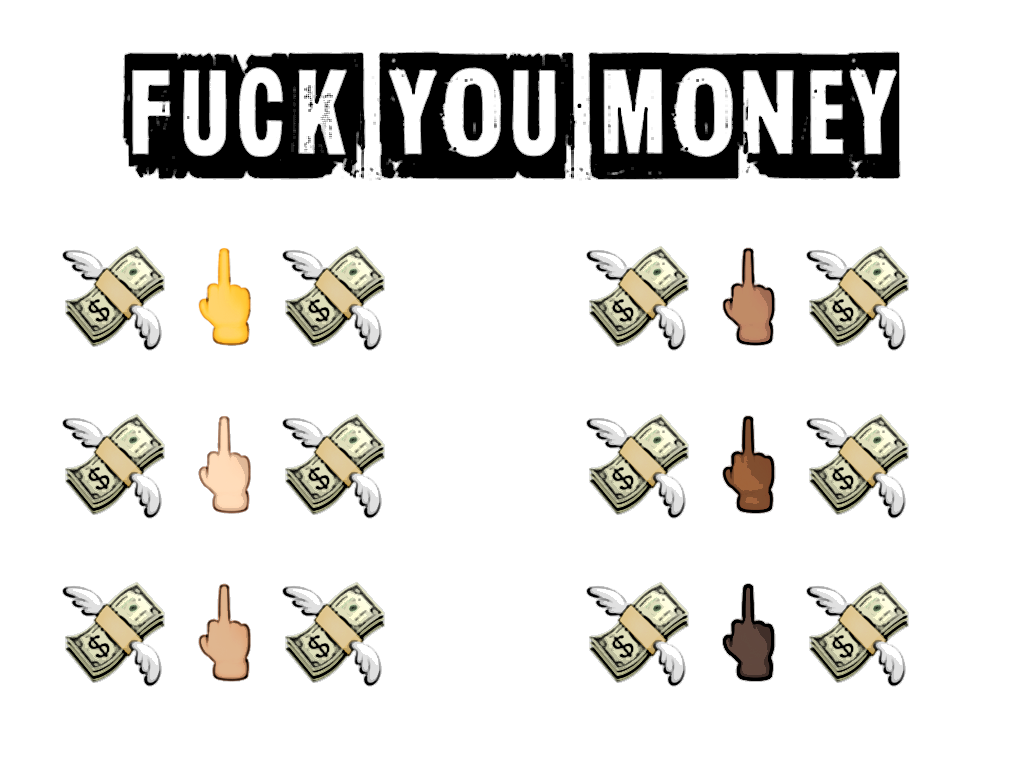
...remove your labor.
This money isn't just for quitting your job.
You might need this money to take care of yourself and your family when you get fired for being different because people get fired for "culture fit" more often than anyone likes to talk about.
Or maybe you use this money to start your own business because you don't want to leave tech, but if you have to work for one more asshole, THAT'S IT.
Or maybe, you use this money to develop new skills, so you can leave because becoming an attrition statistic when you grow up isn't the worst thing when the system is this broken.
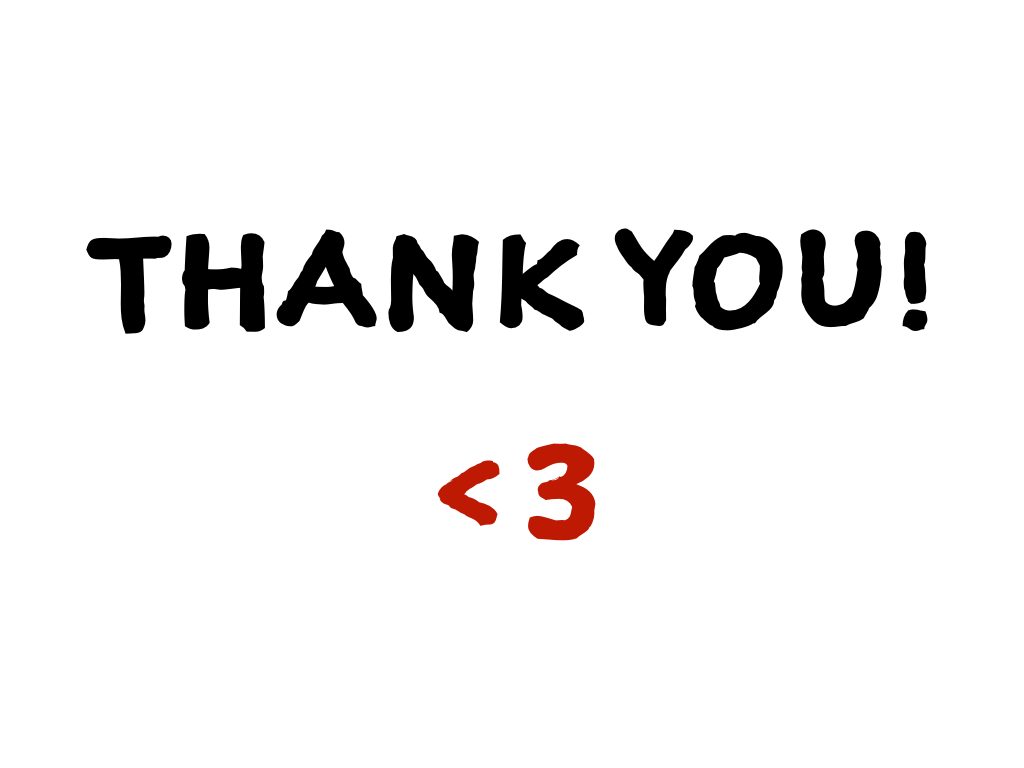
Thank you! <3
insert mic drop here
(I did not actually drop the microphone because I was afraid of breaking something, but I really wanted to.)
Attribution
- Lungs by Sergey Demushkin from the Noun Project (modified, colors added)
- Liz Abinante for her tweet
- Stranger Things style "negative vibes" slides made with makeitstranger.com
- Thanks to this tutorial for helping me make my vector drawings look more hand drawn.
Additional reading
- If you want to know more about why I don't like Lean In, check out the storify from when I livetweeted reading it.
- I should probably put more stuff in here, but this is it for now because I'm tired after transcribing the talk and adding alt tags to 152 slides.